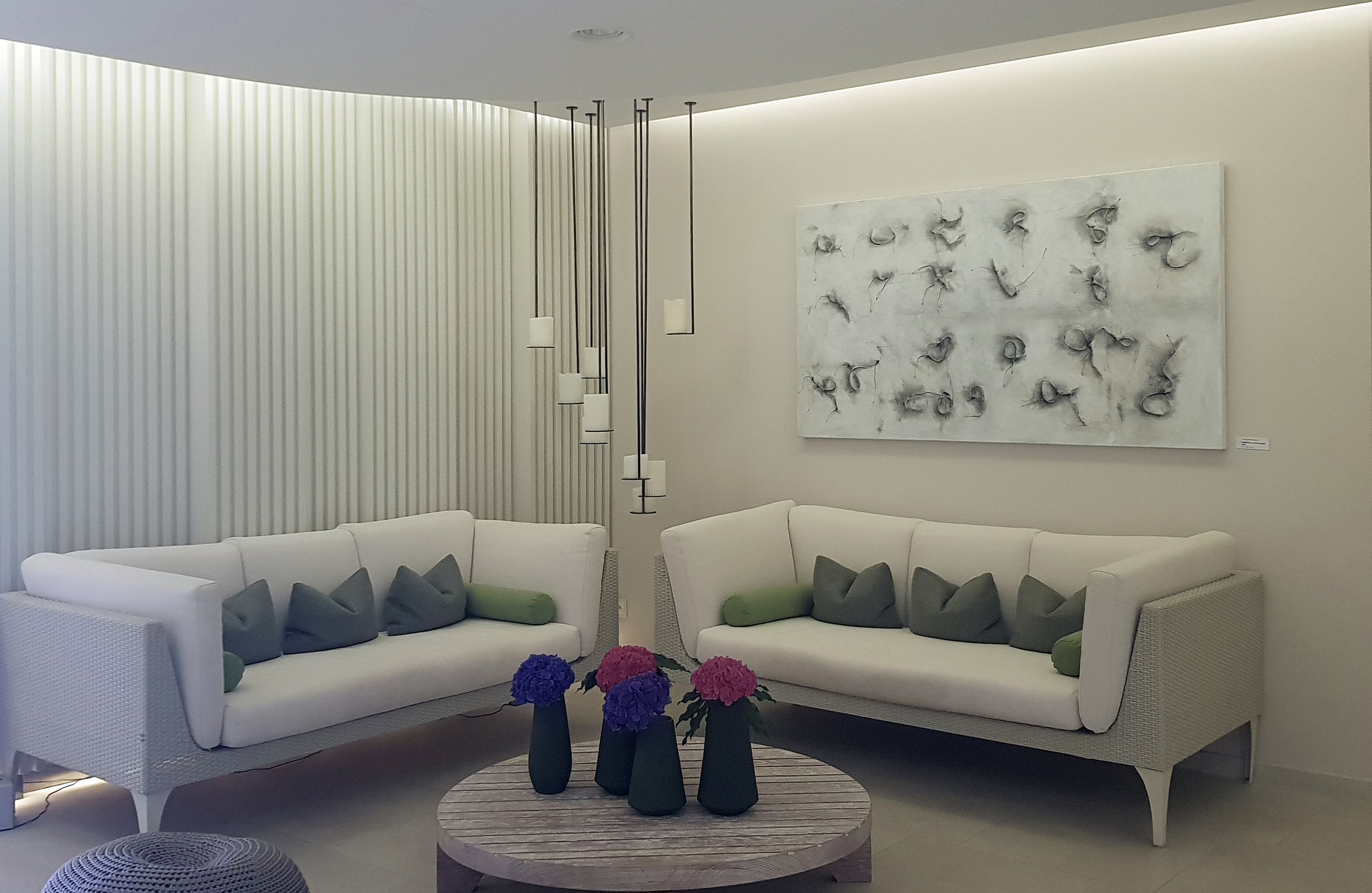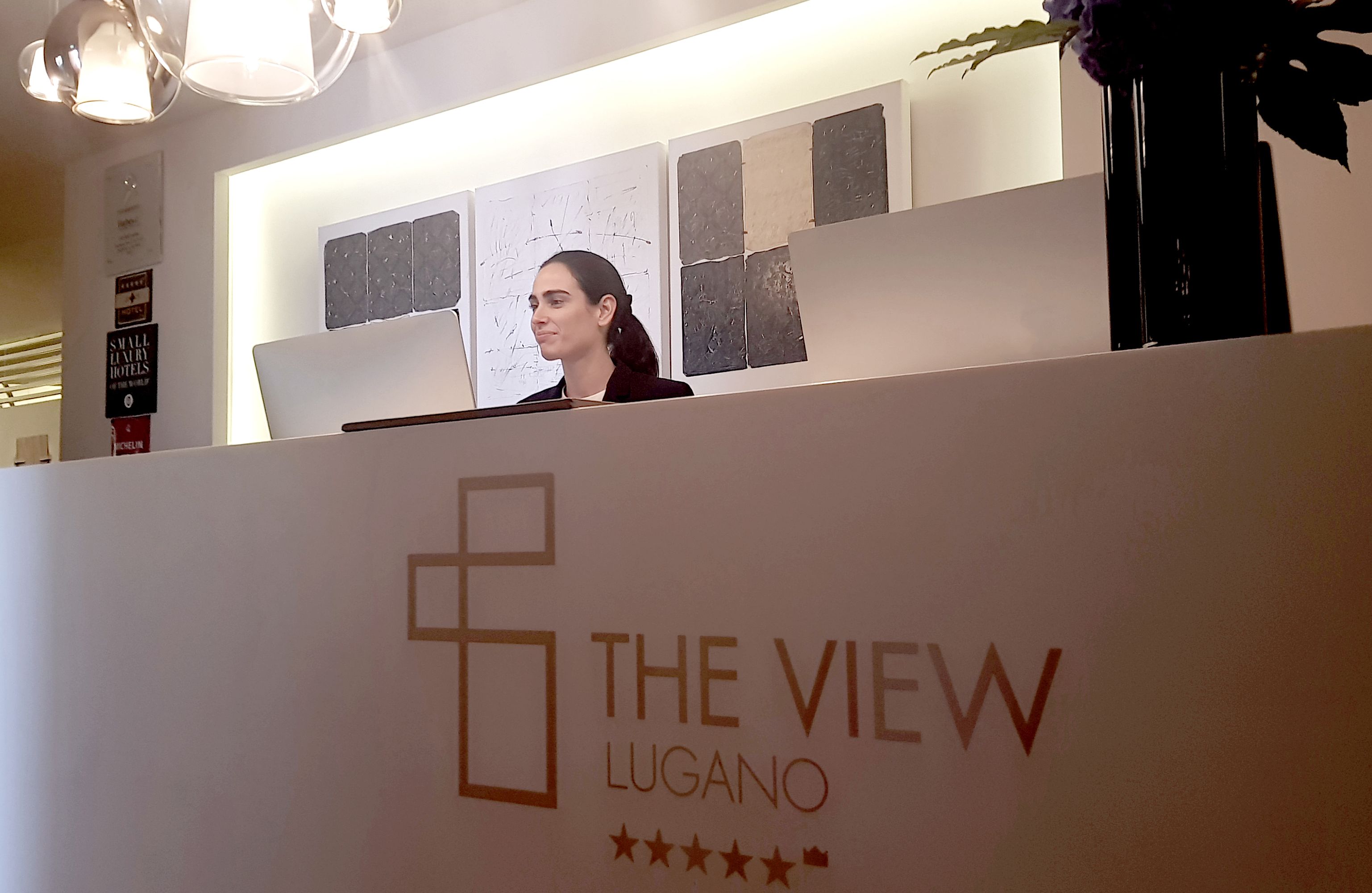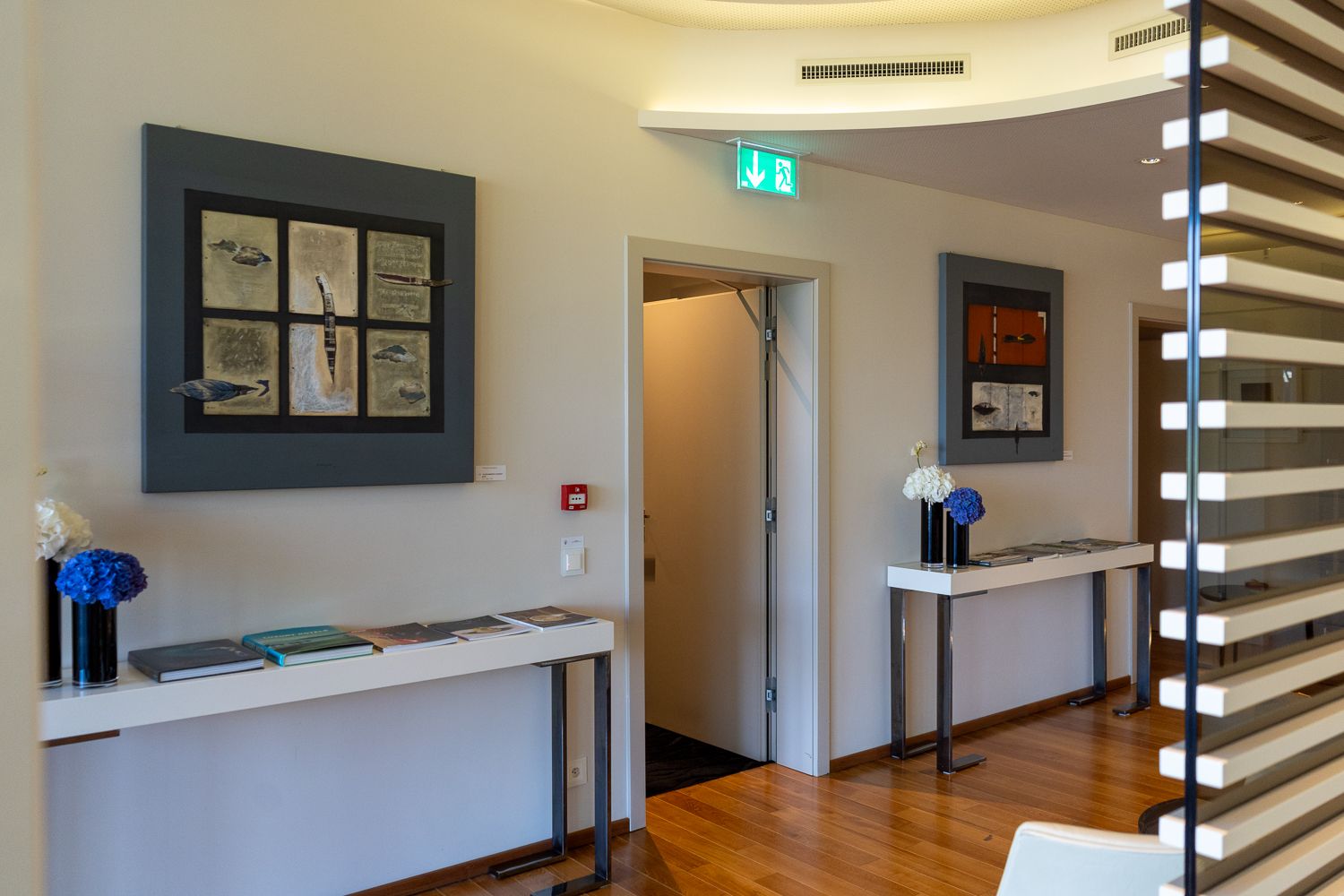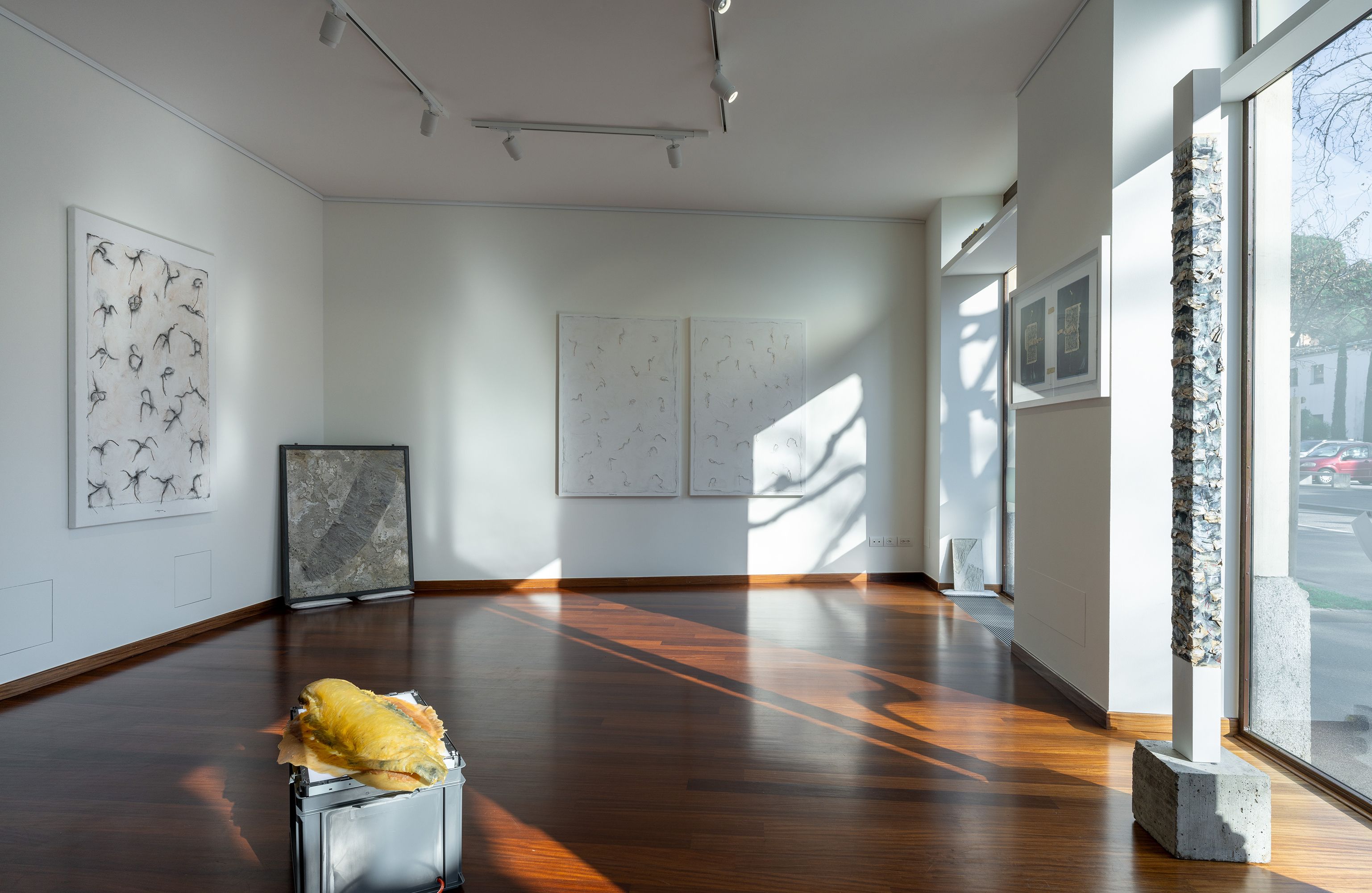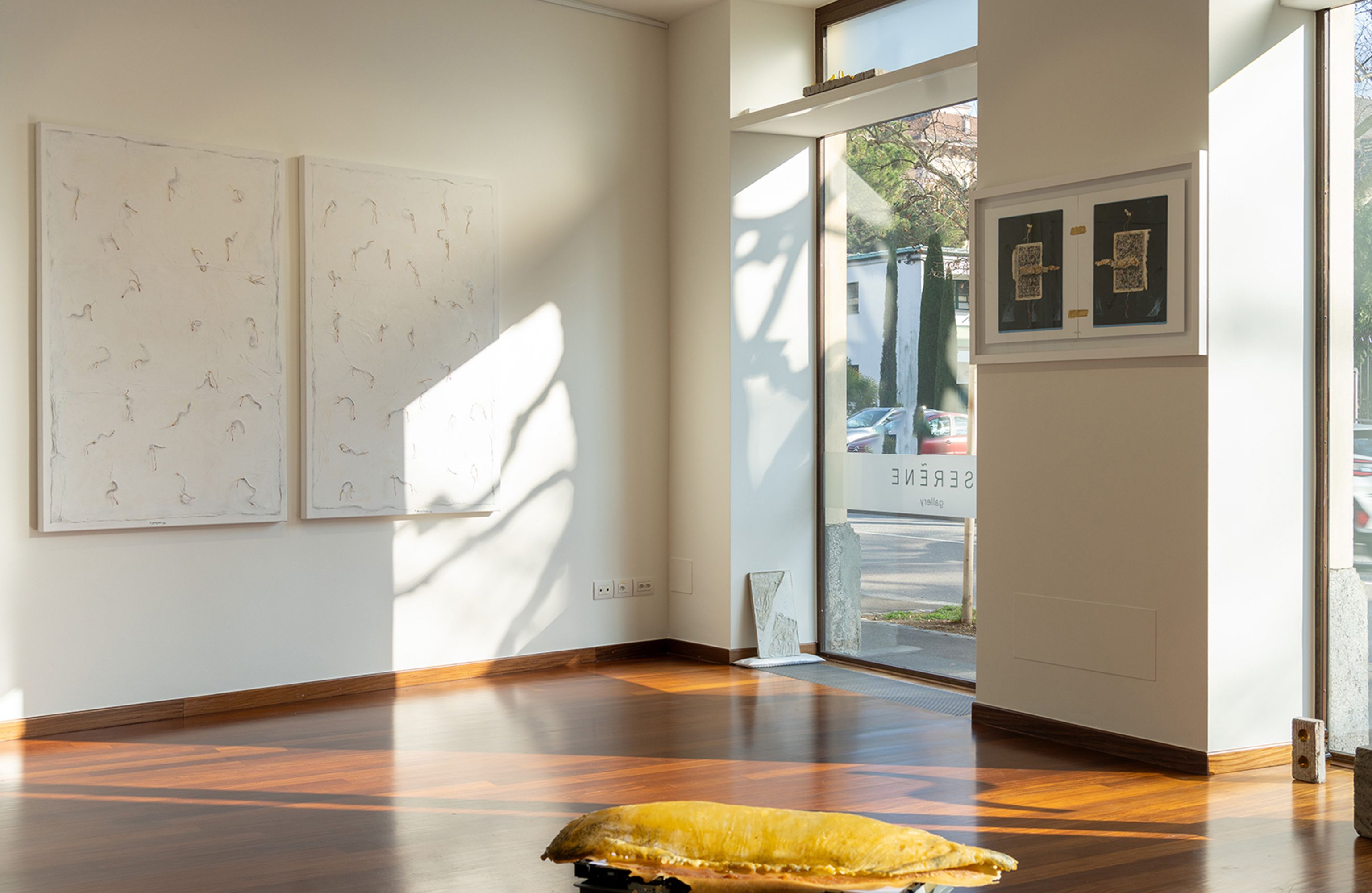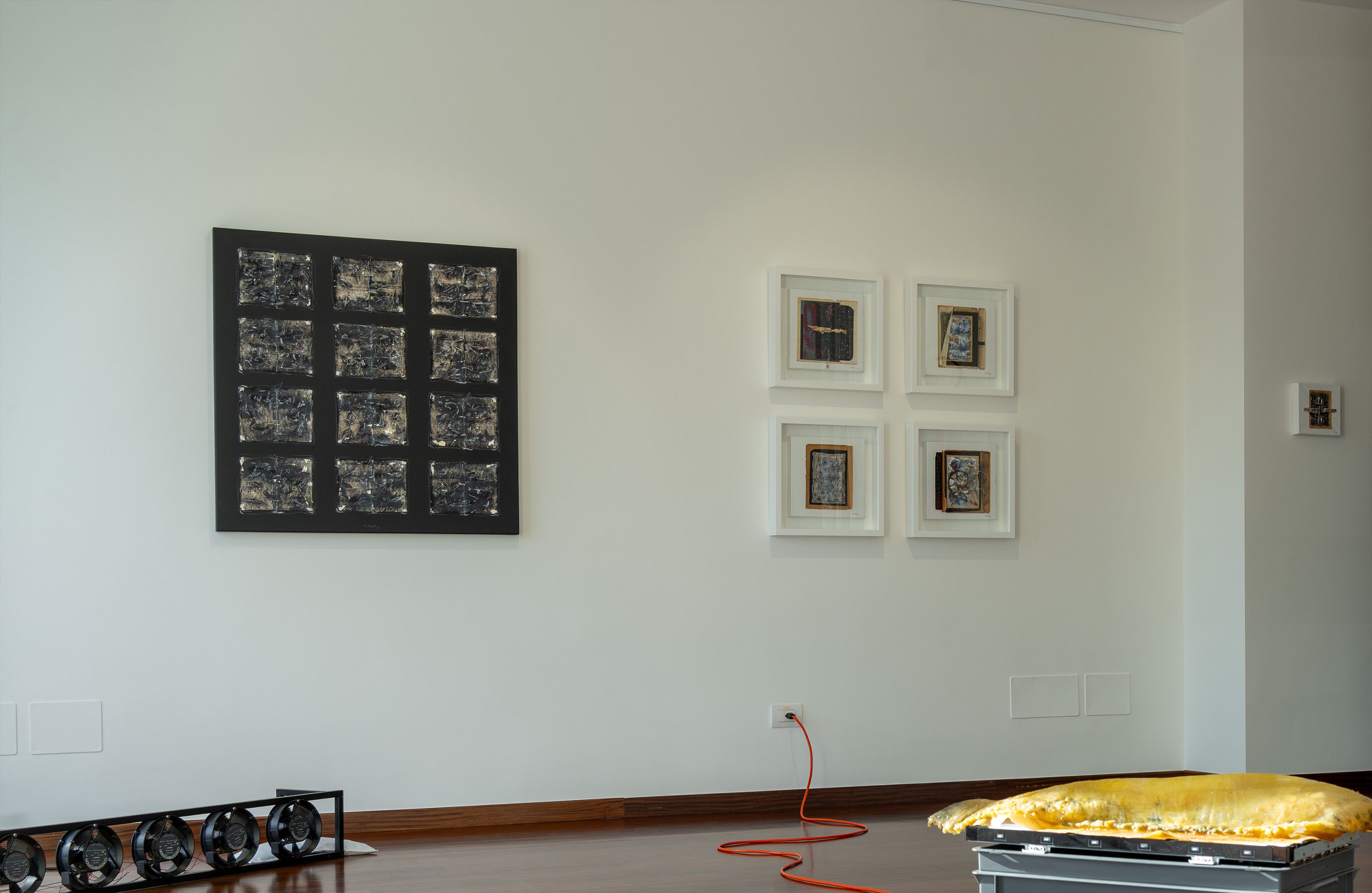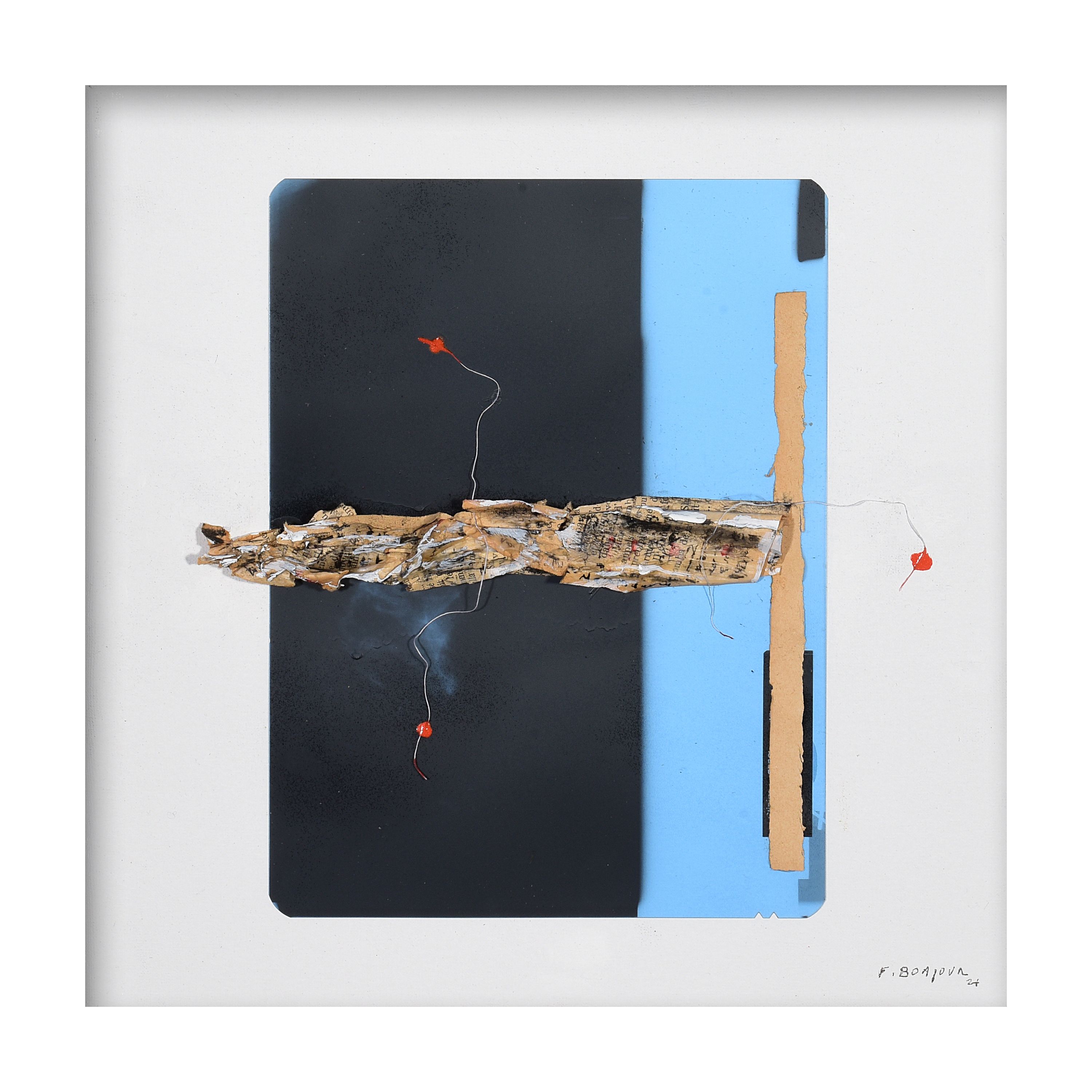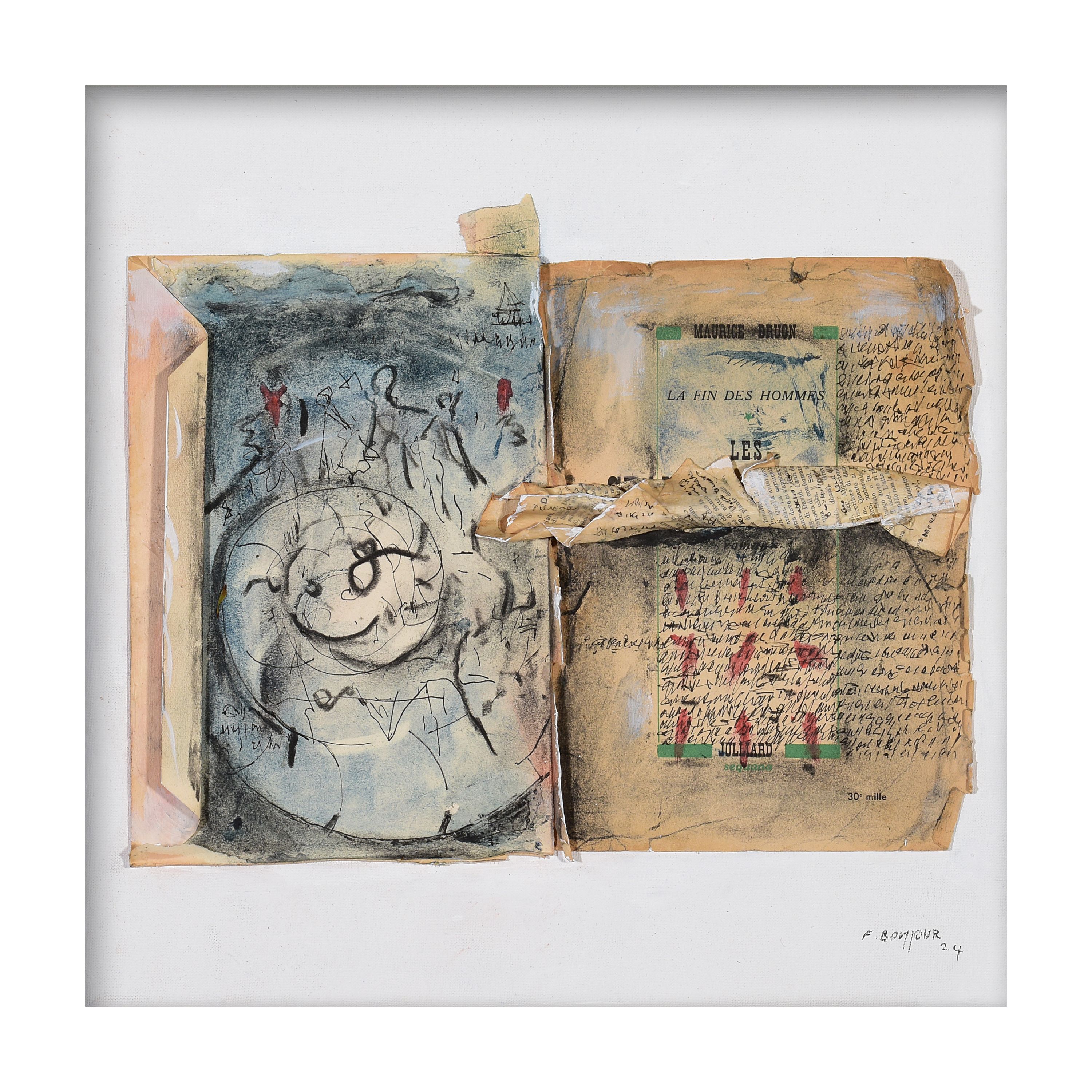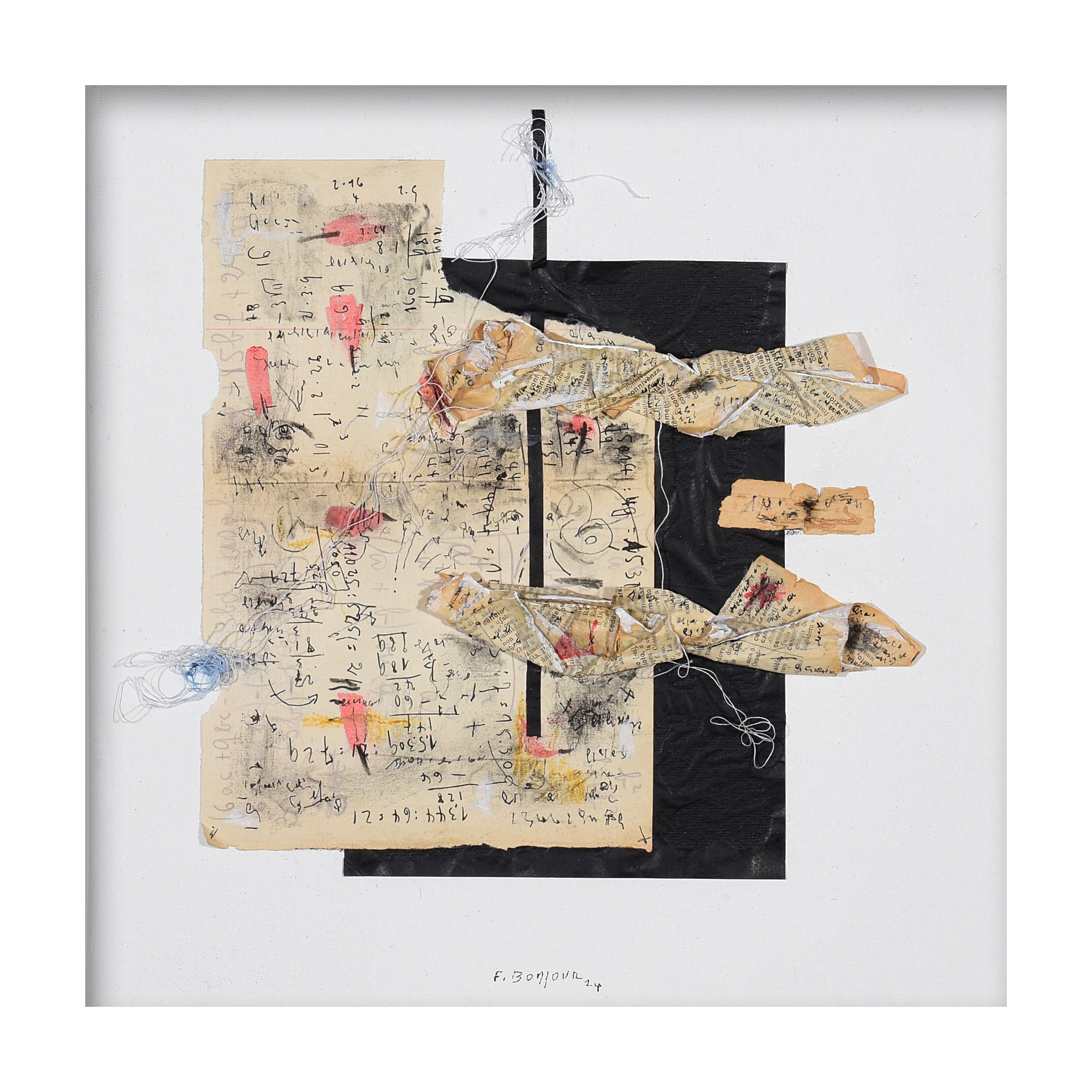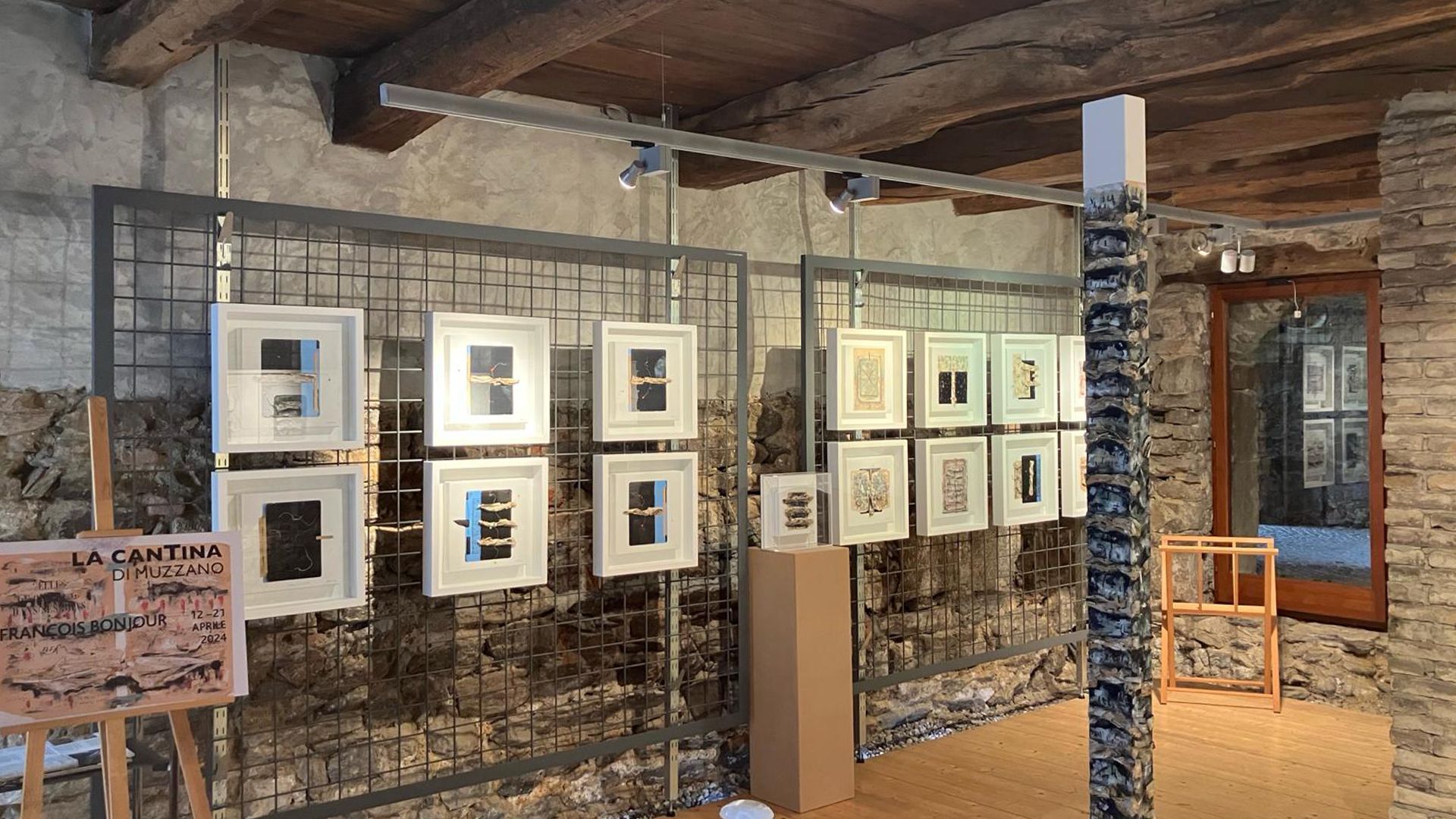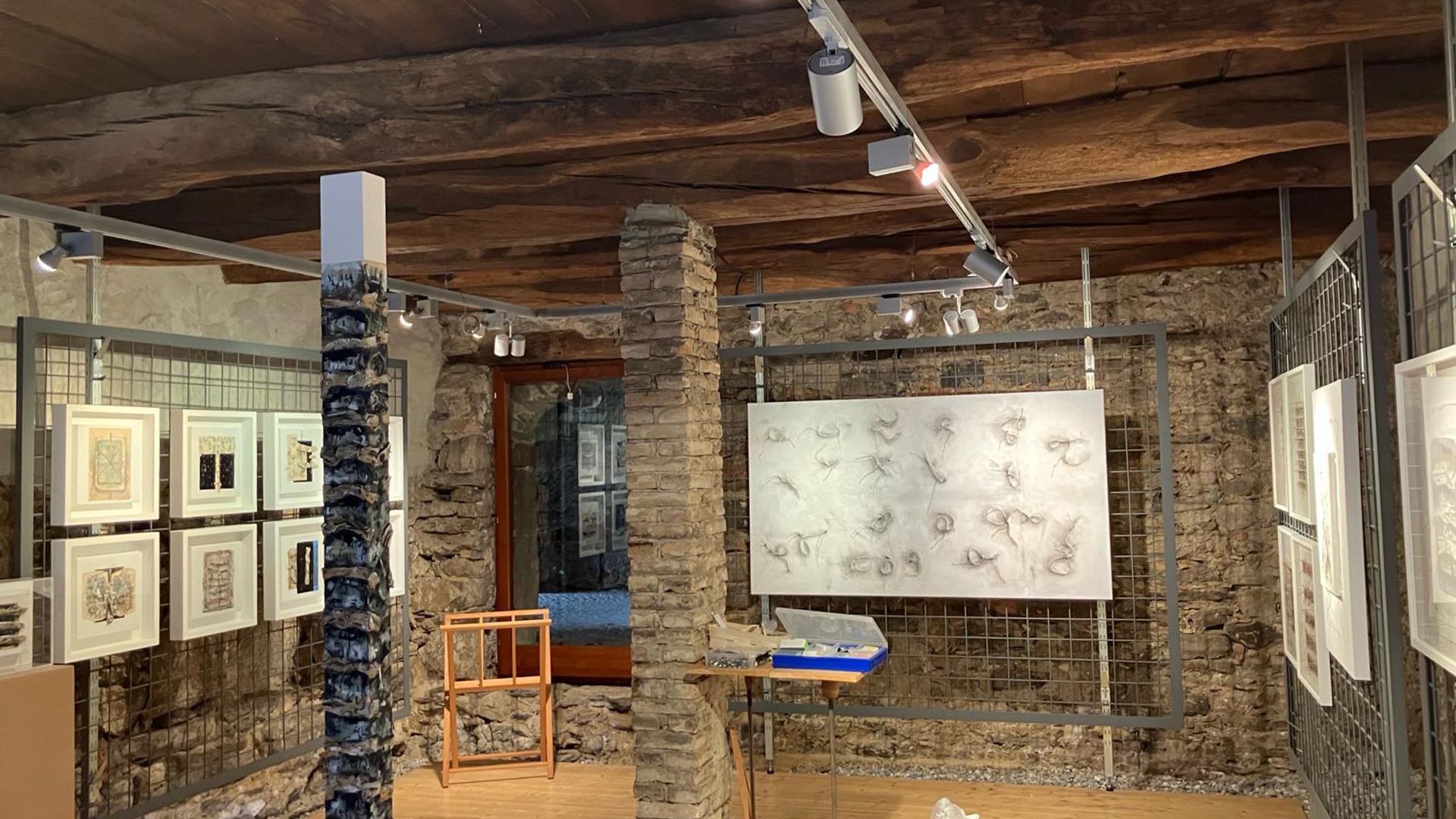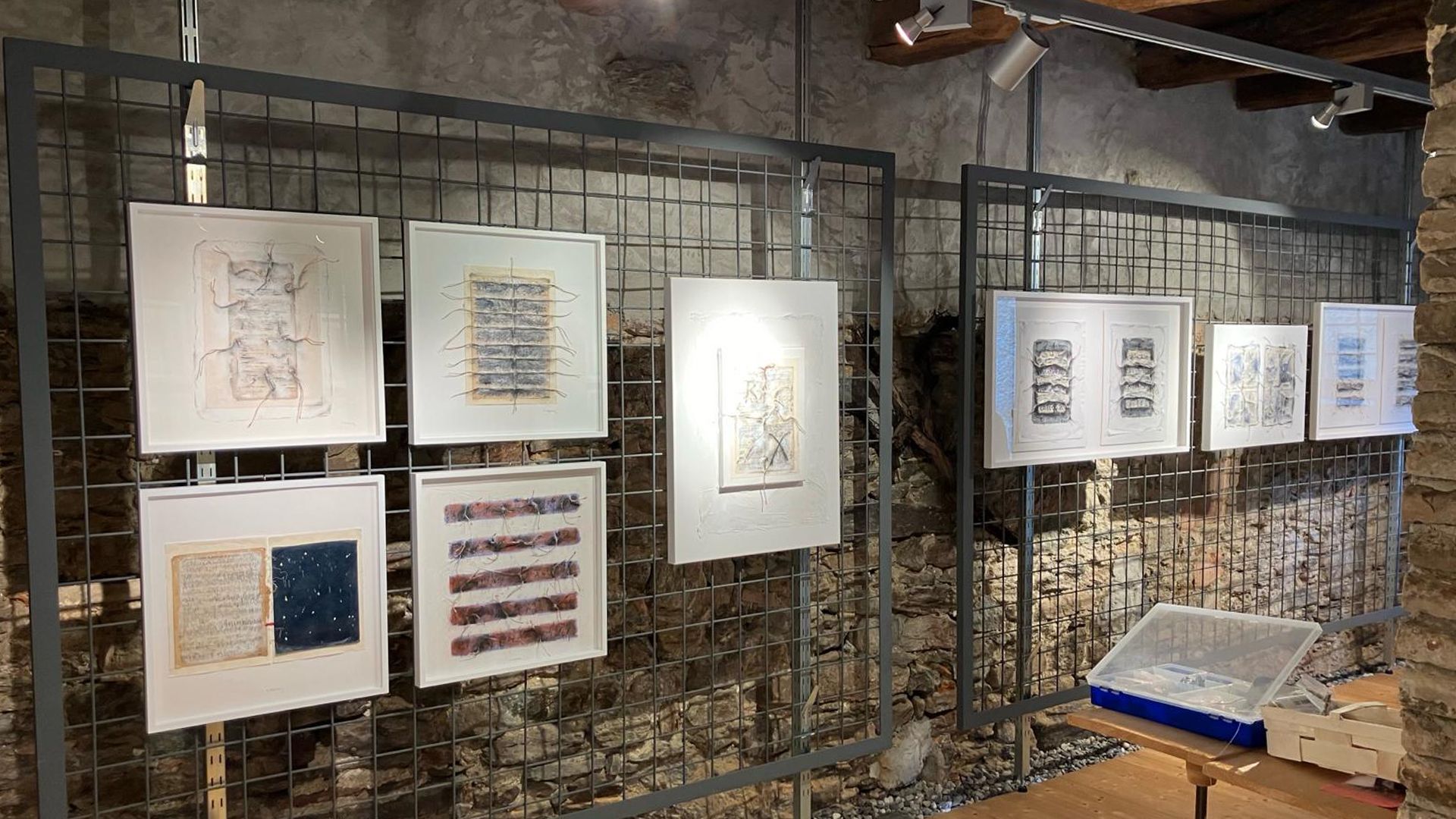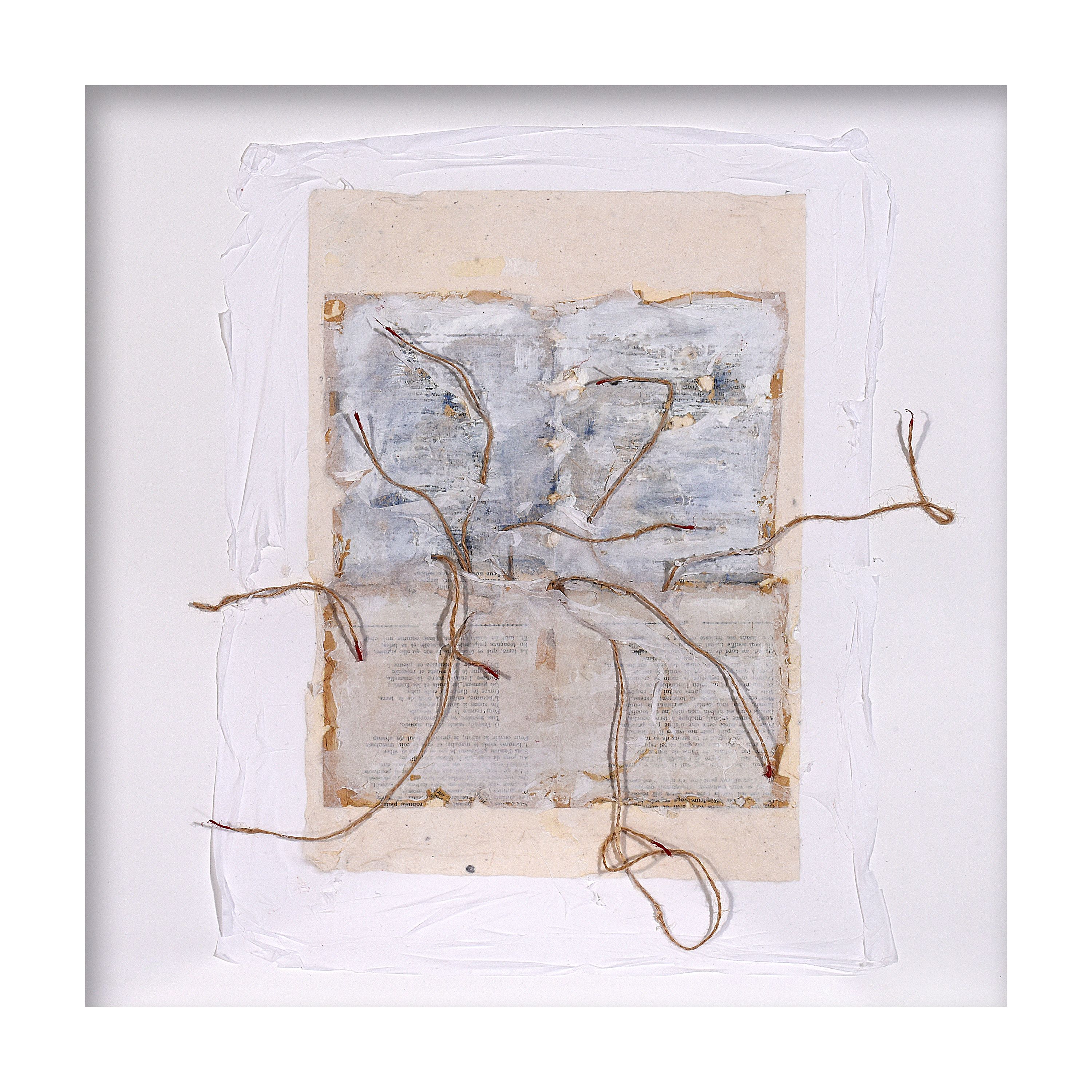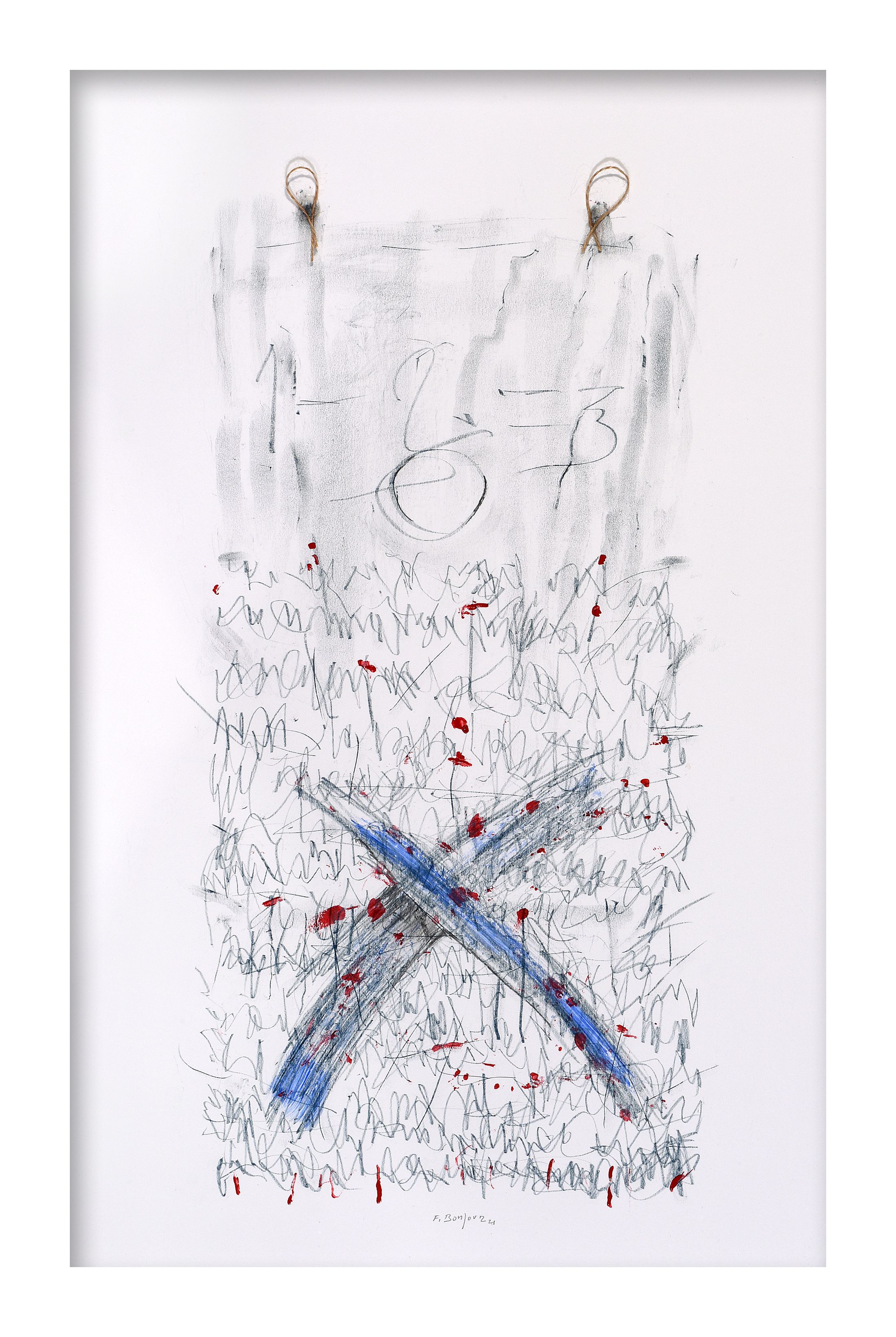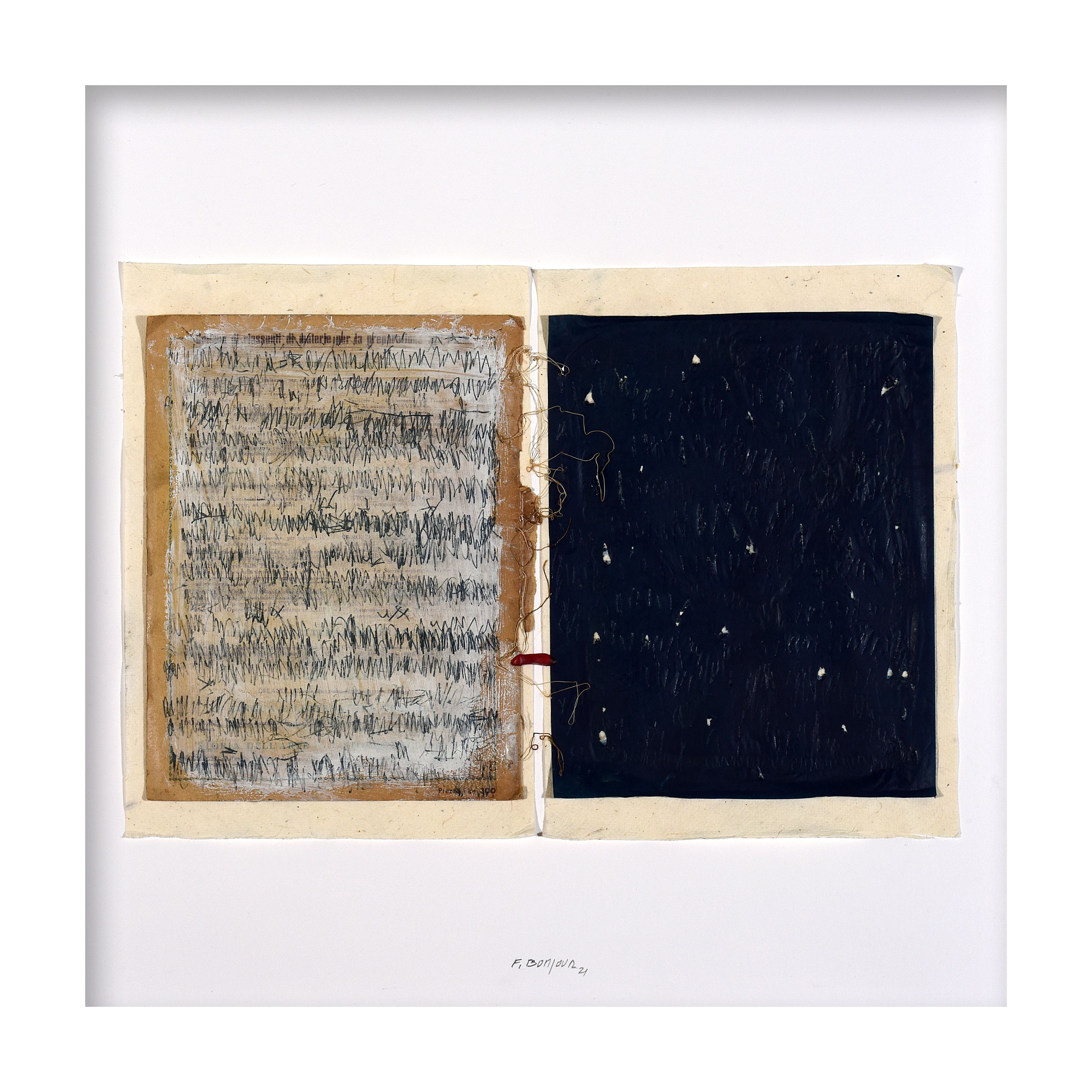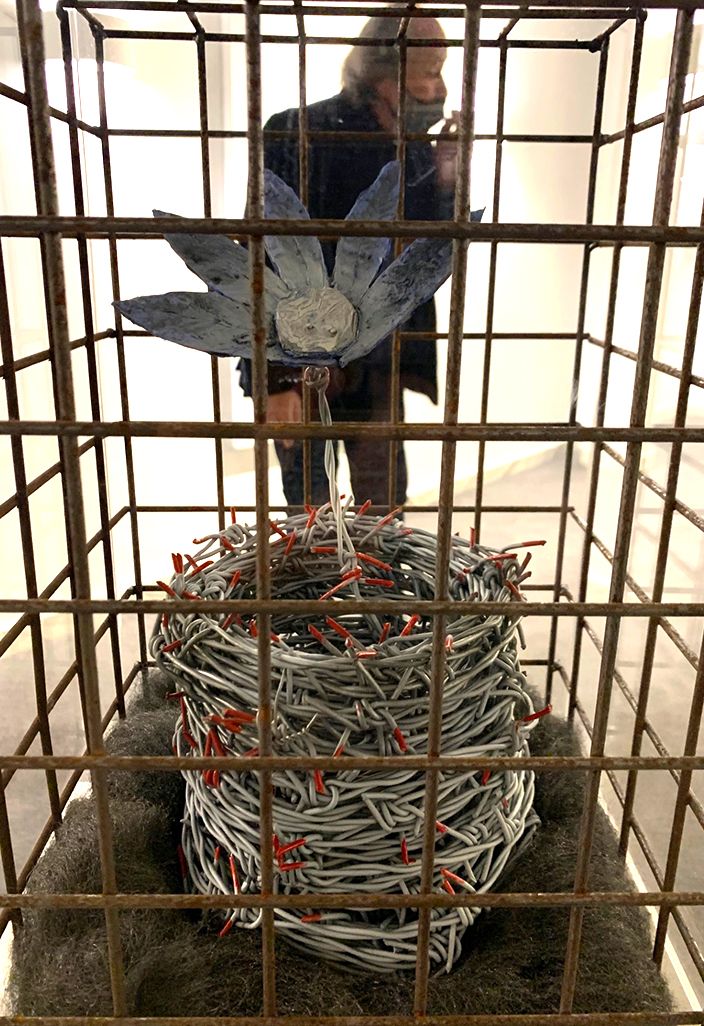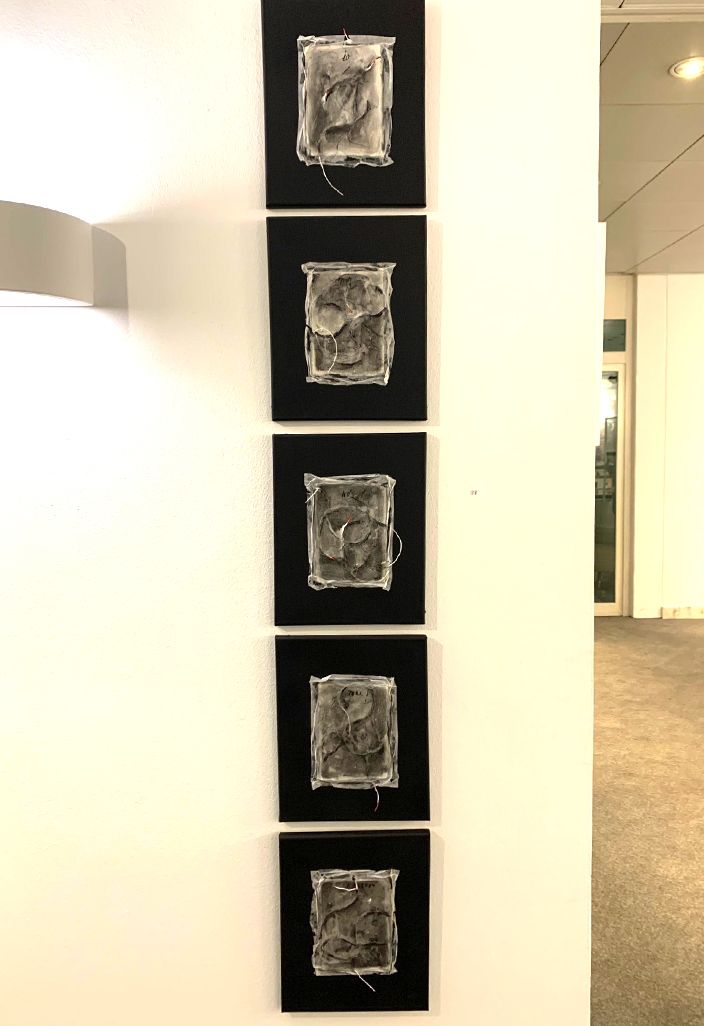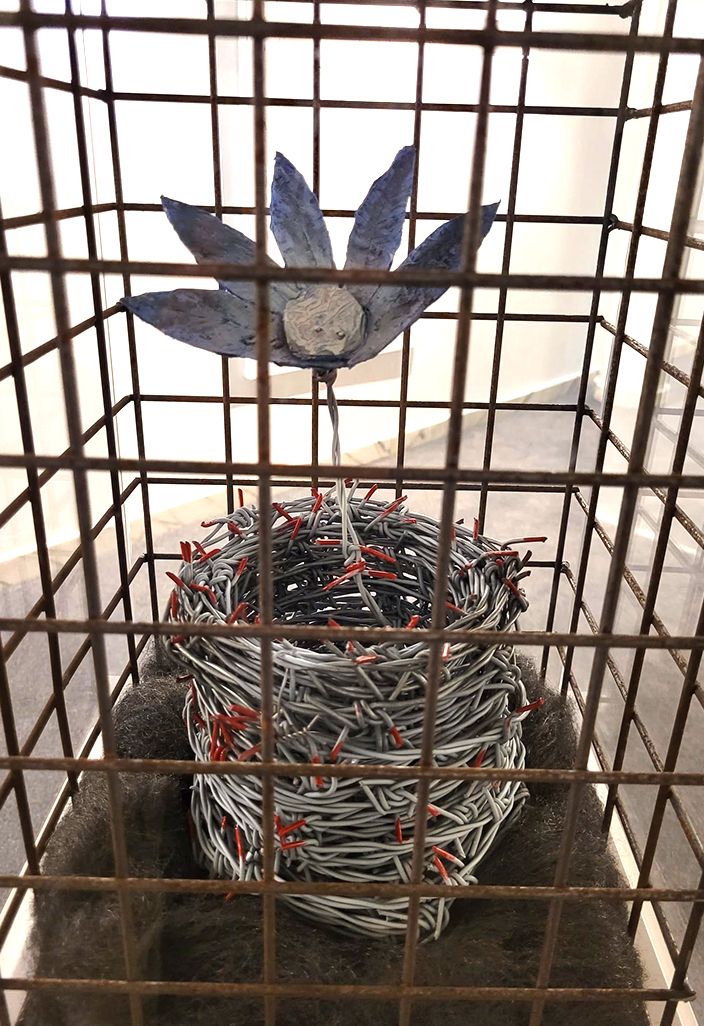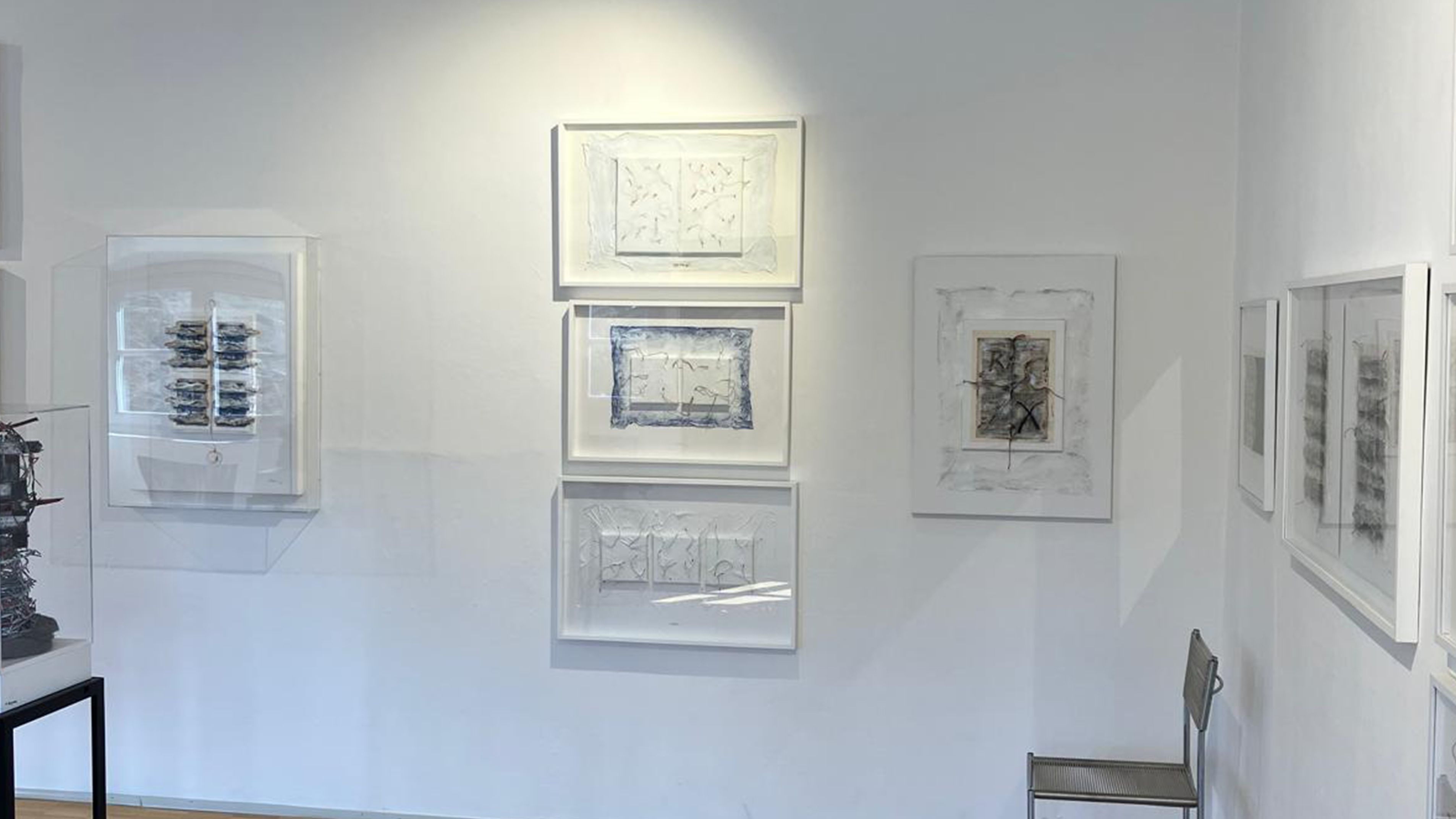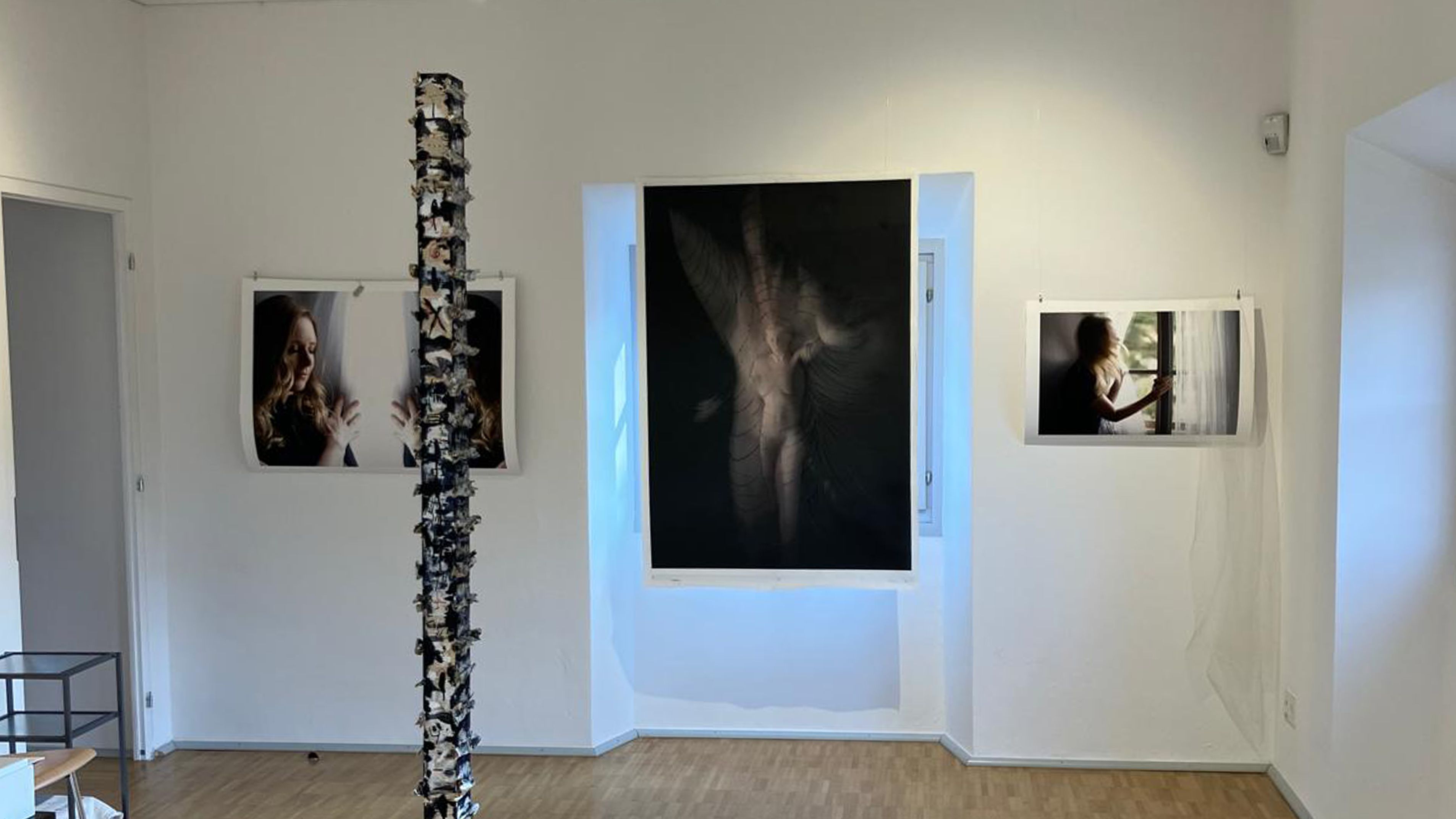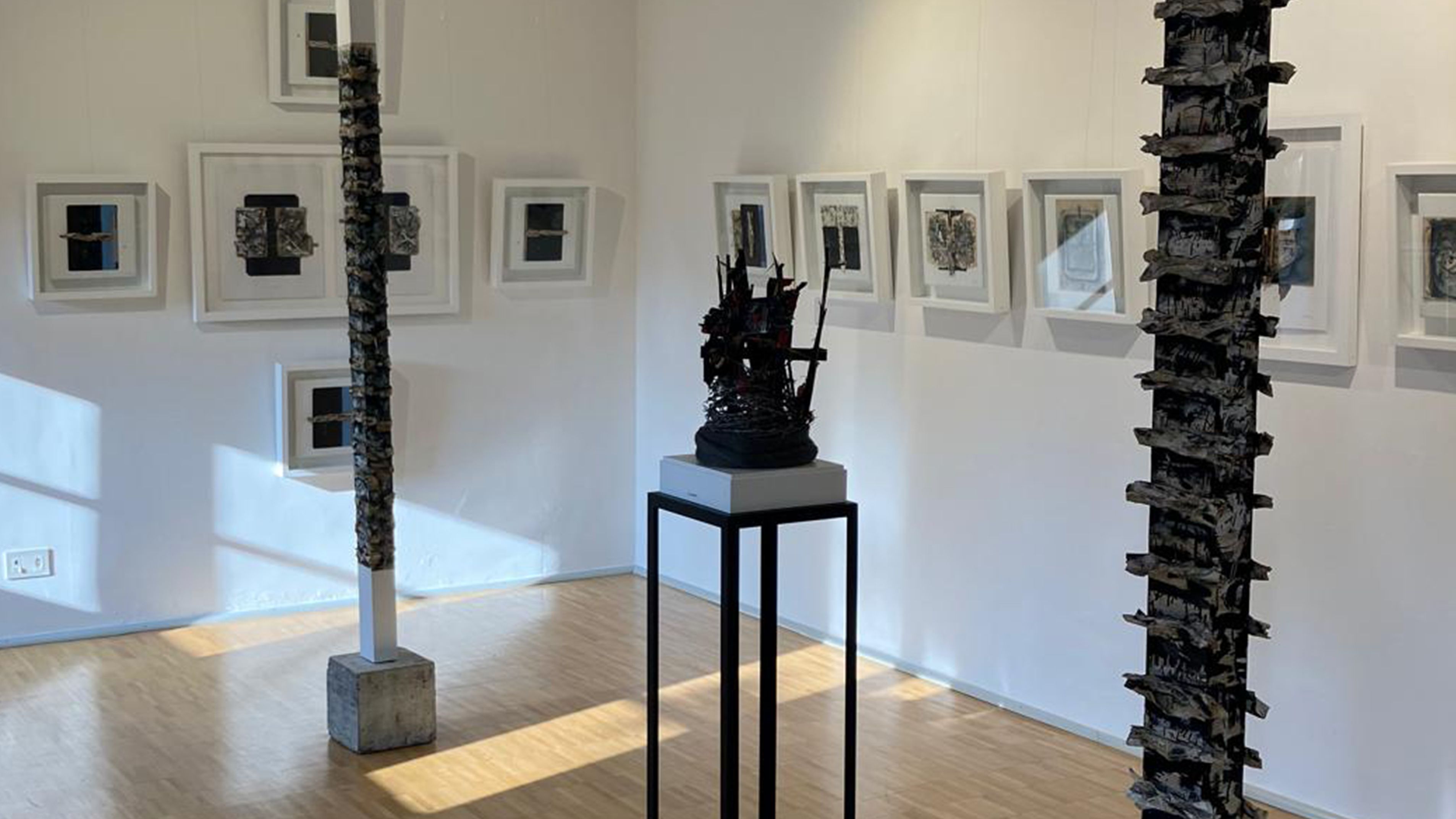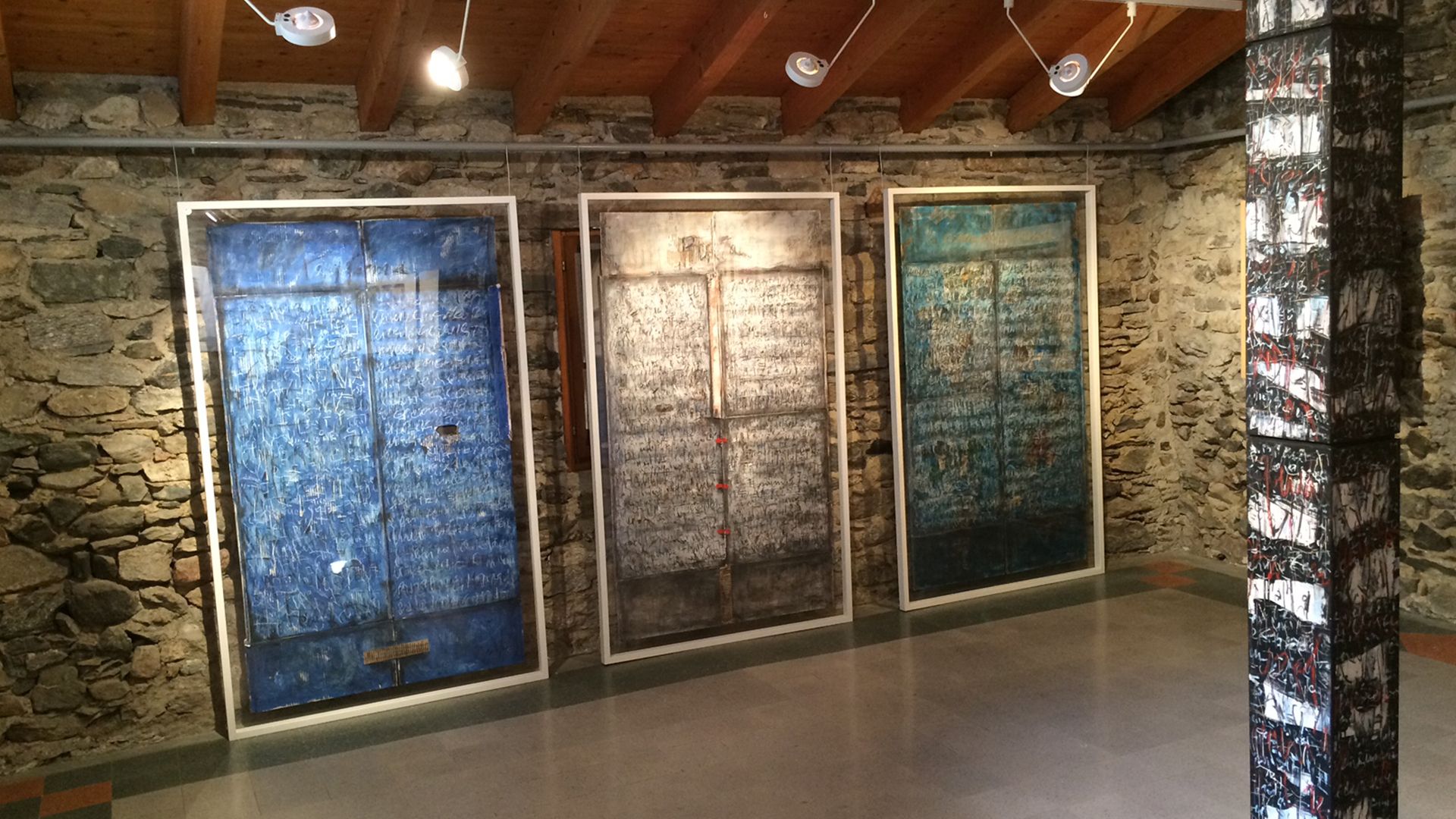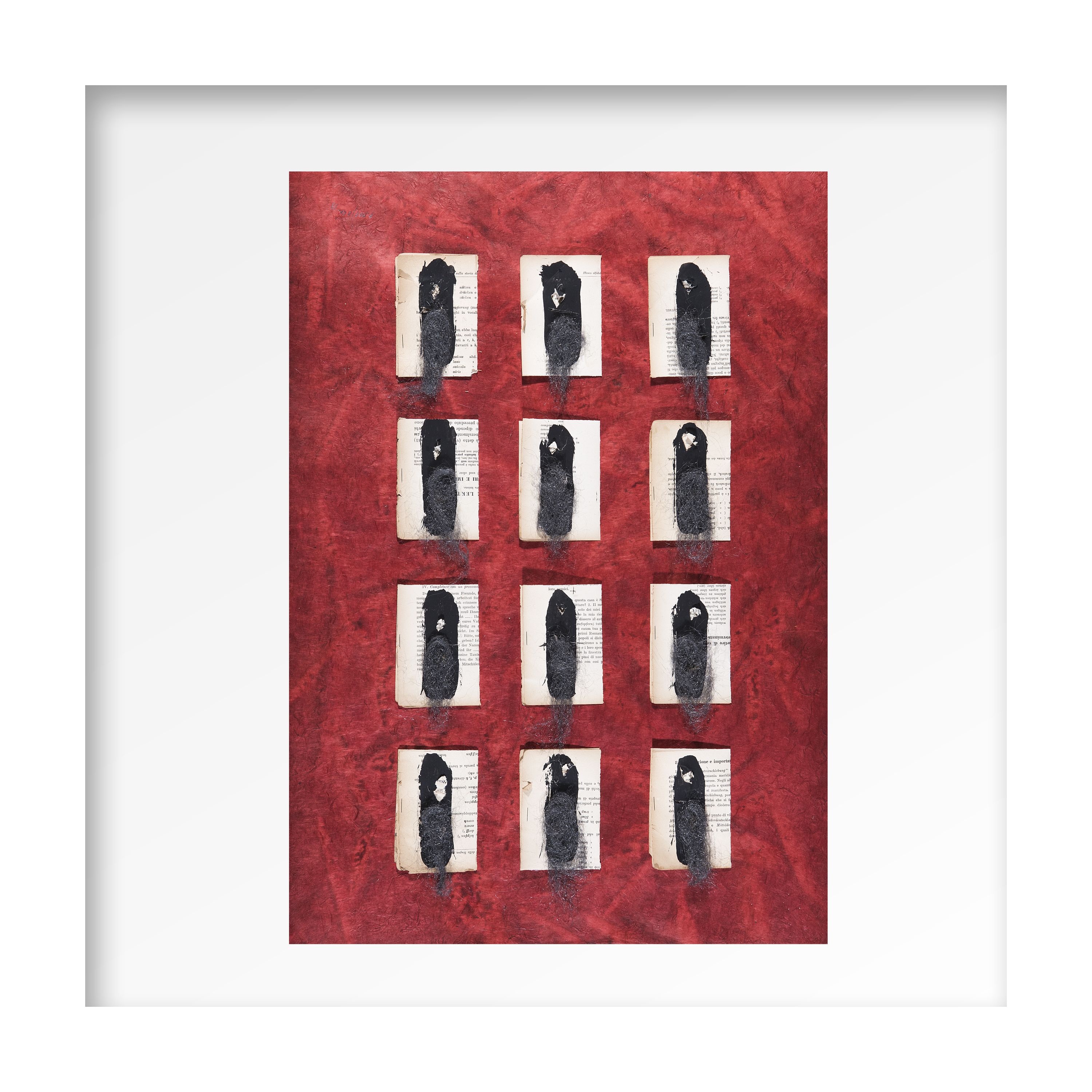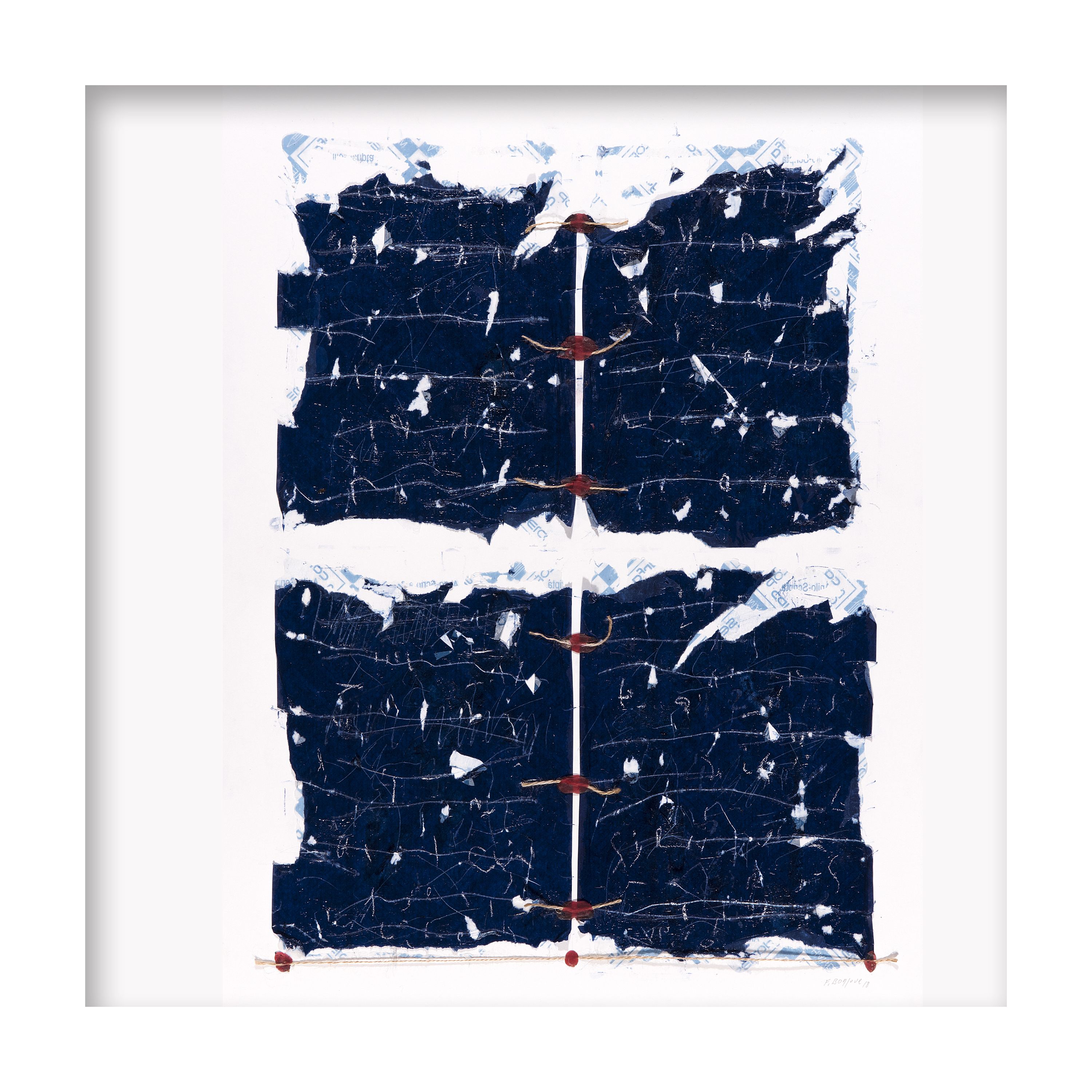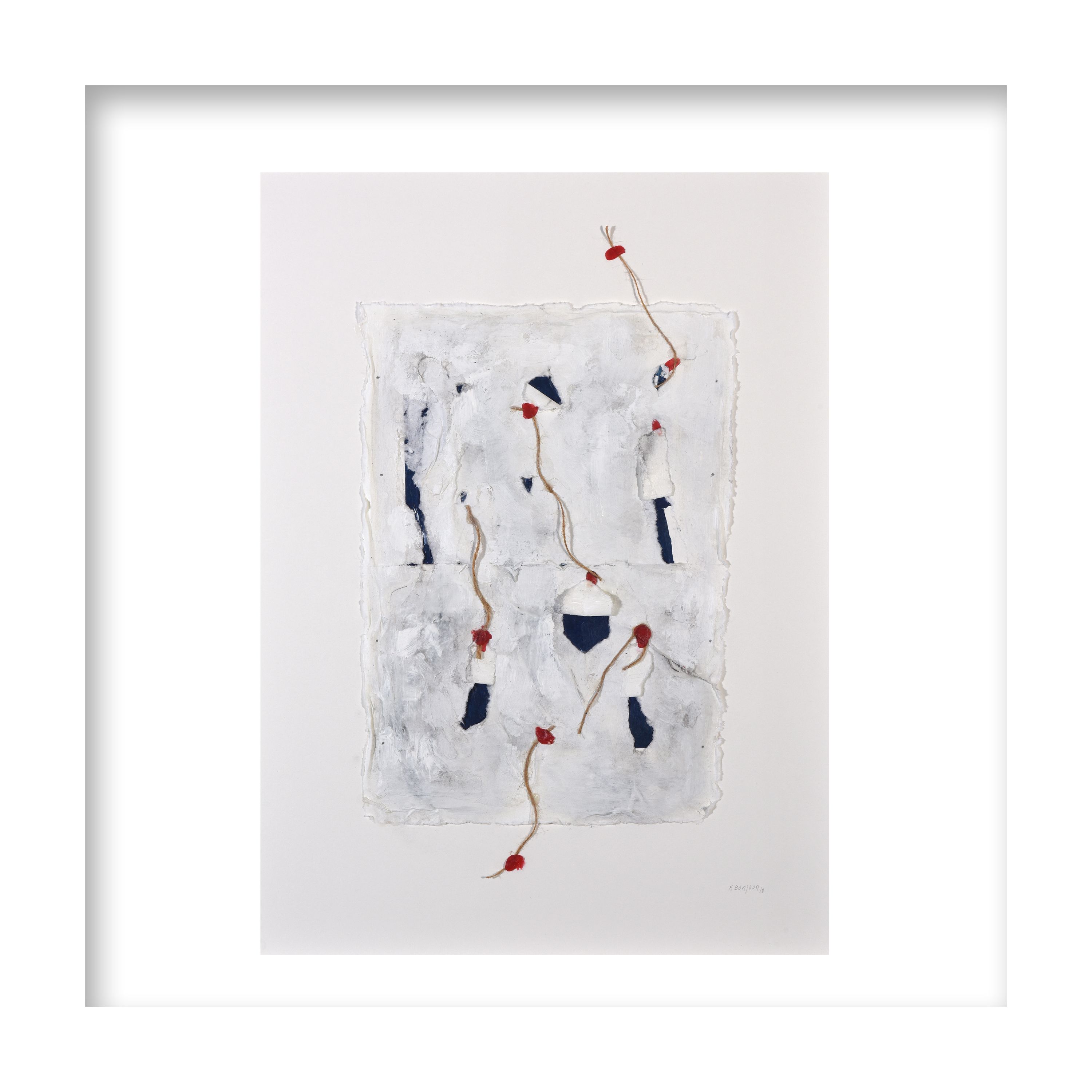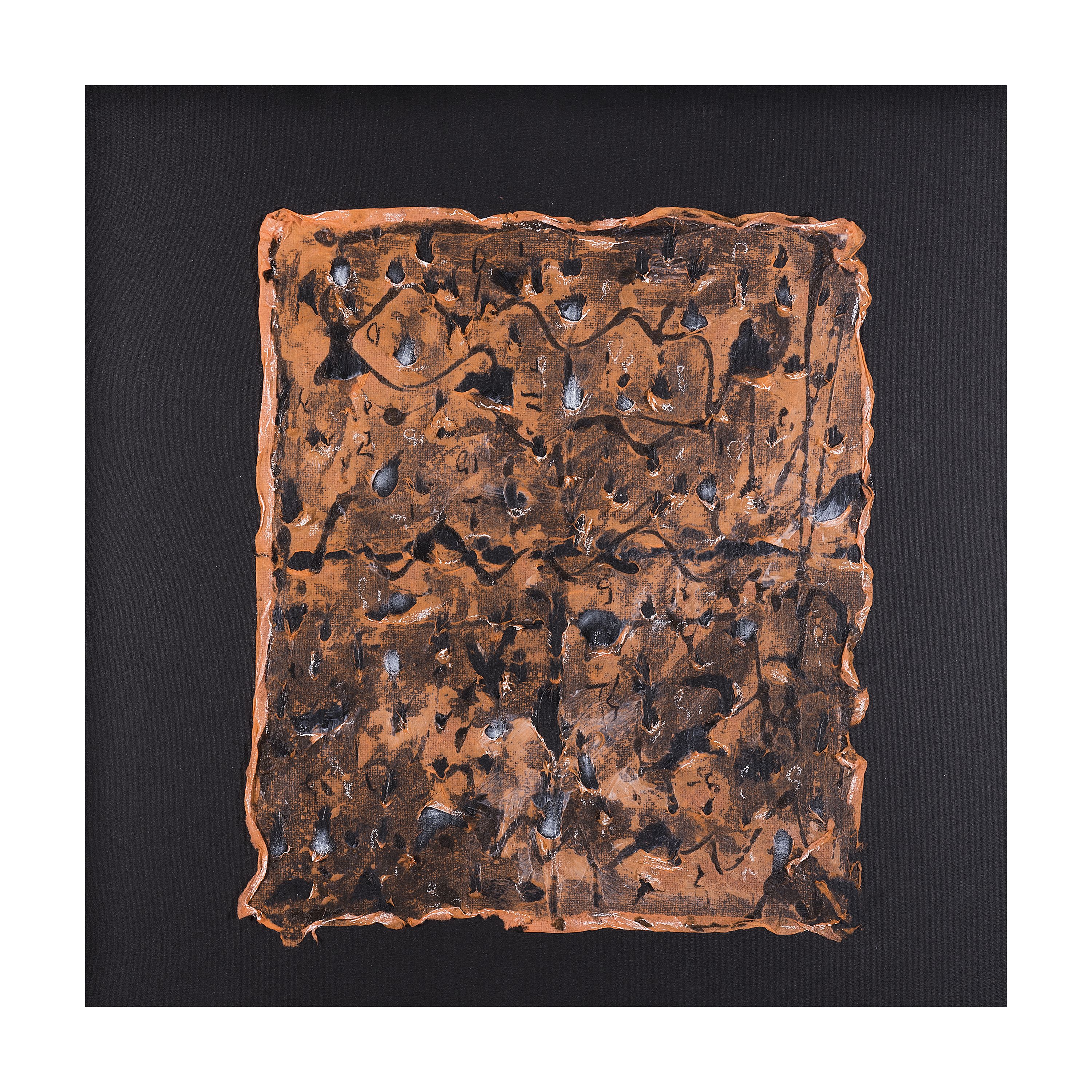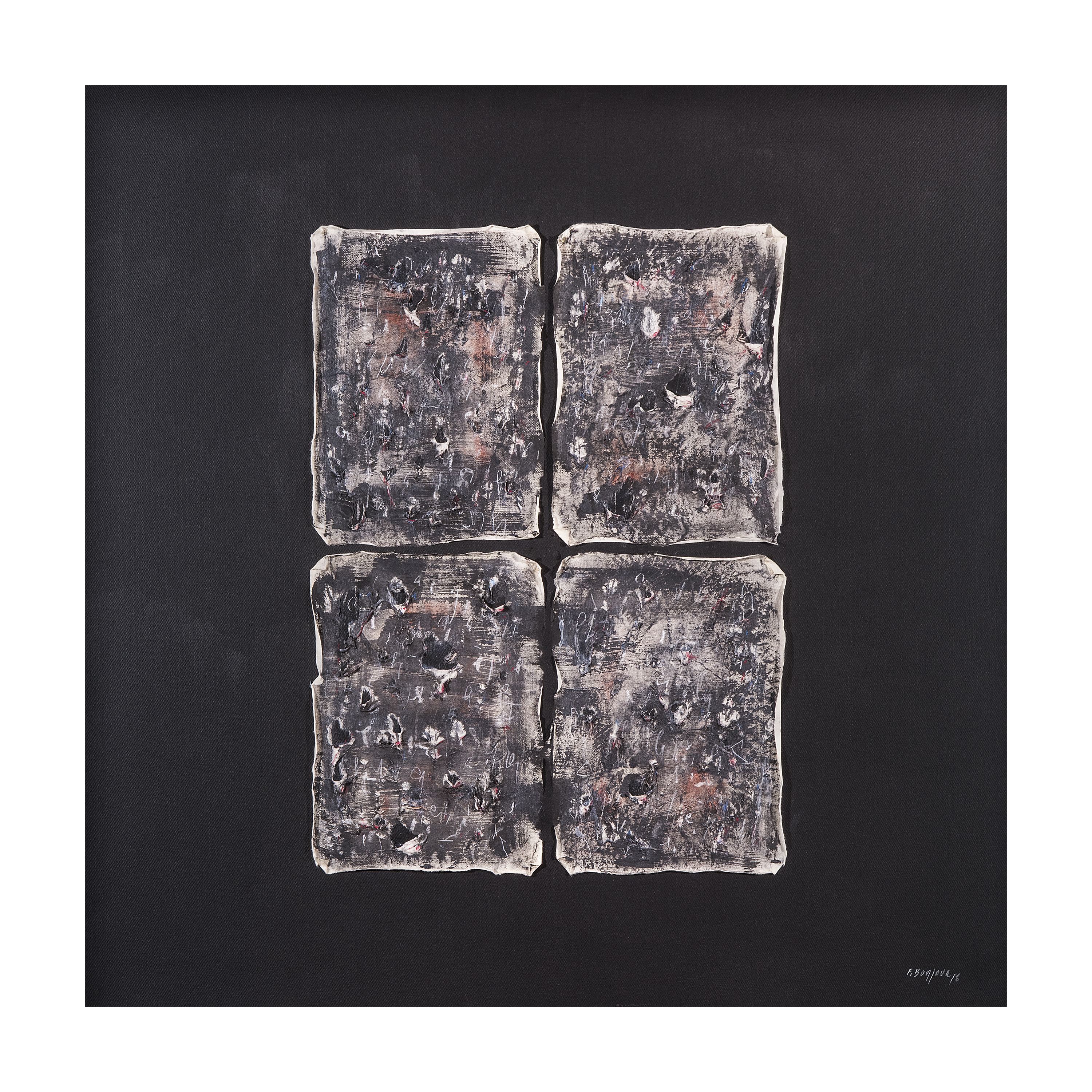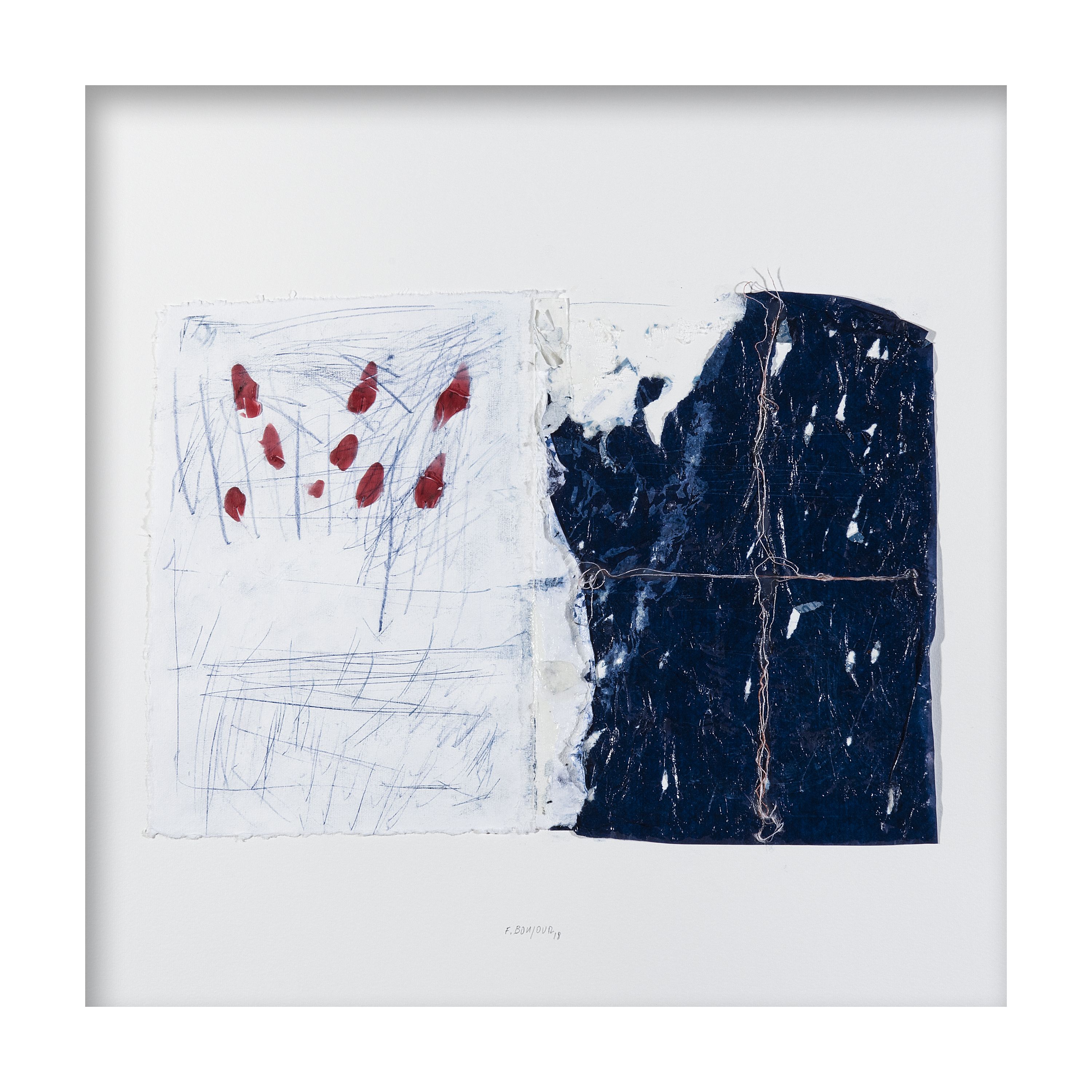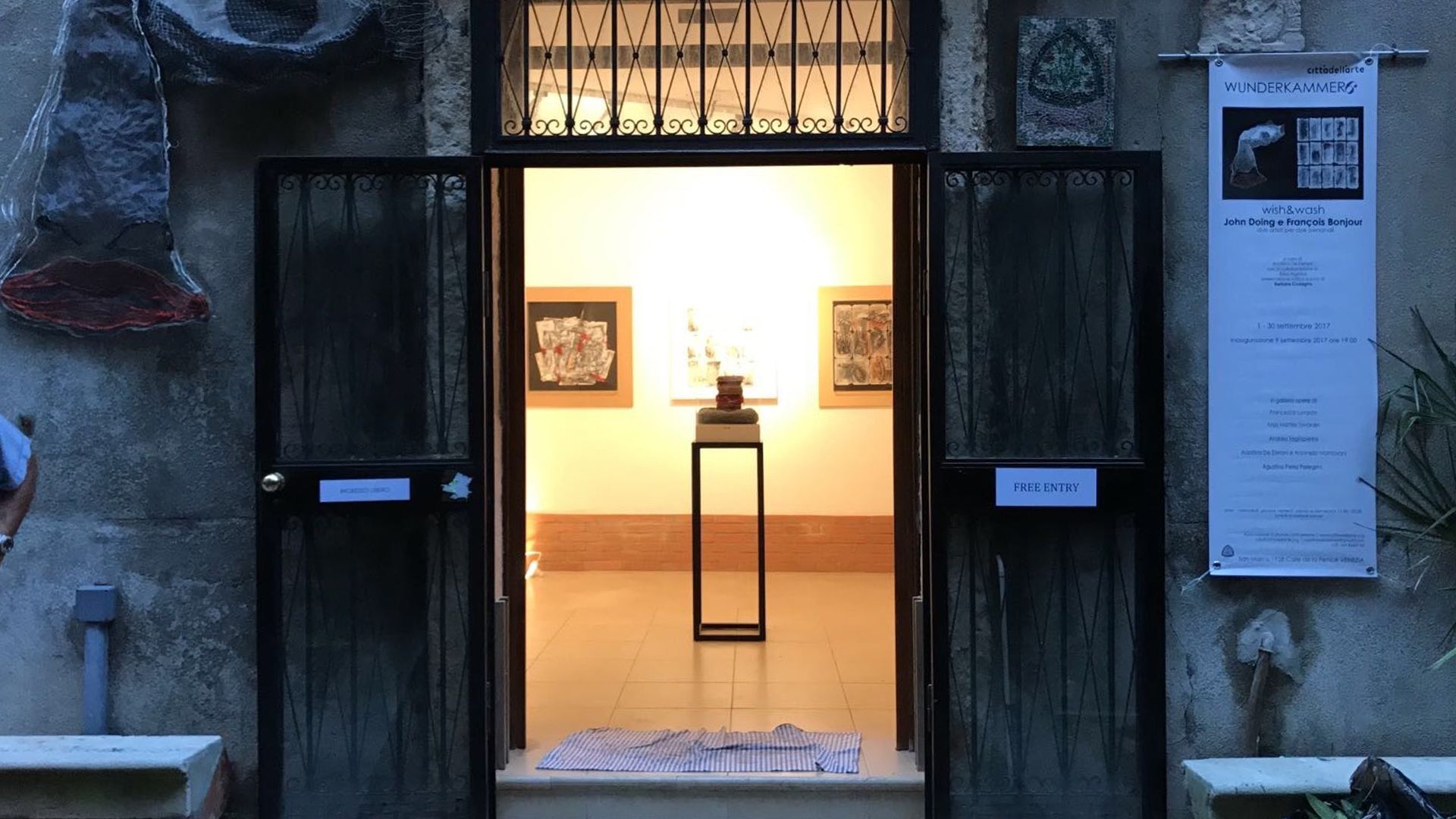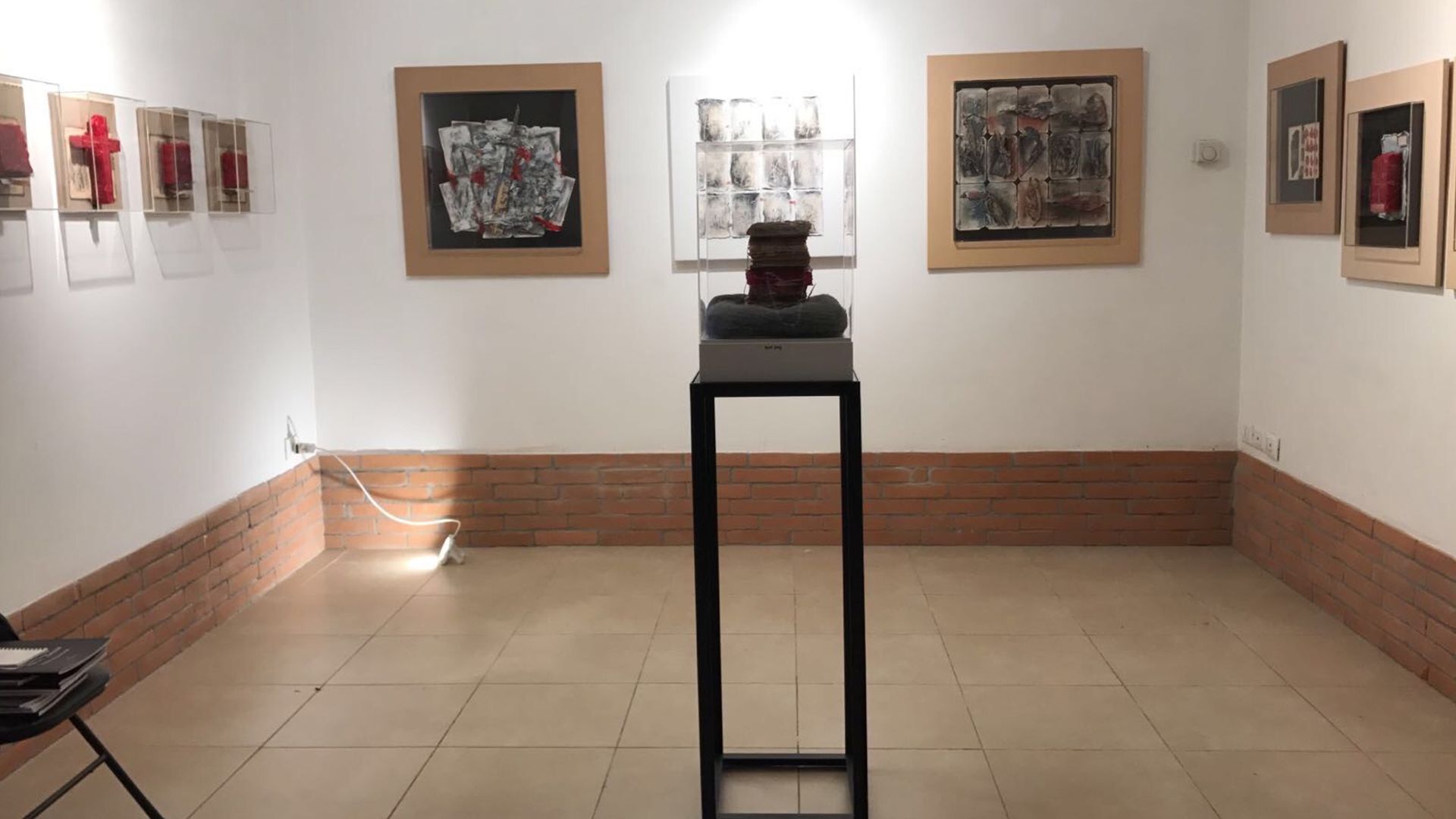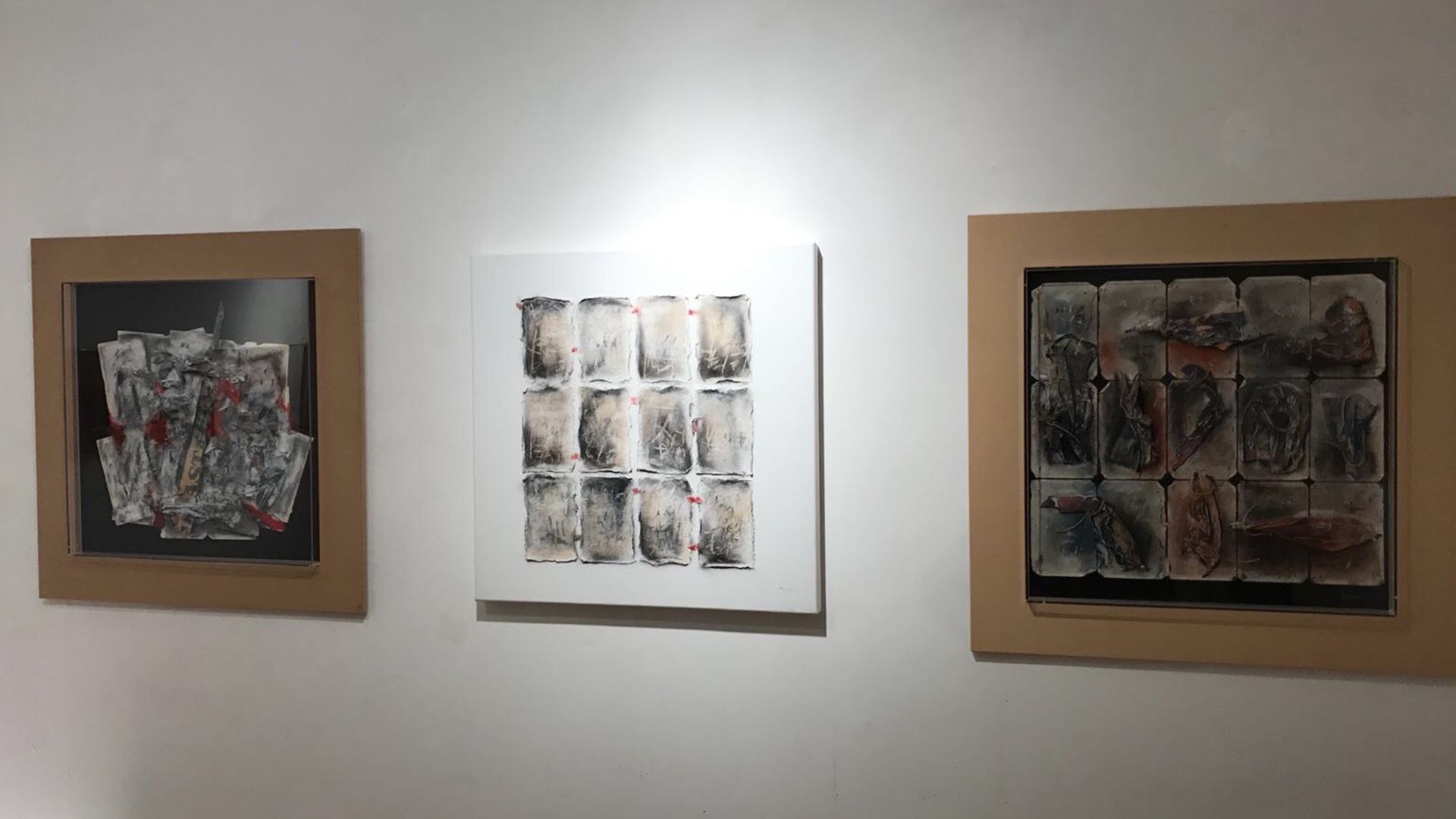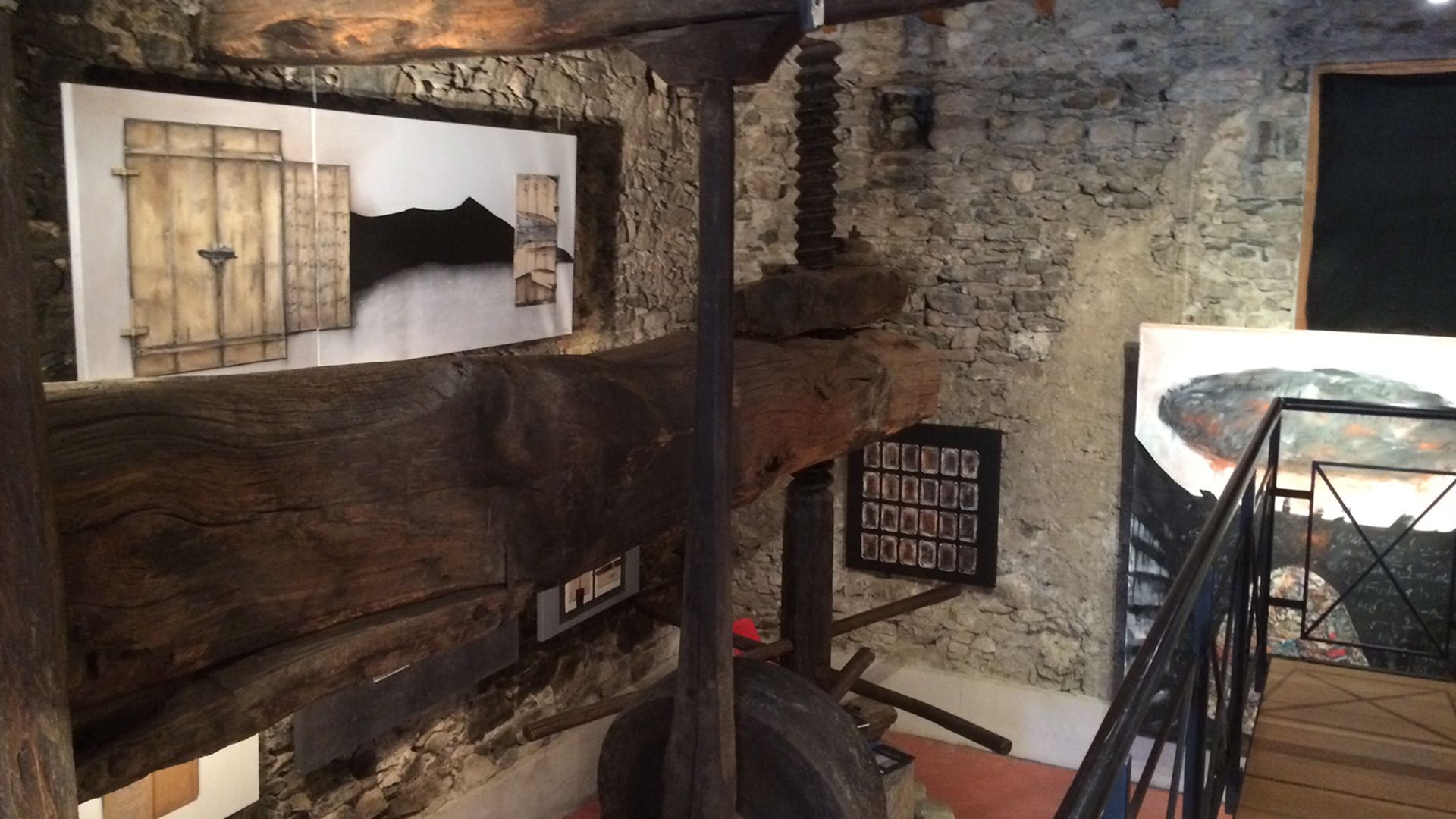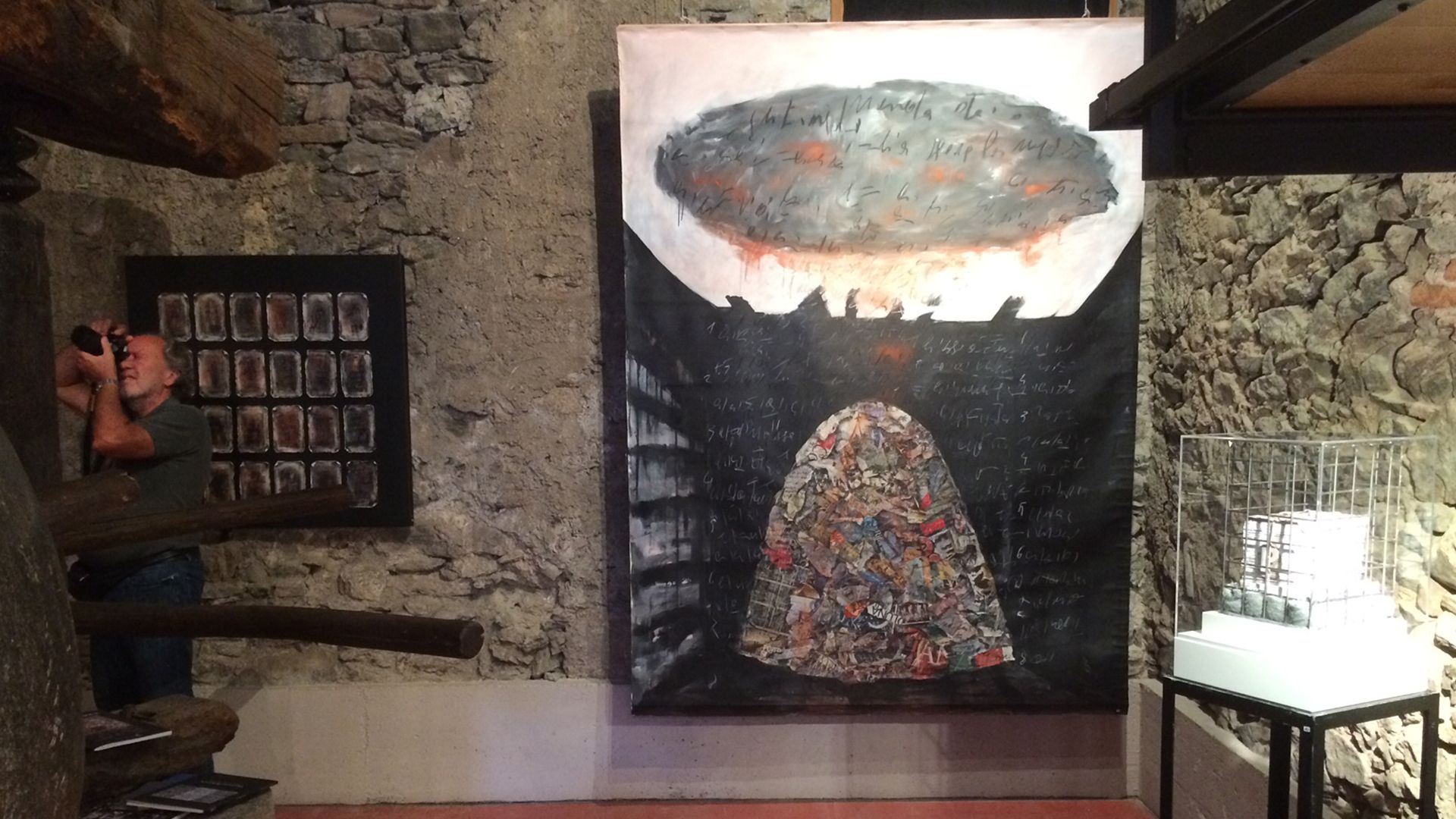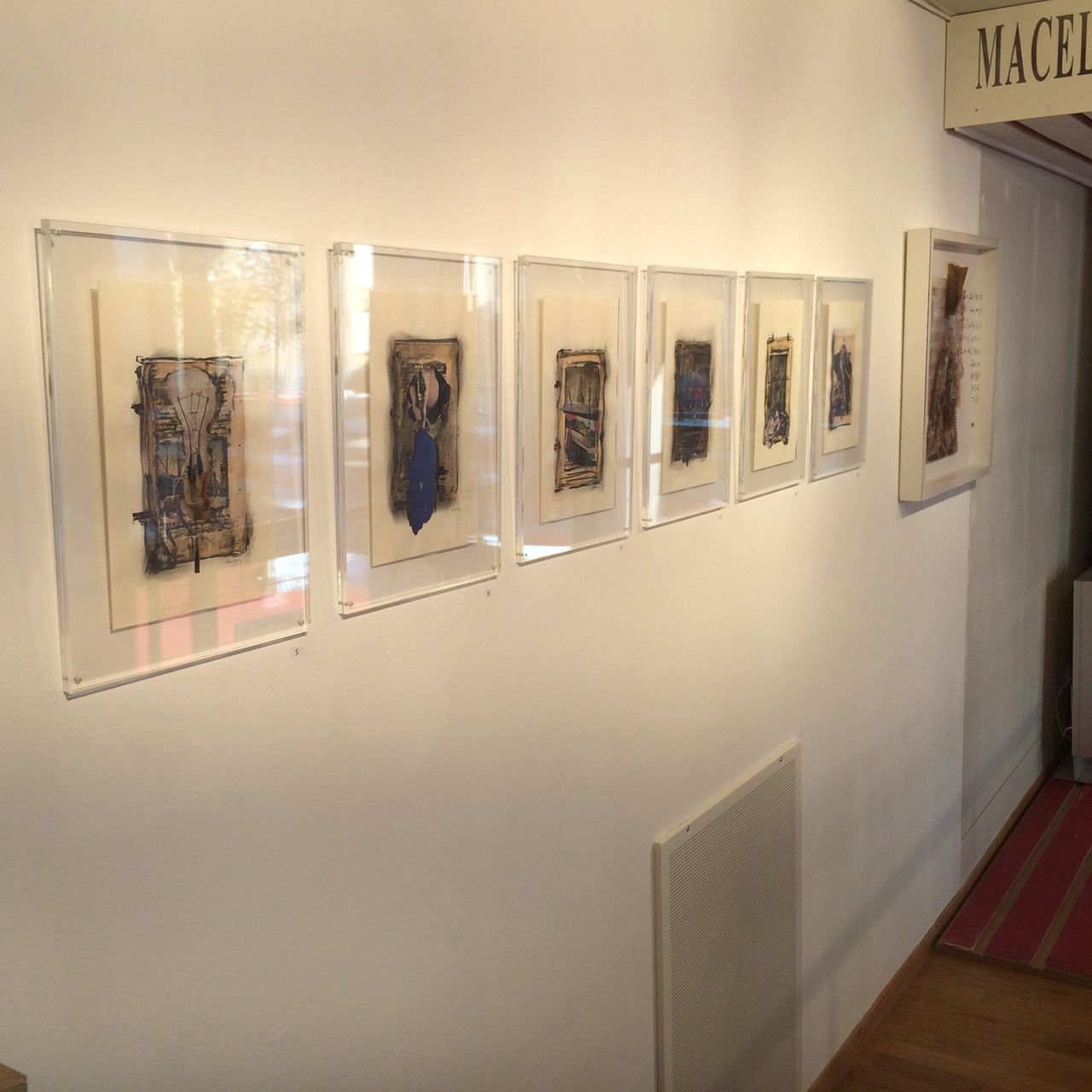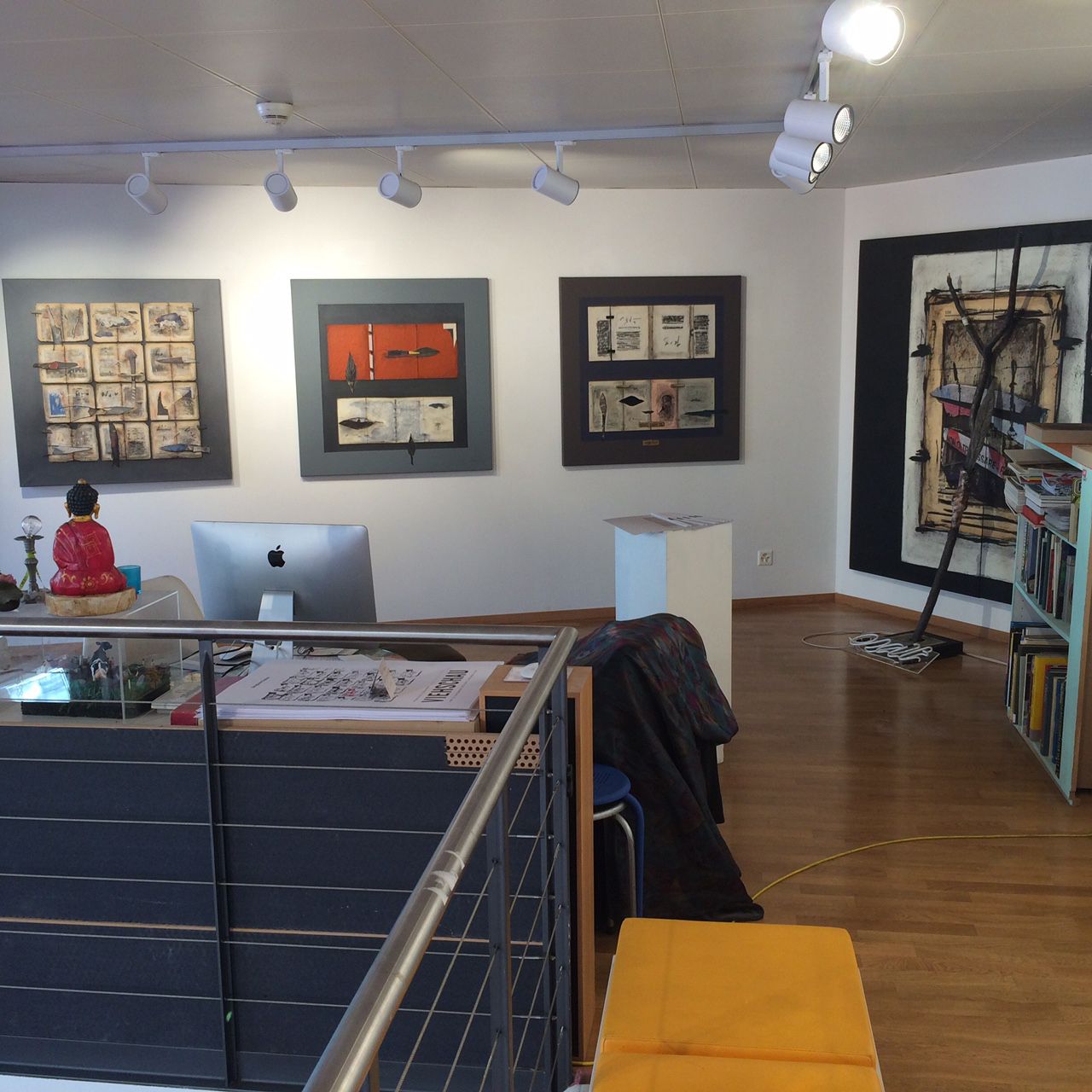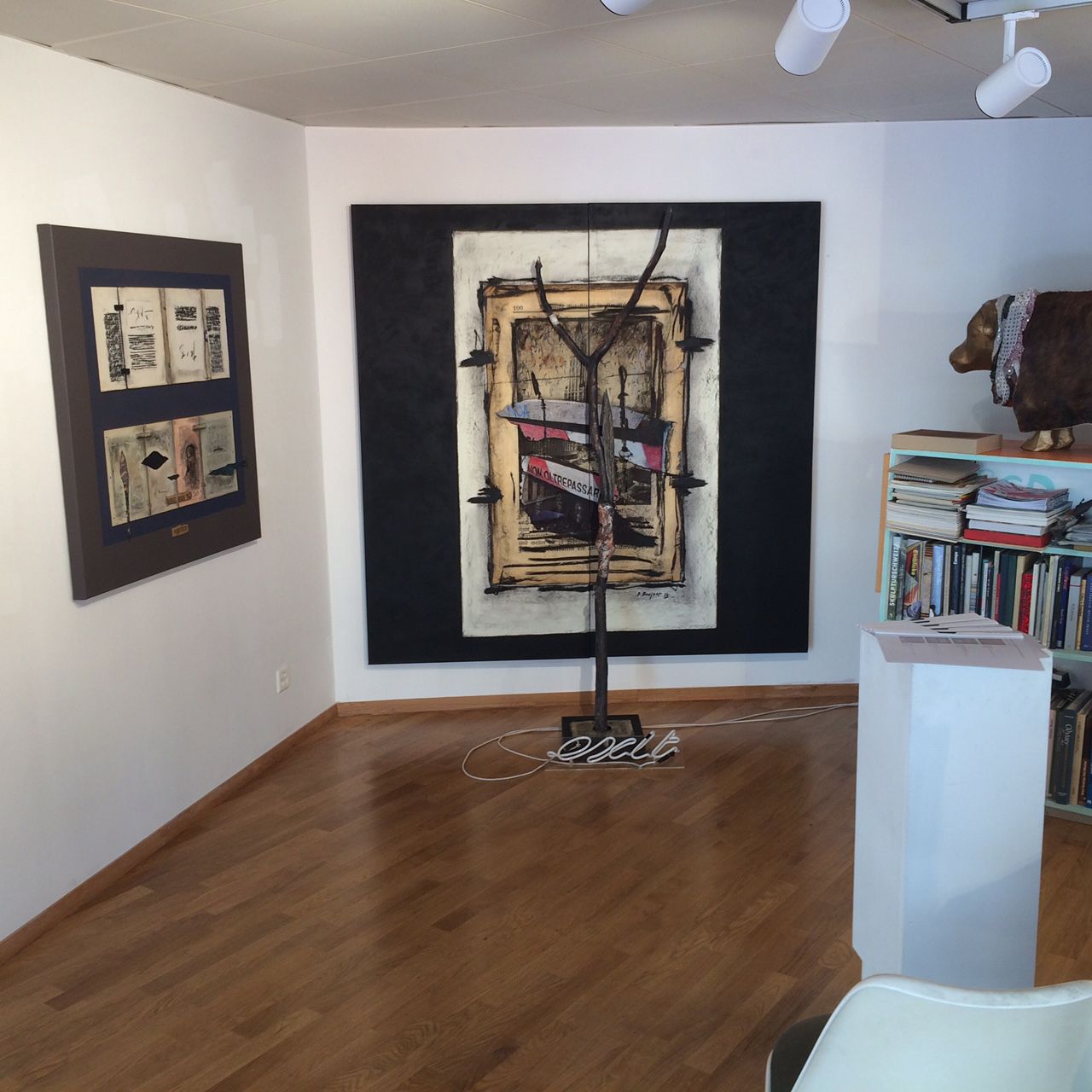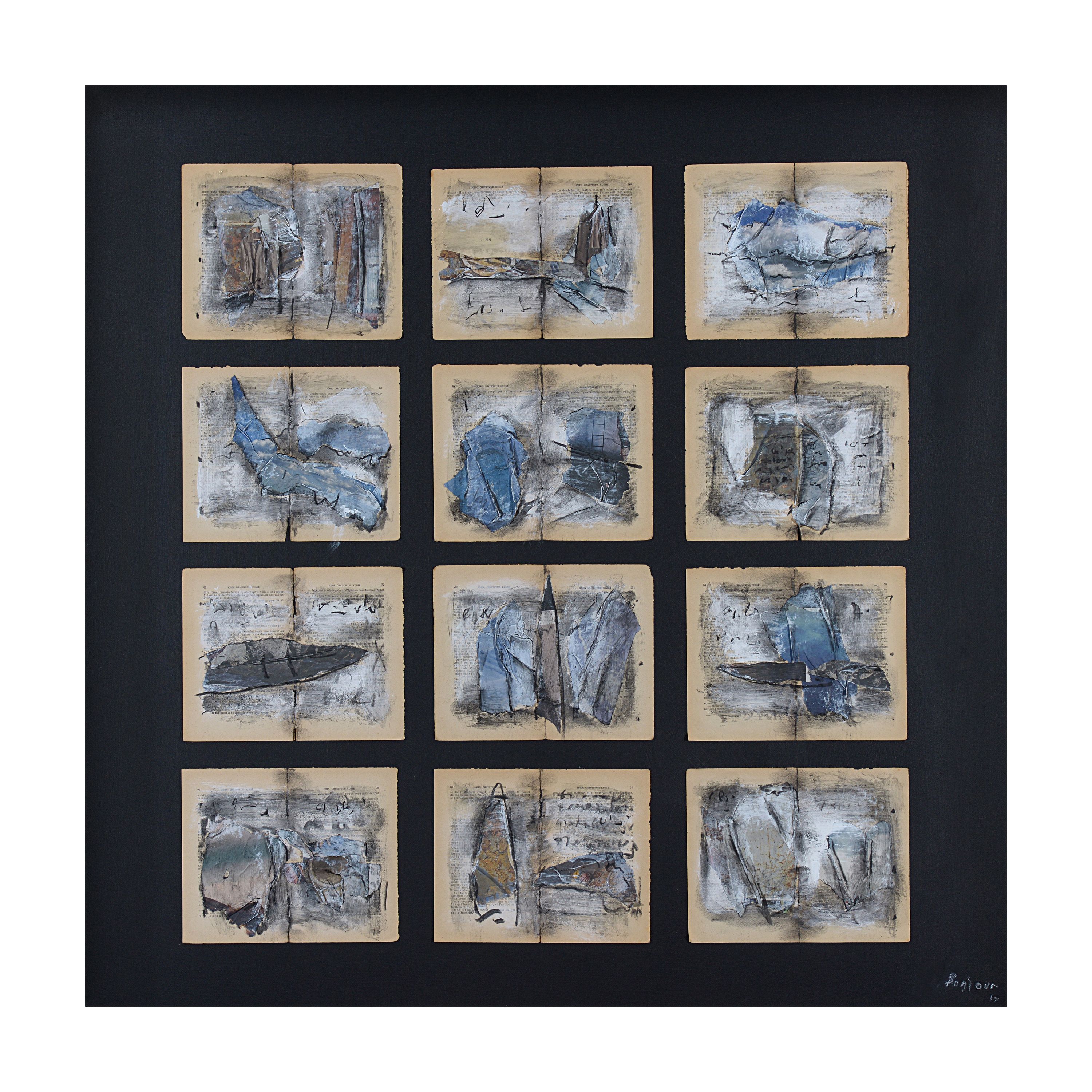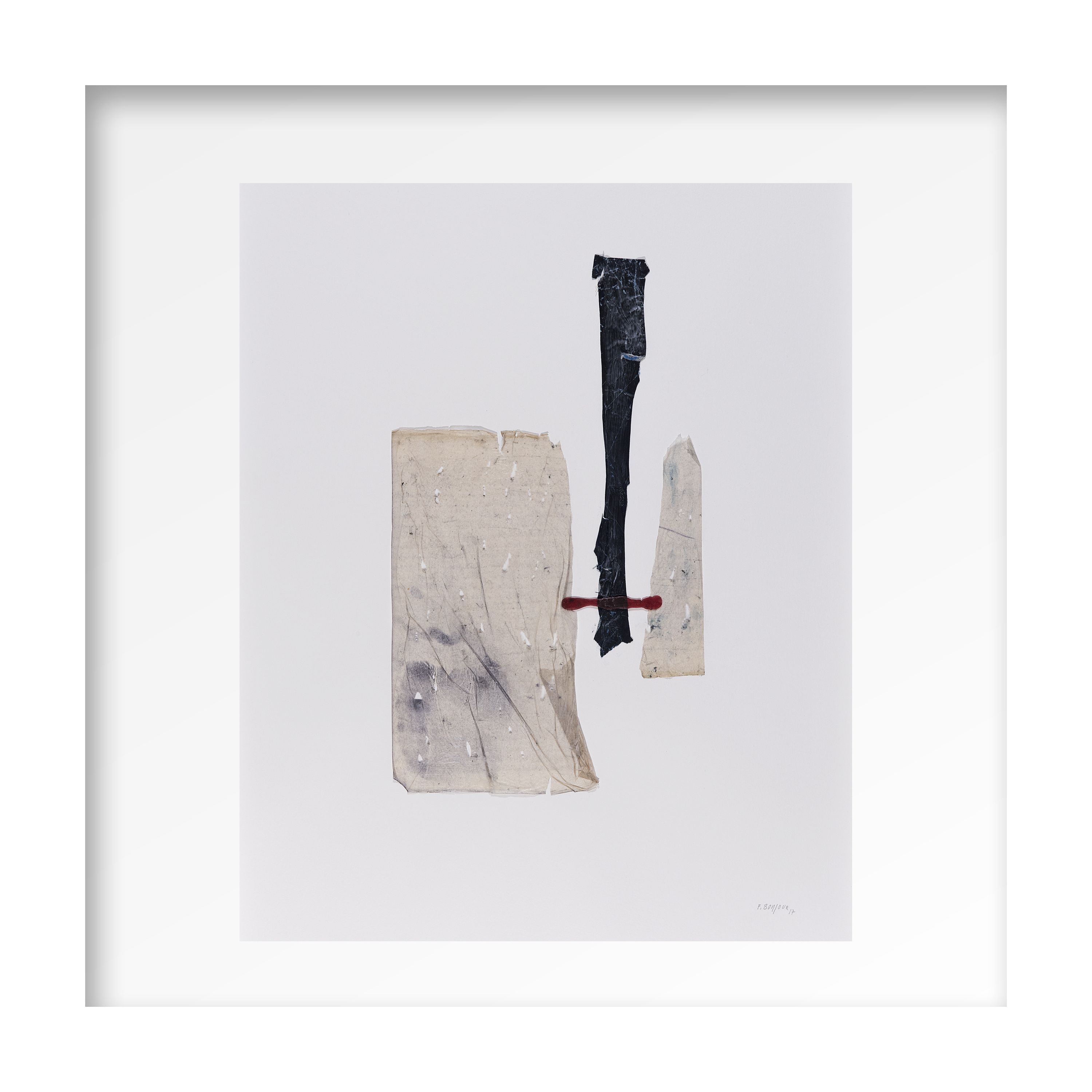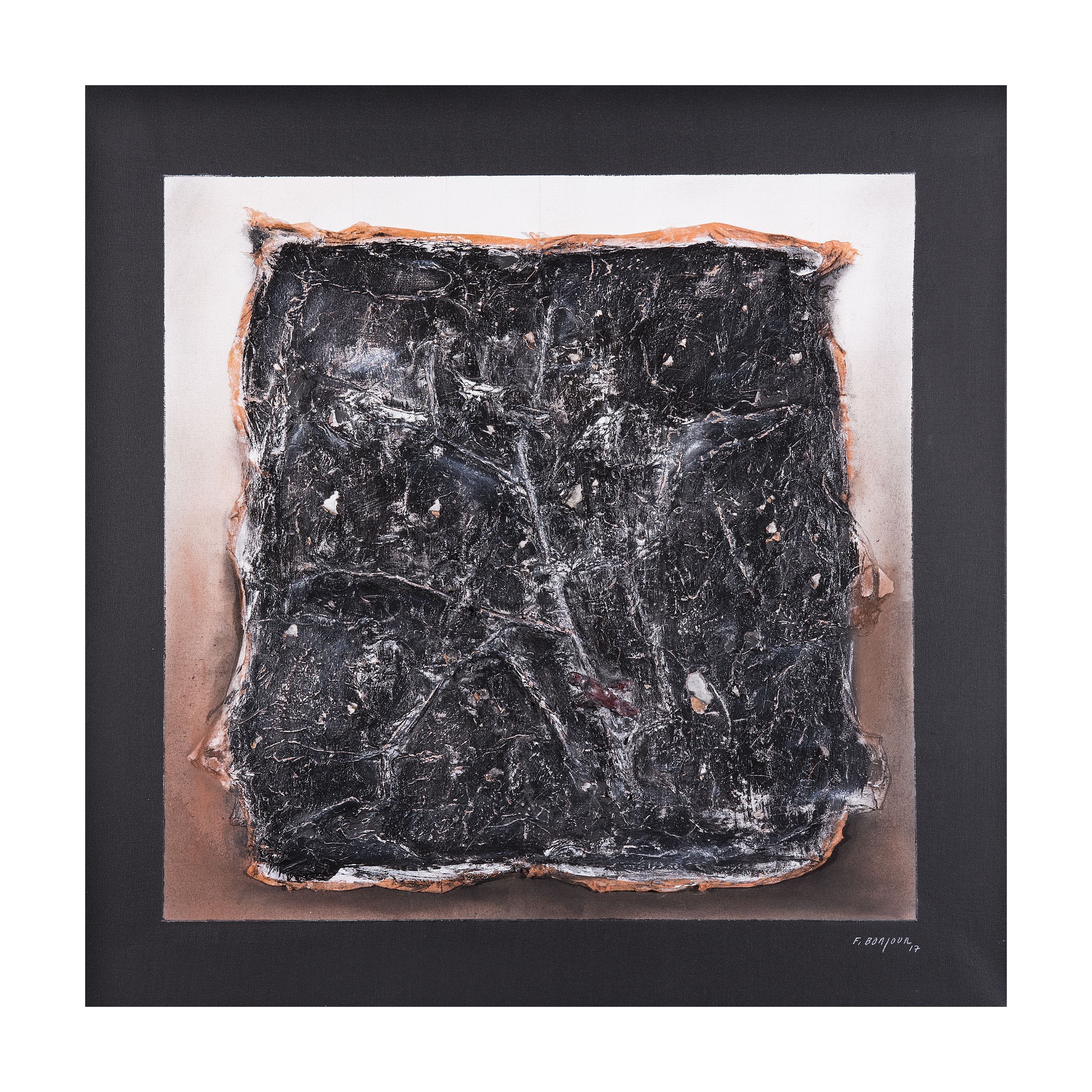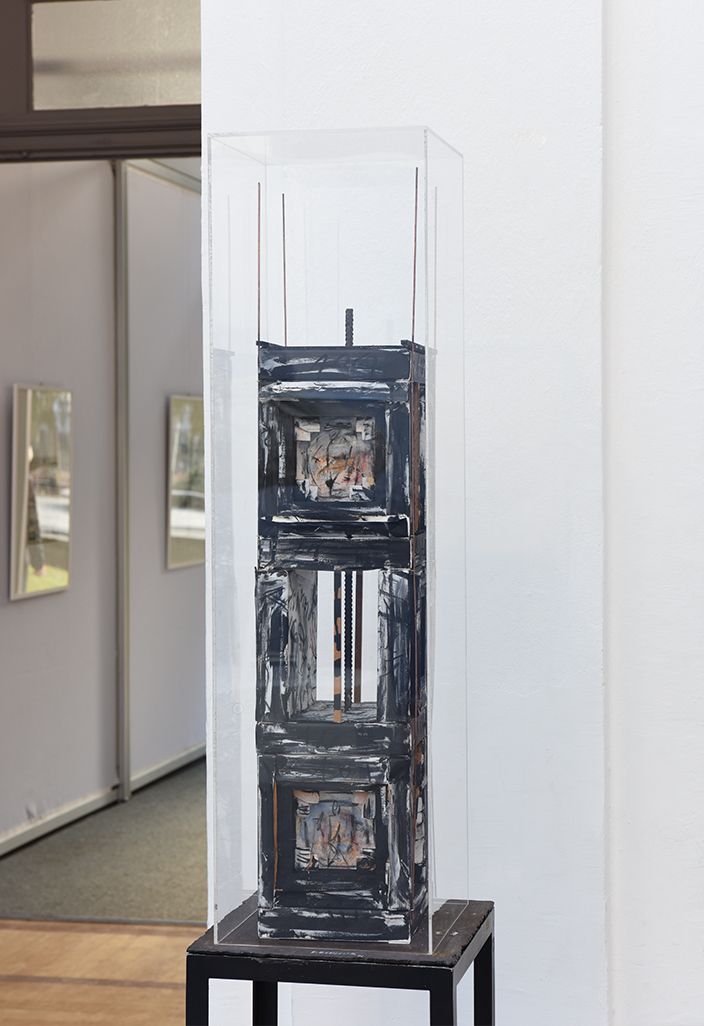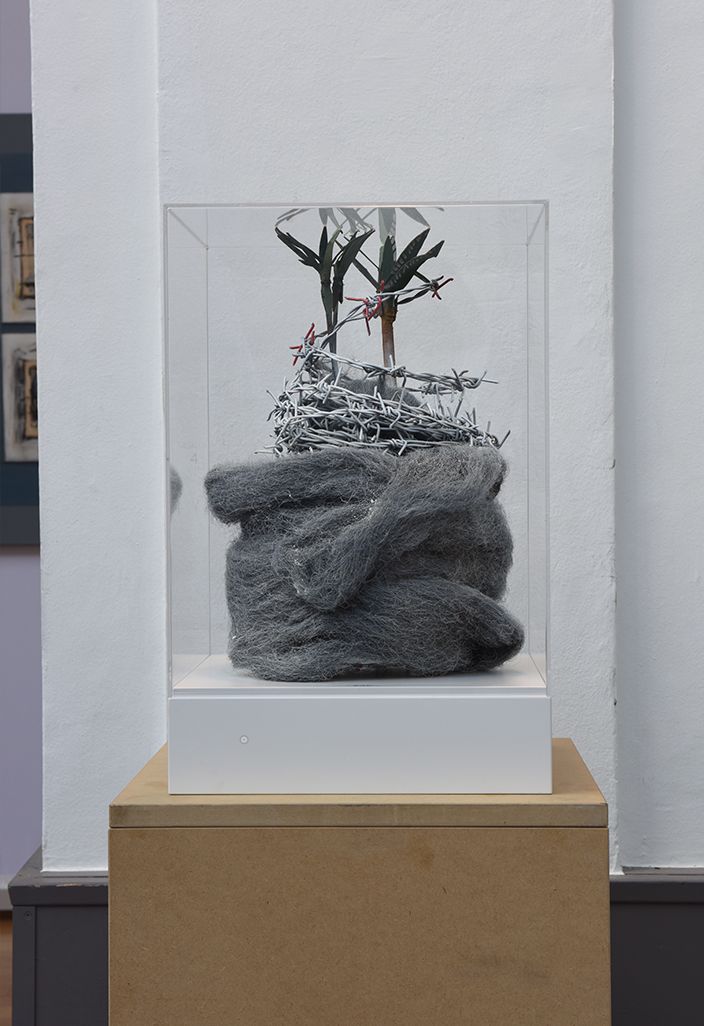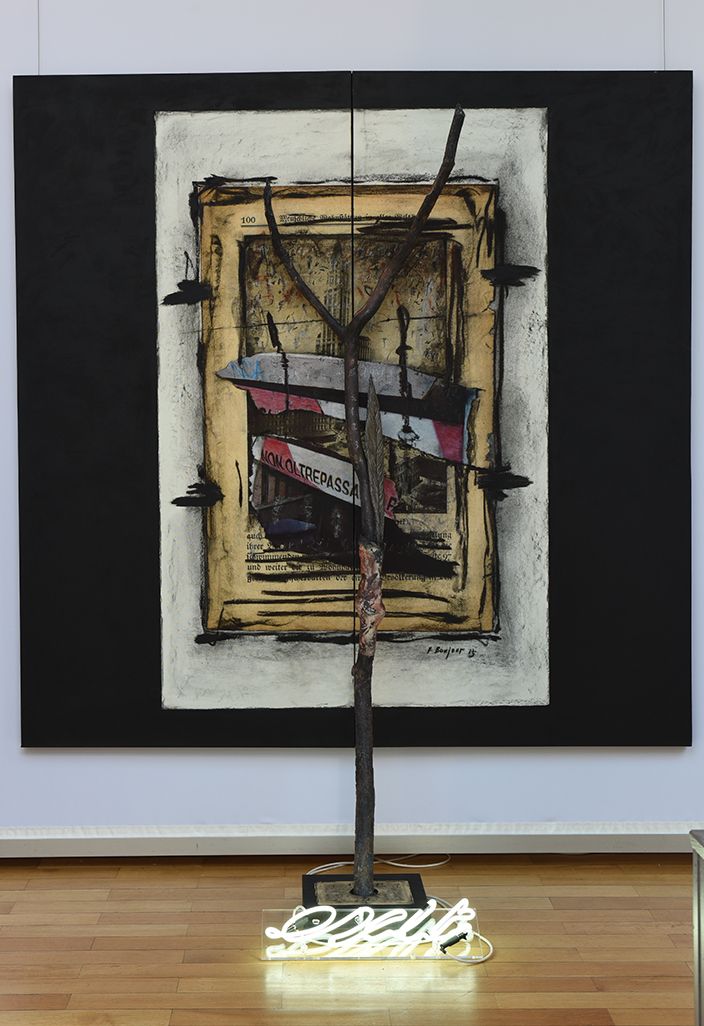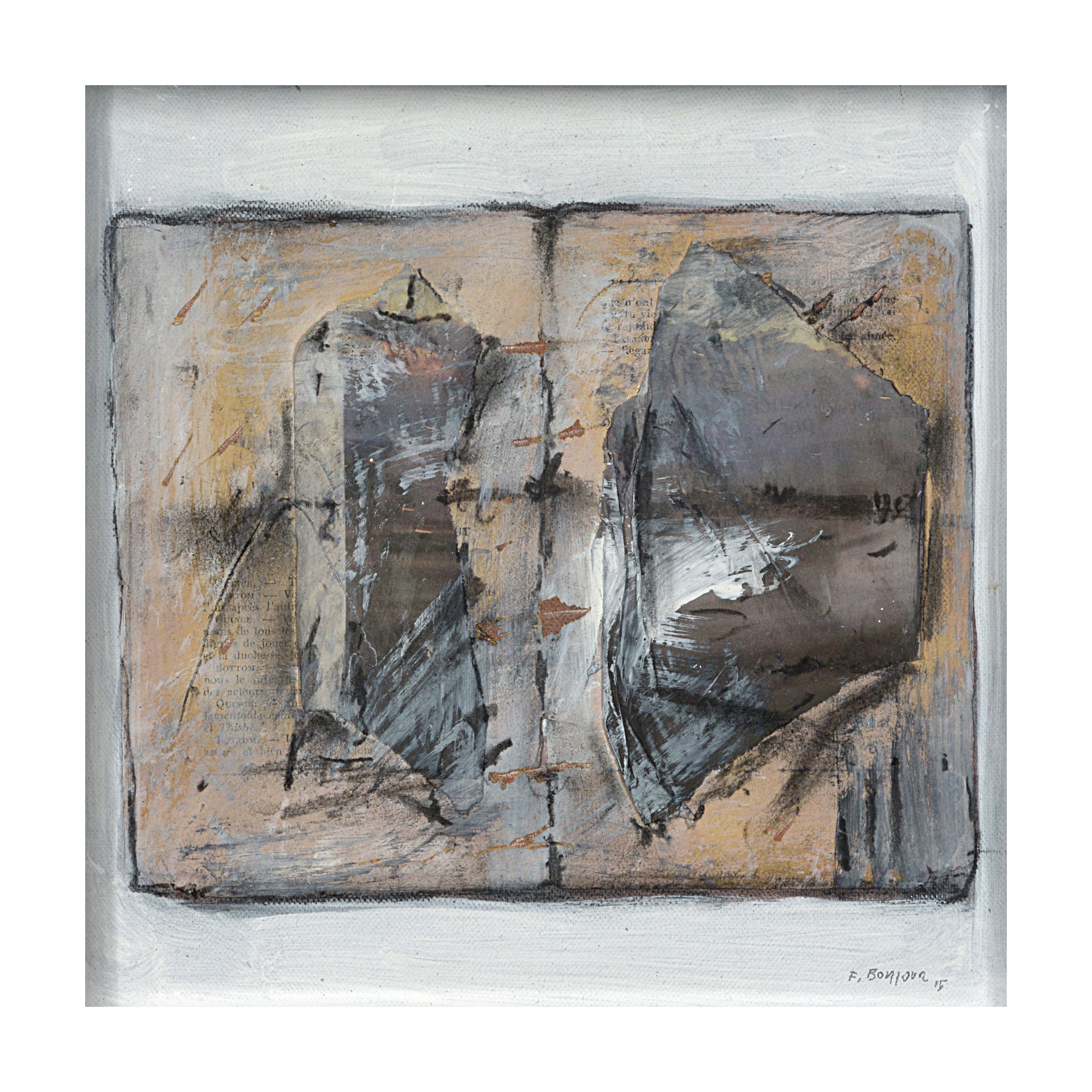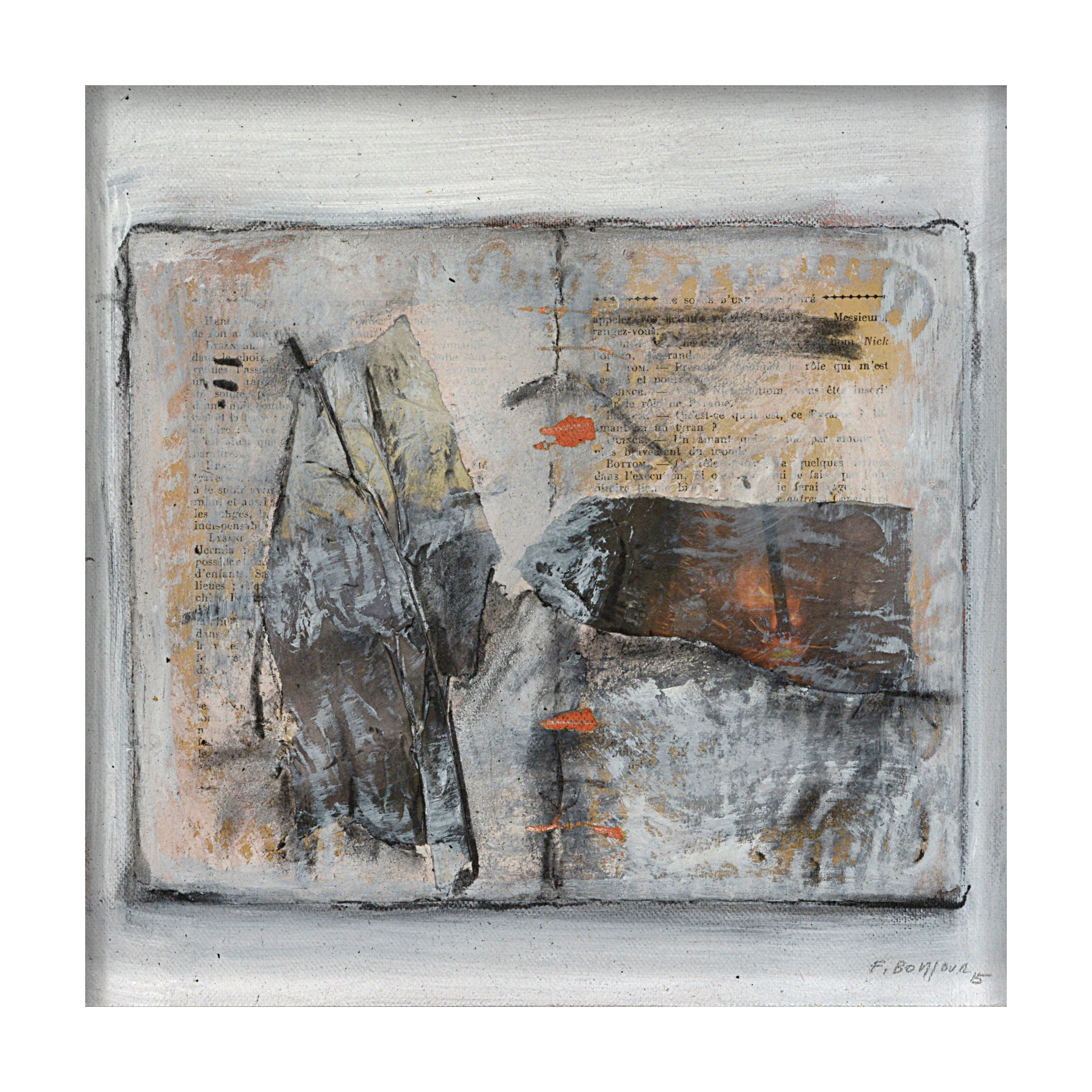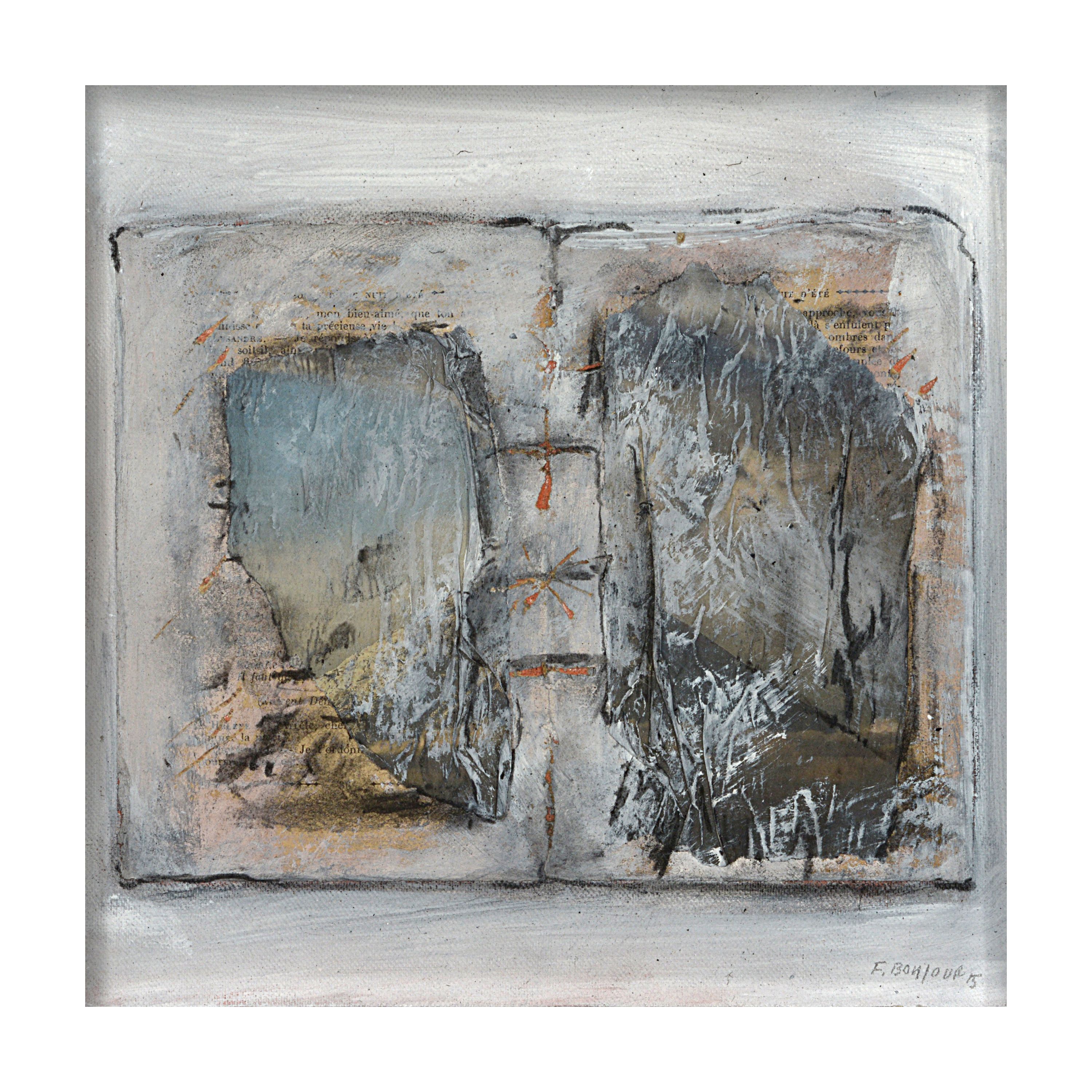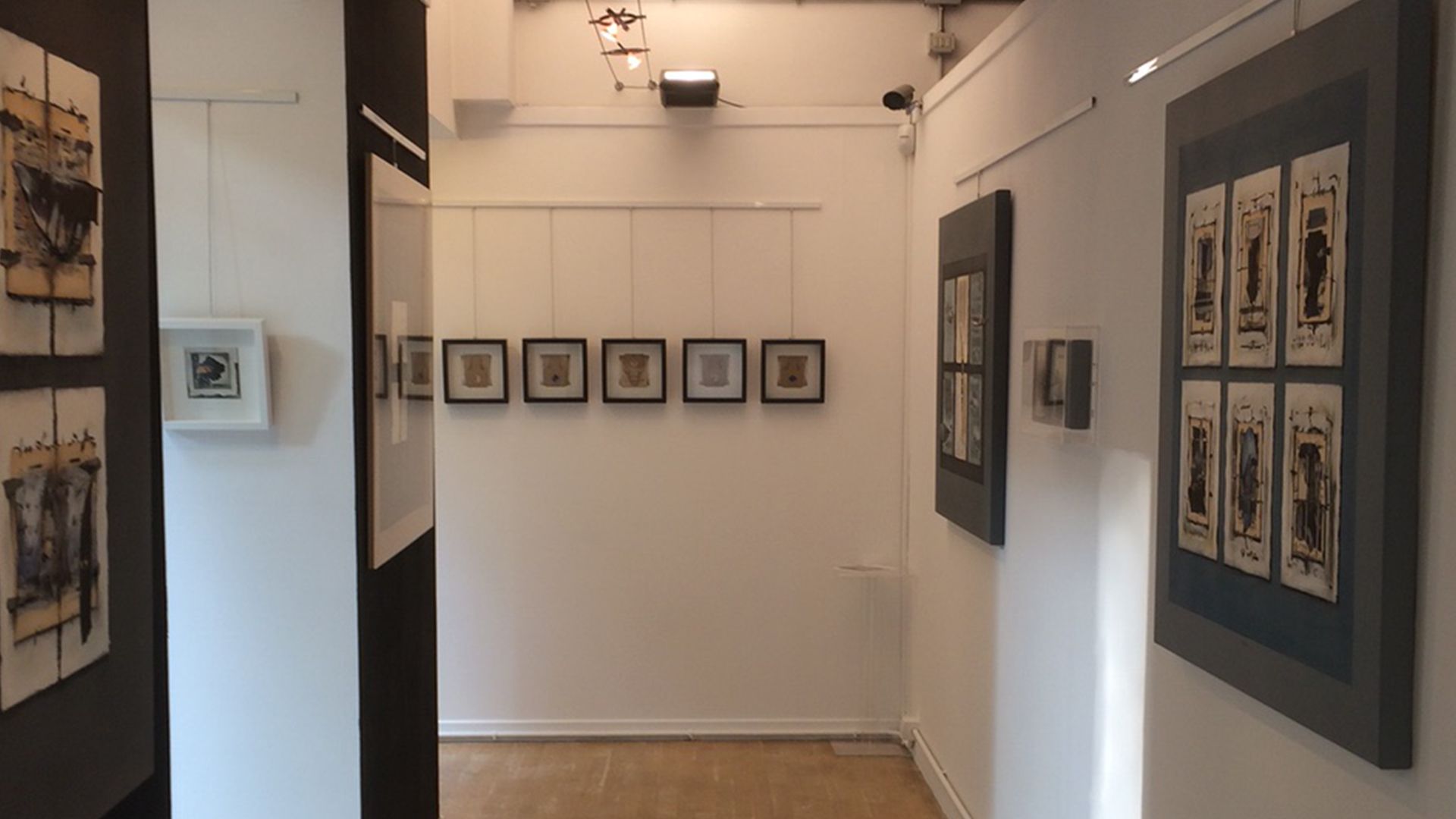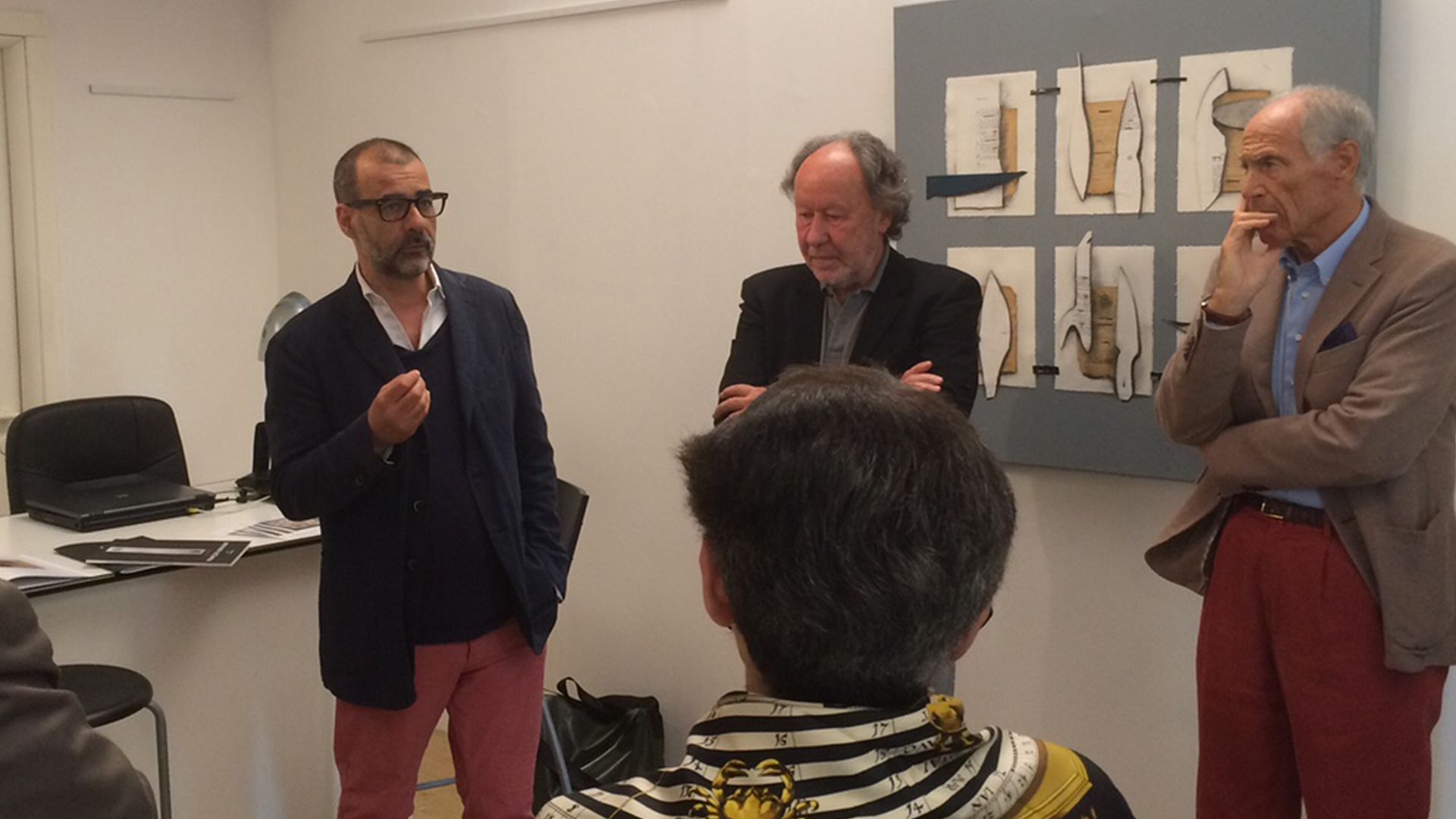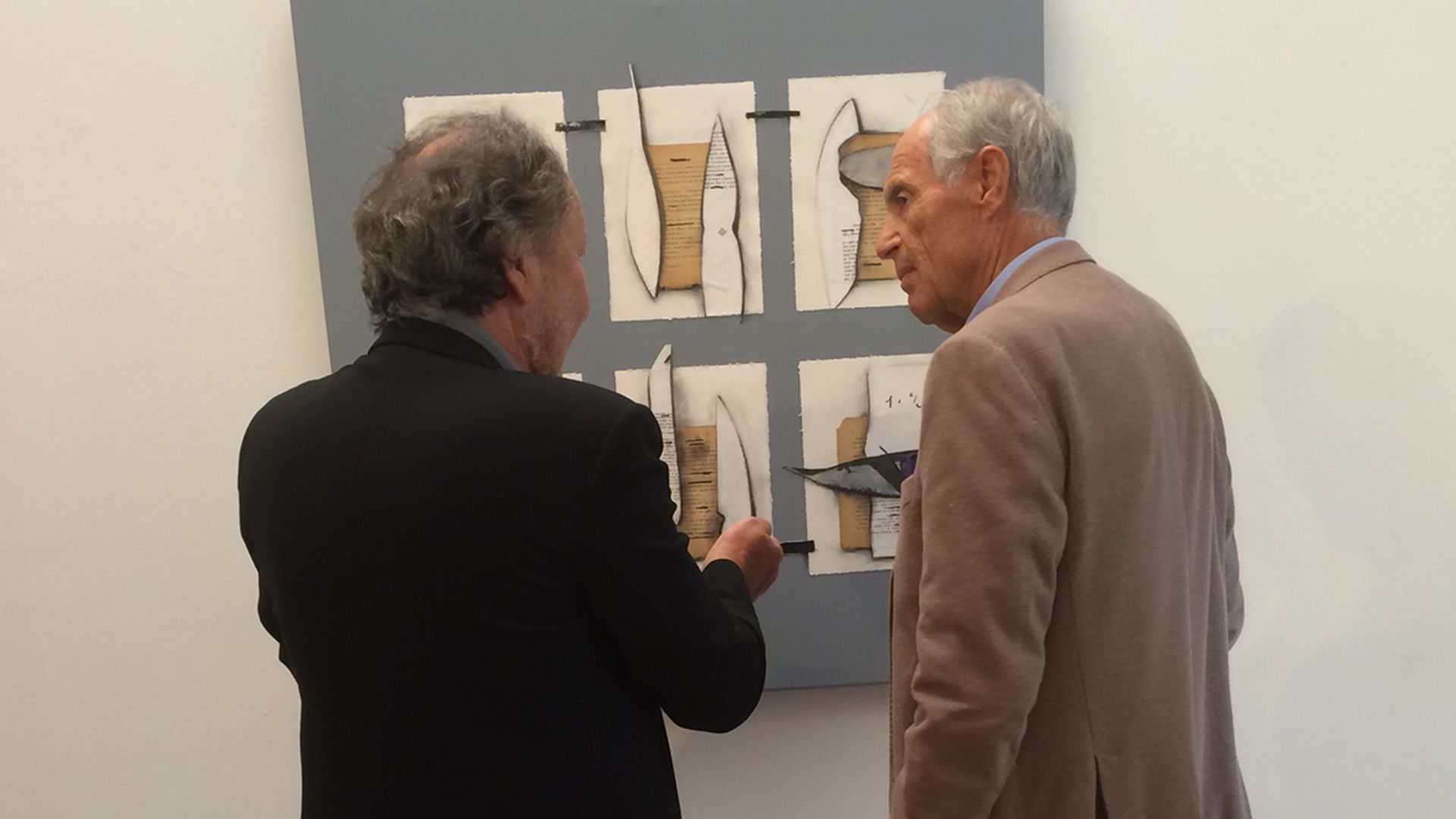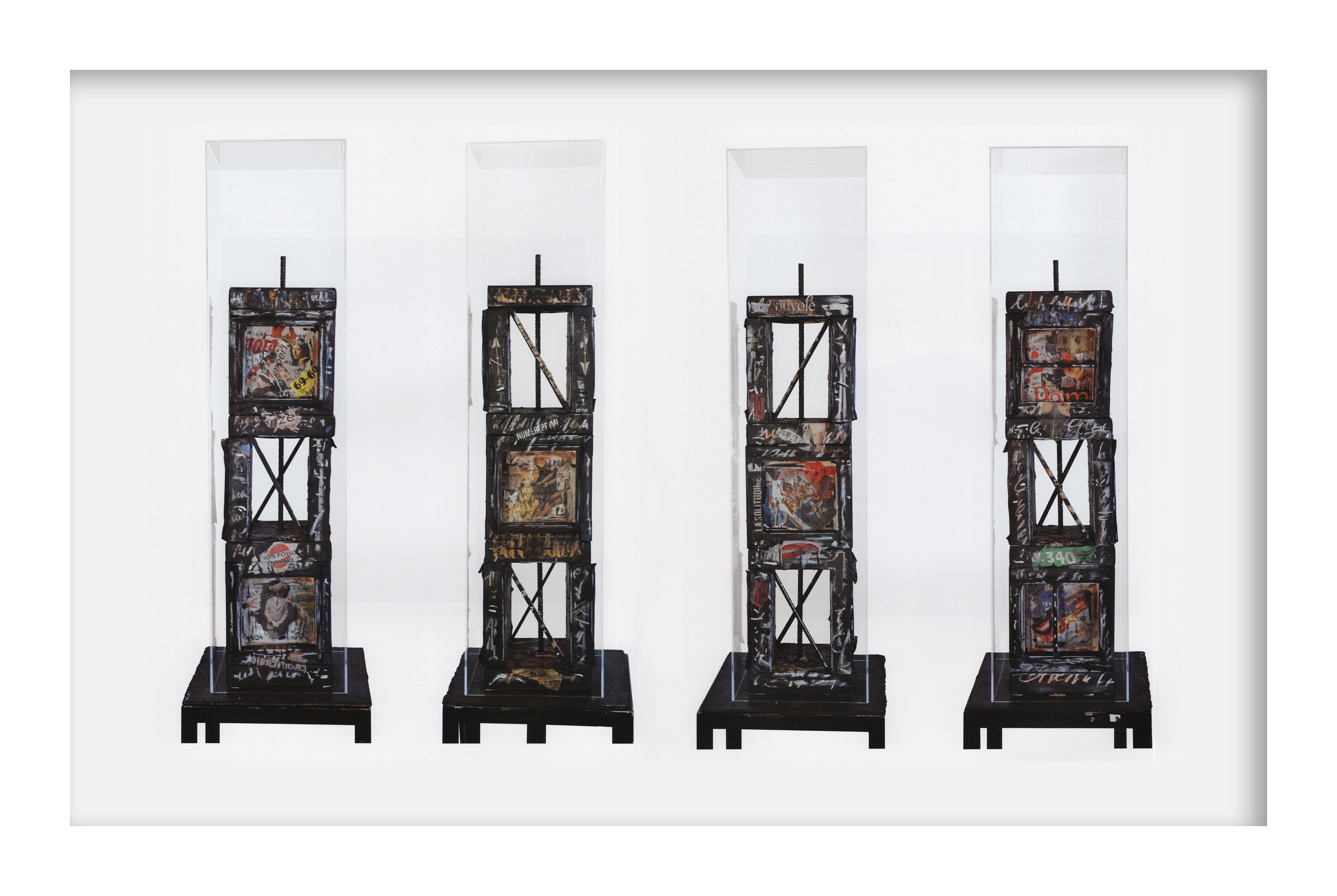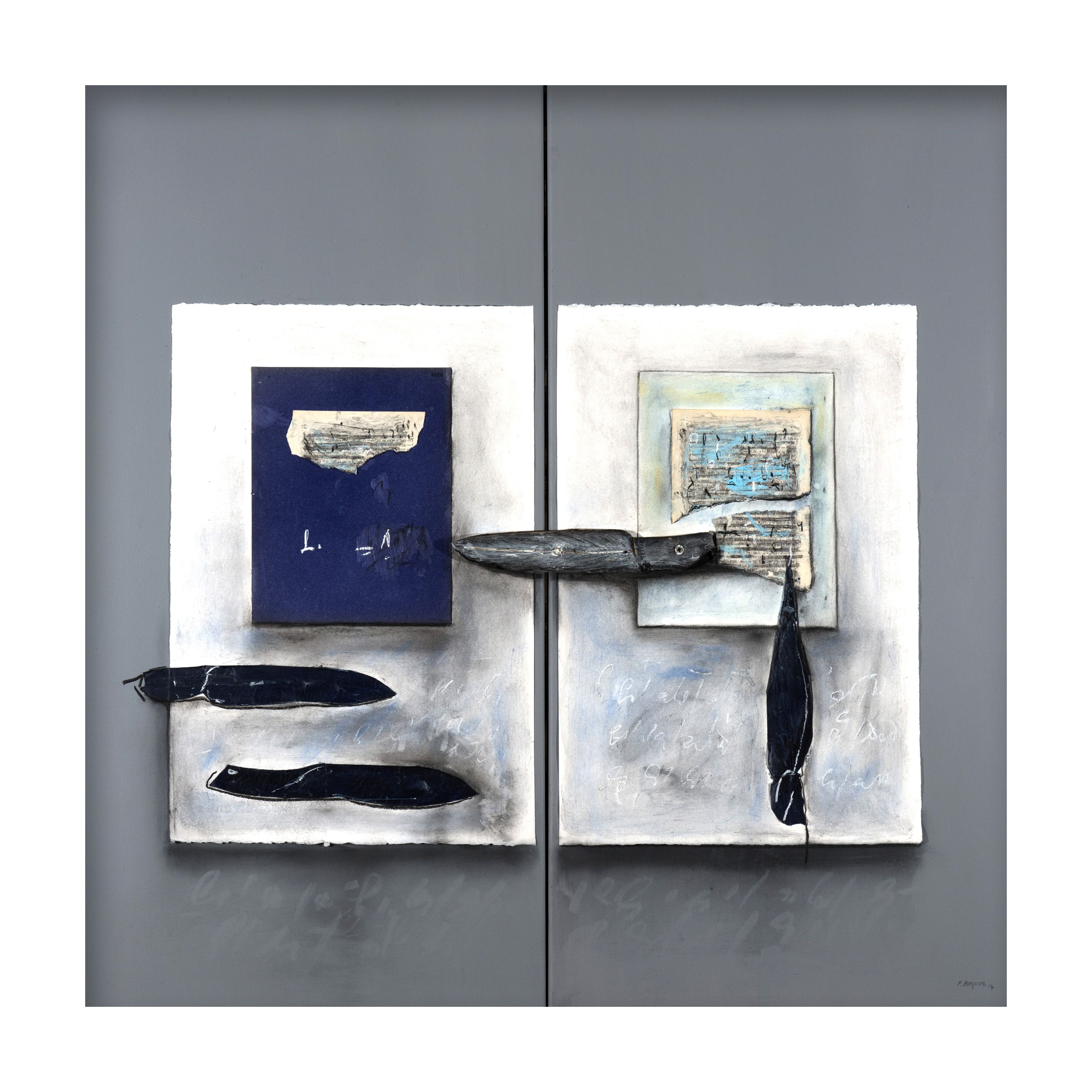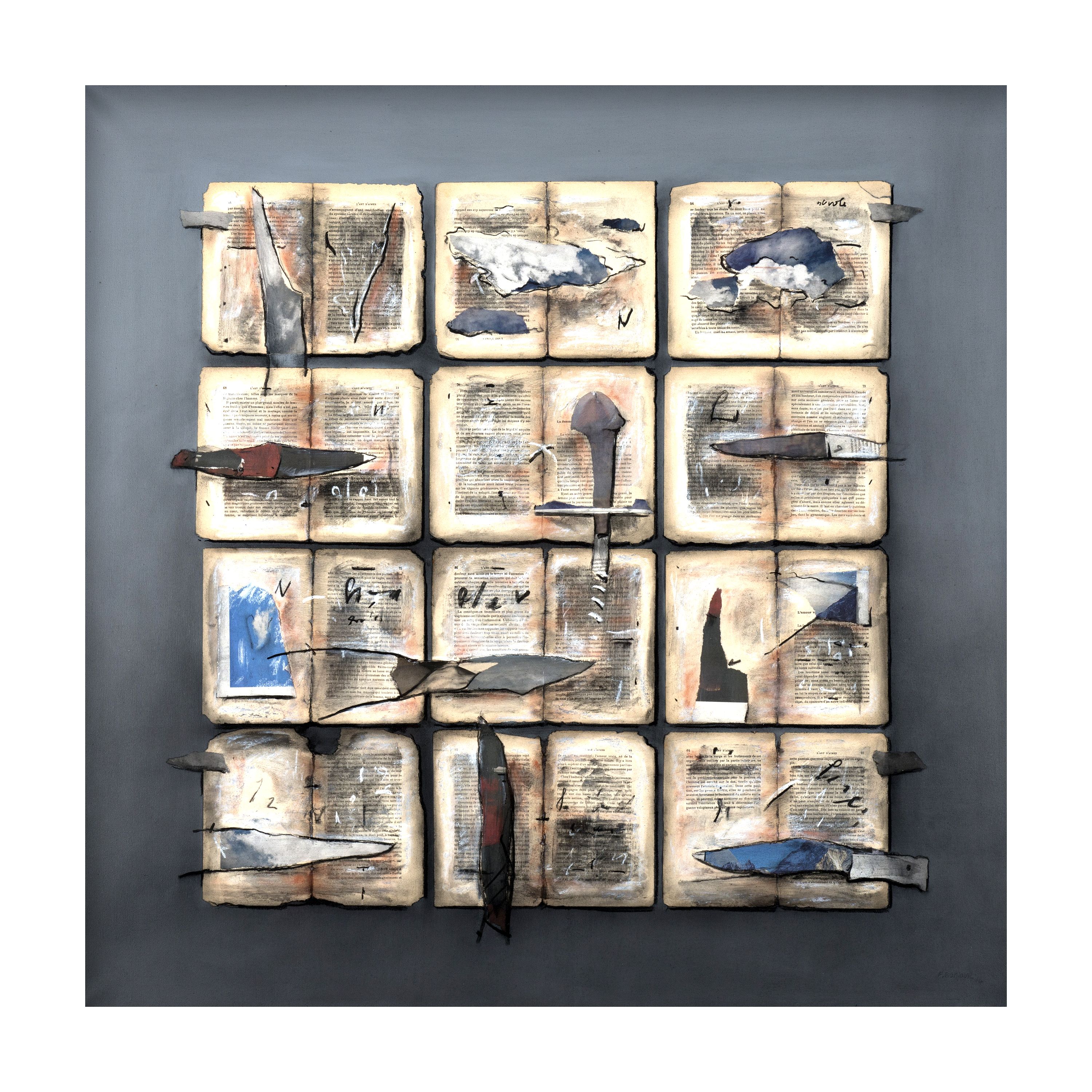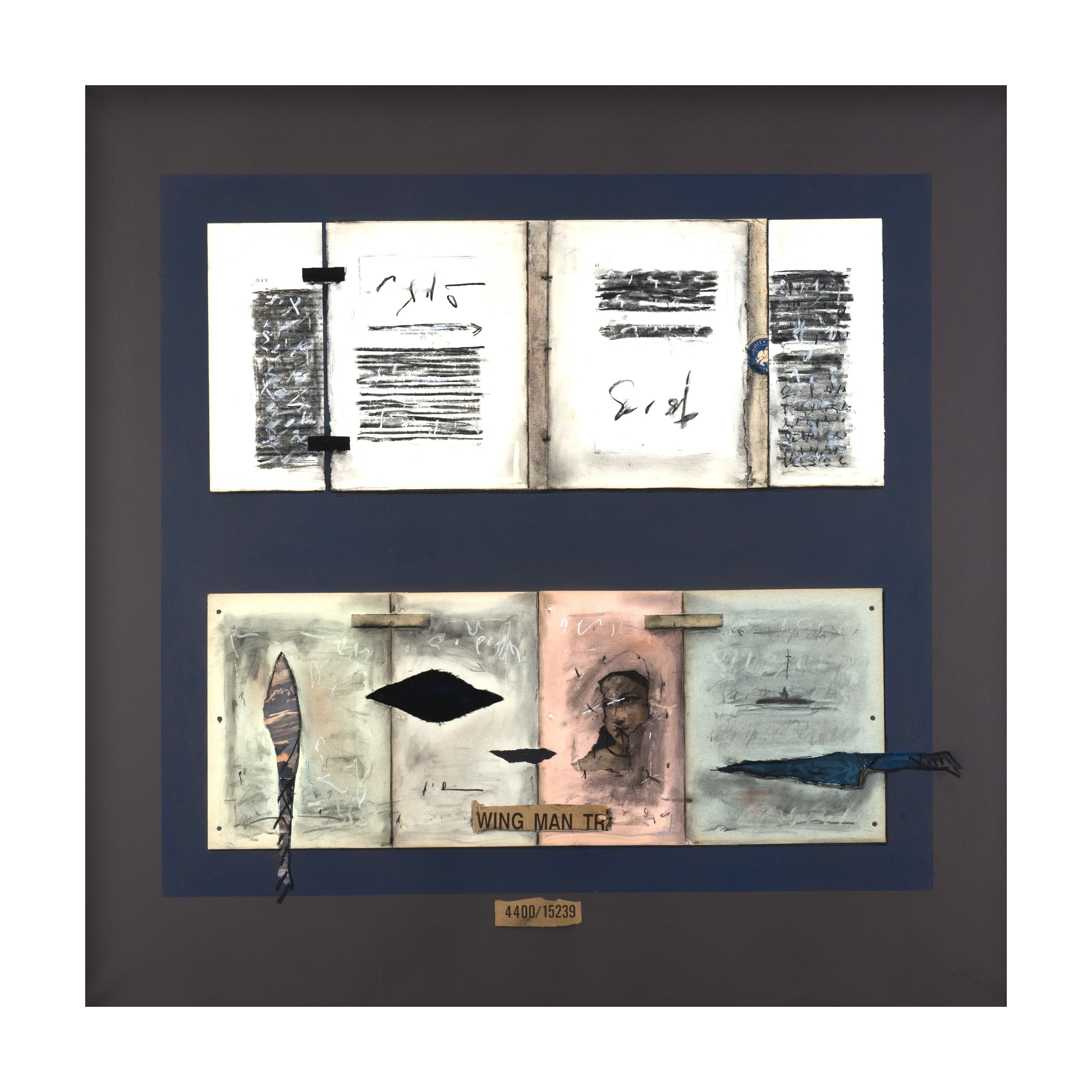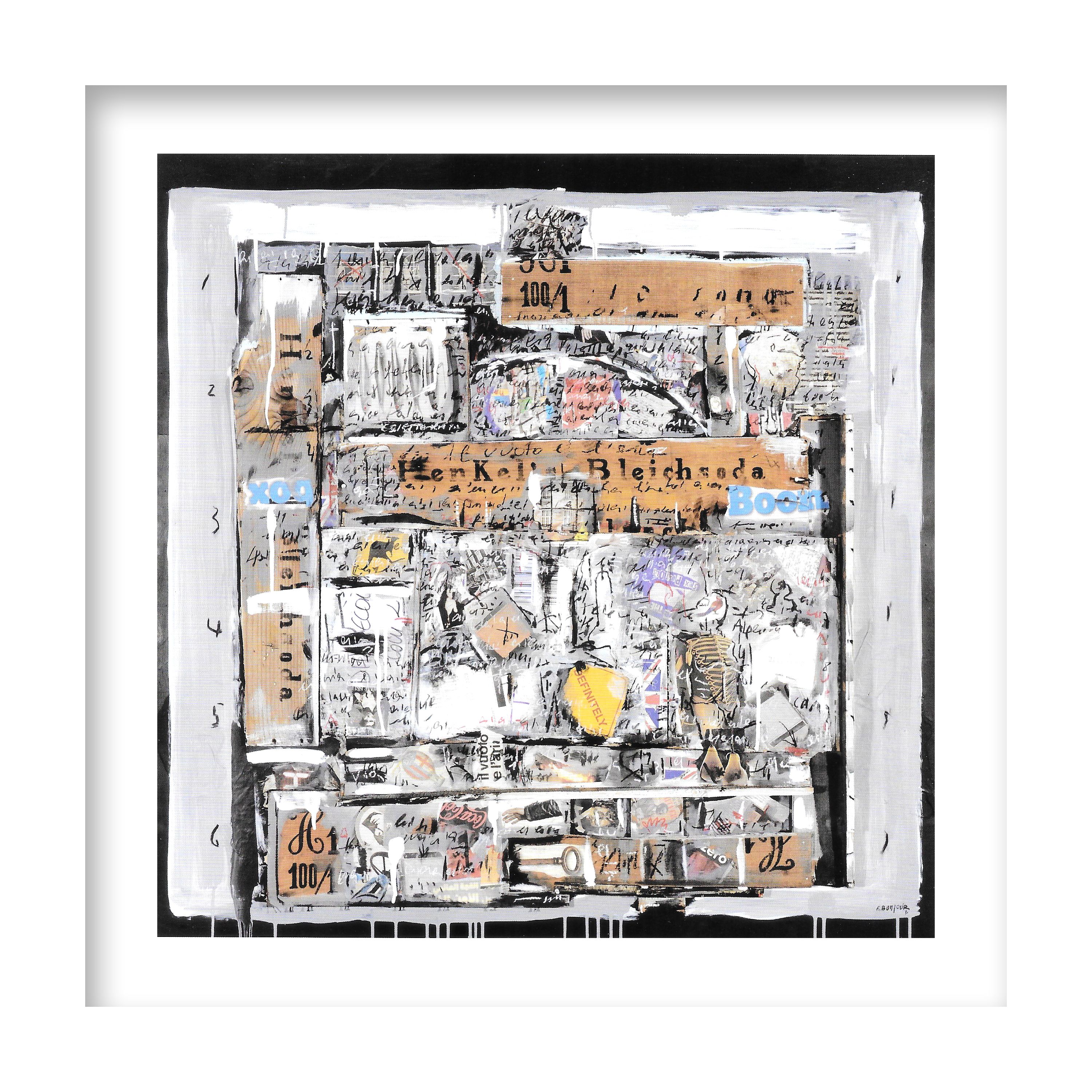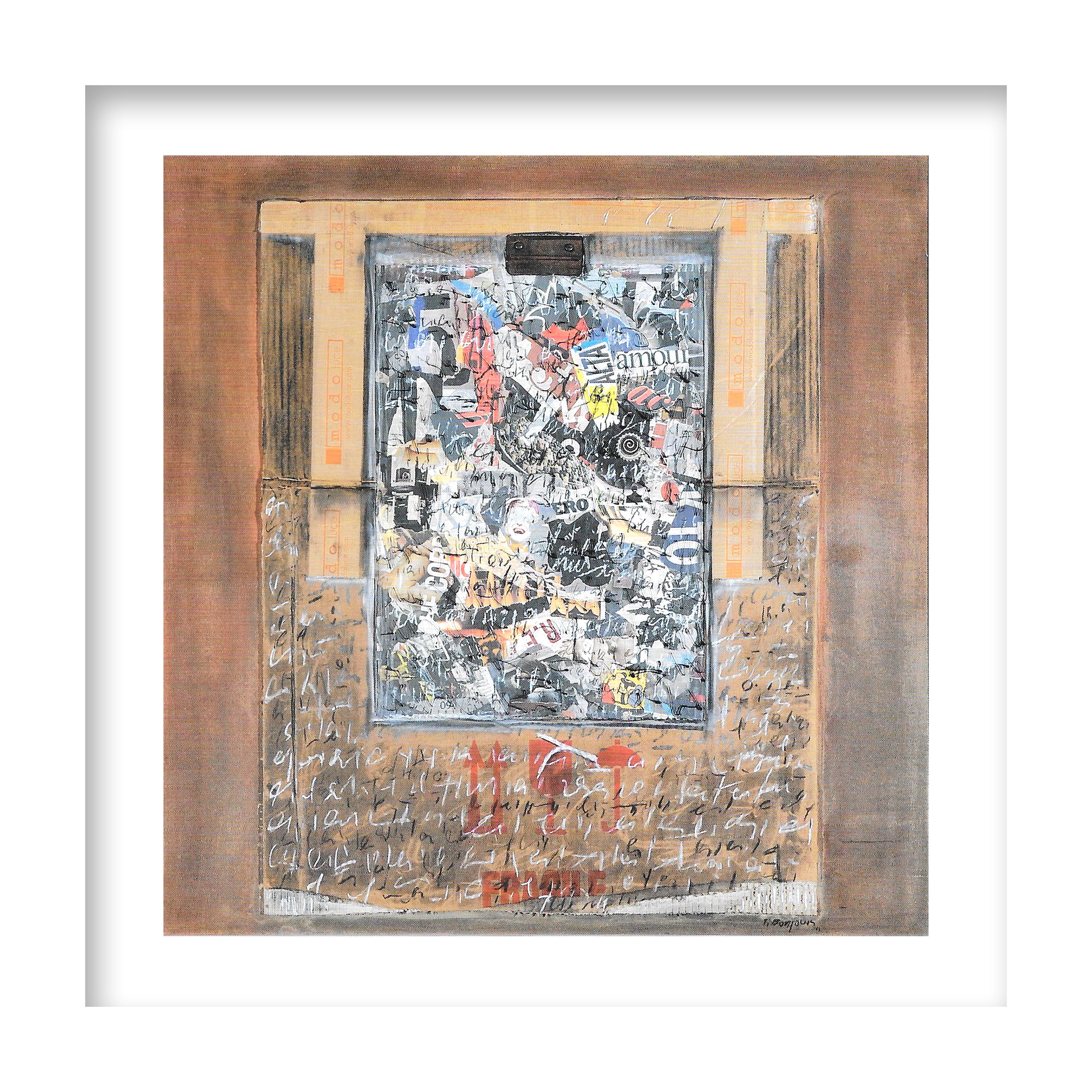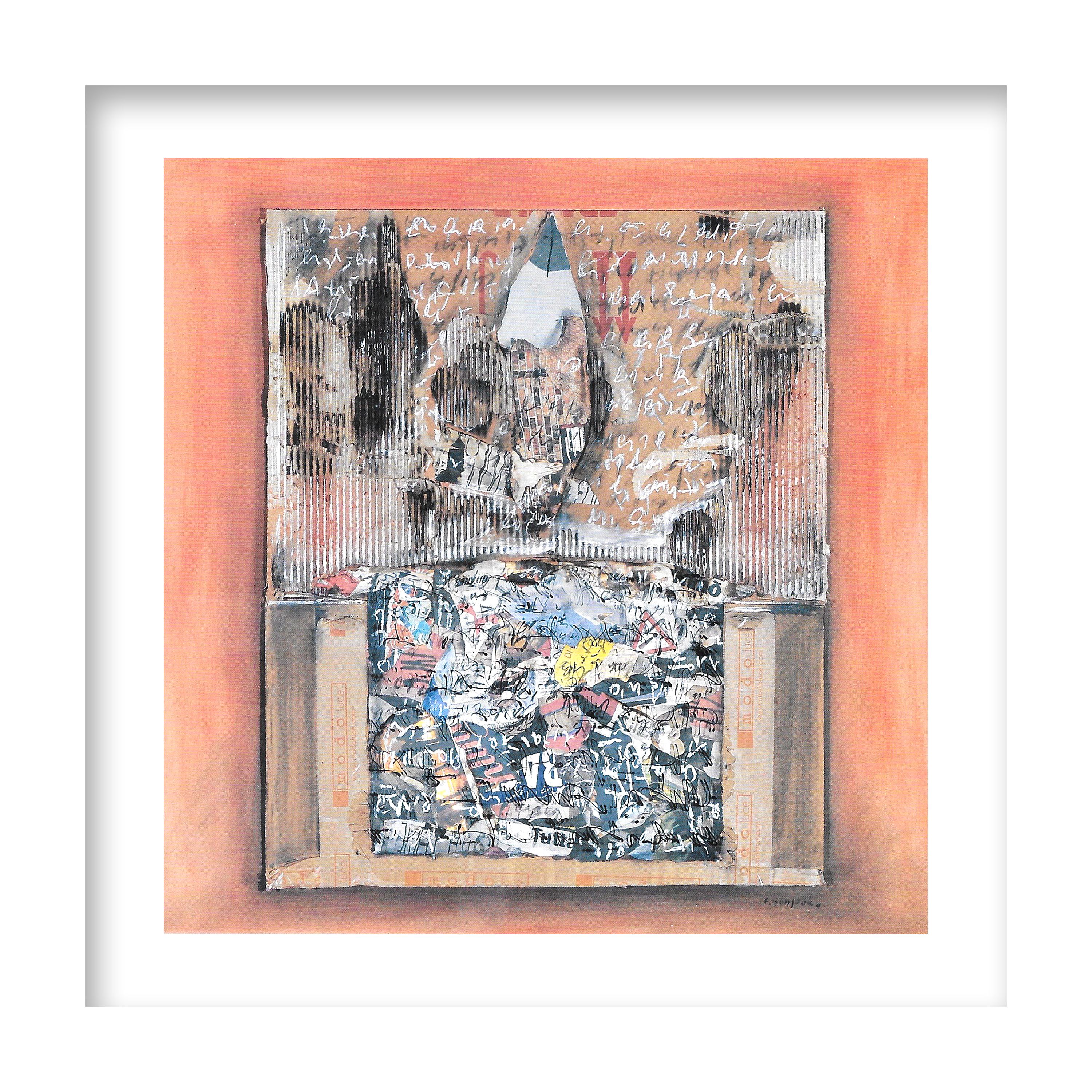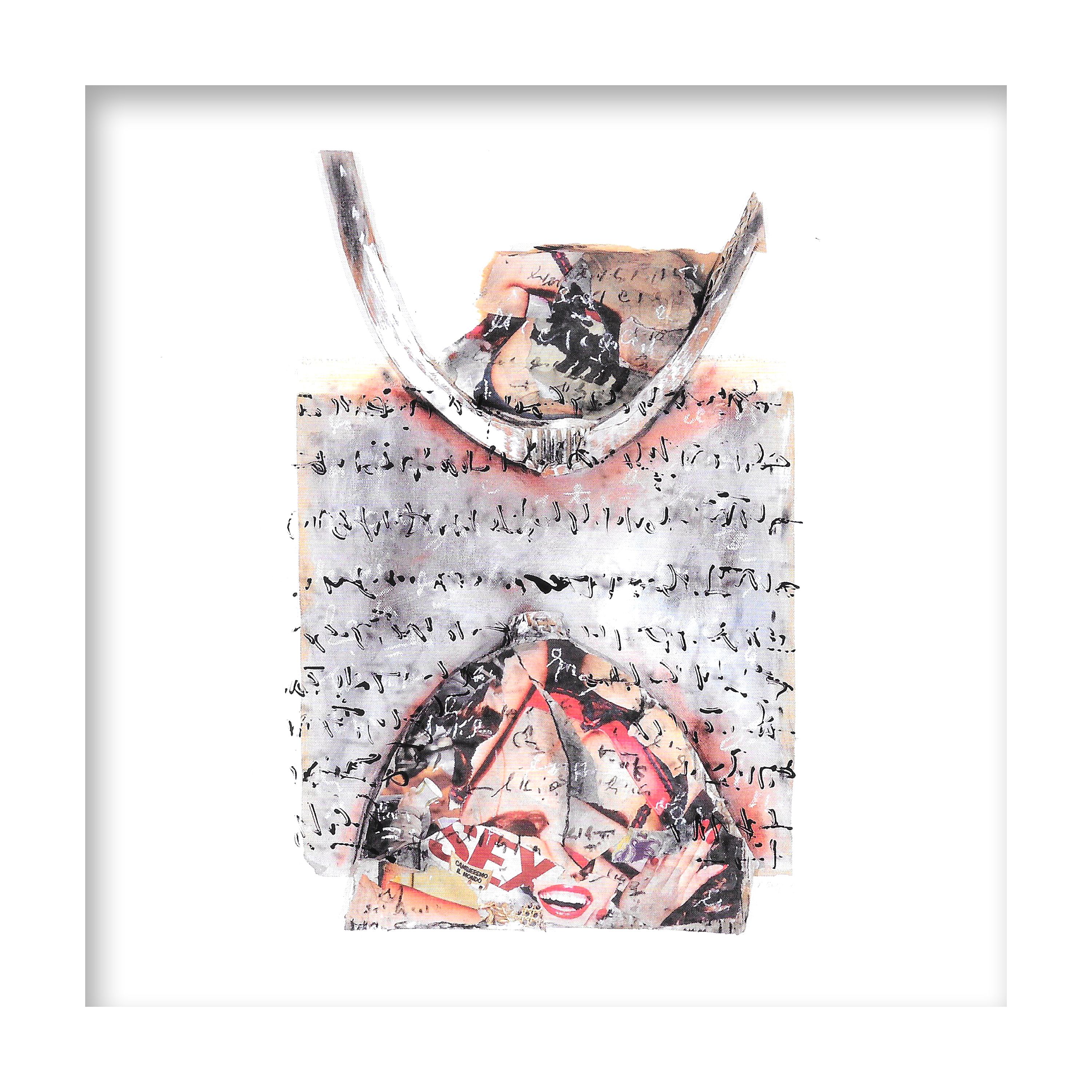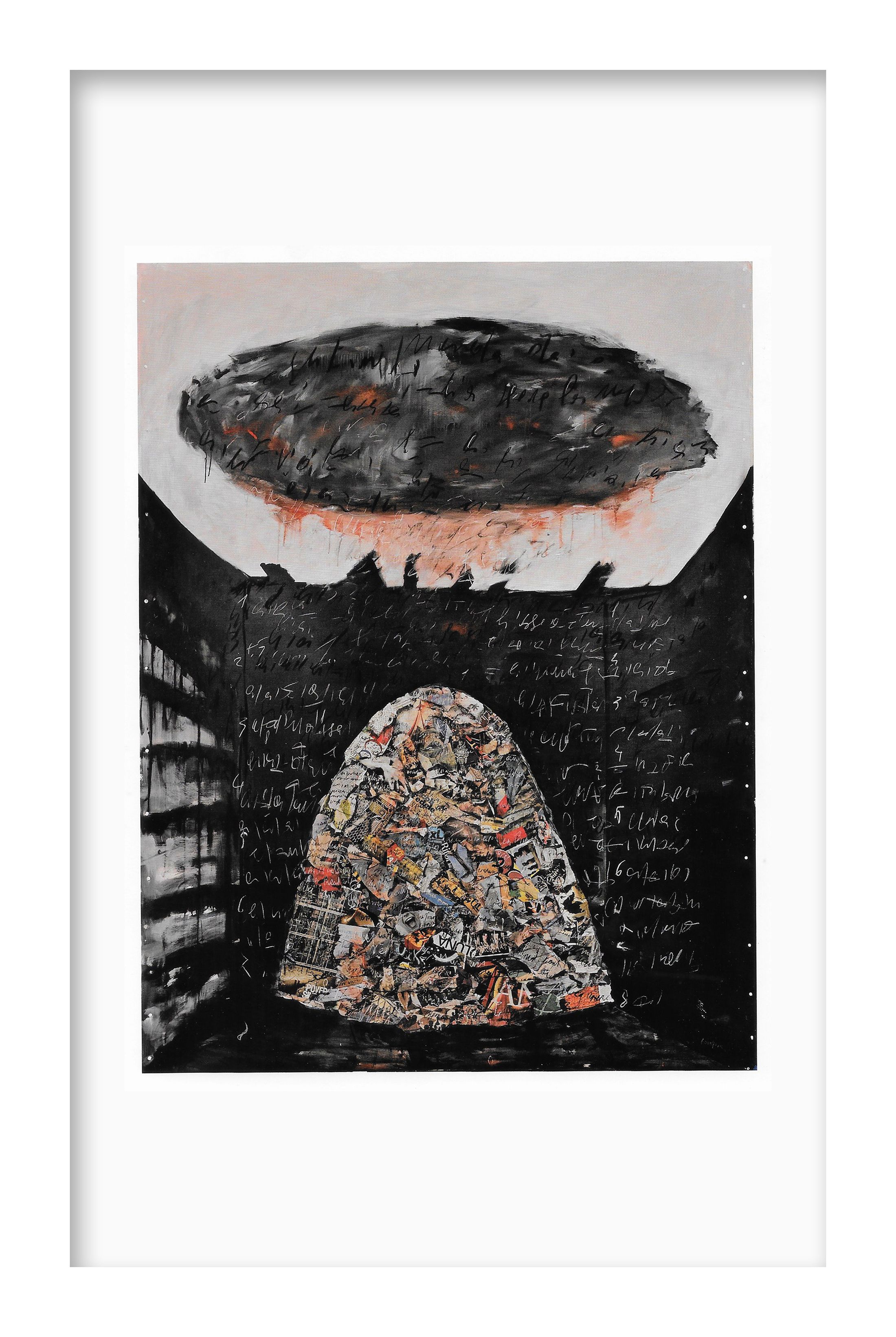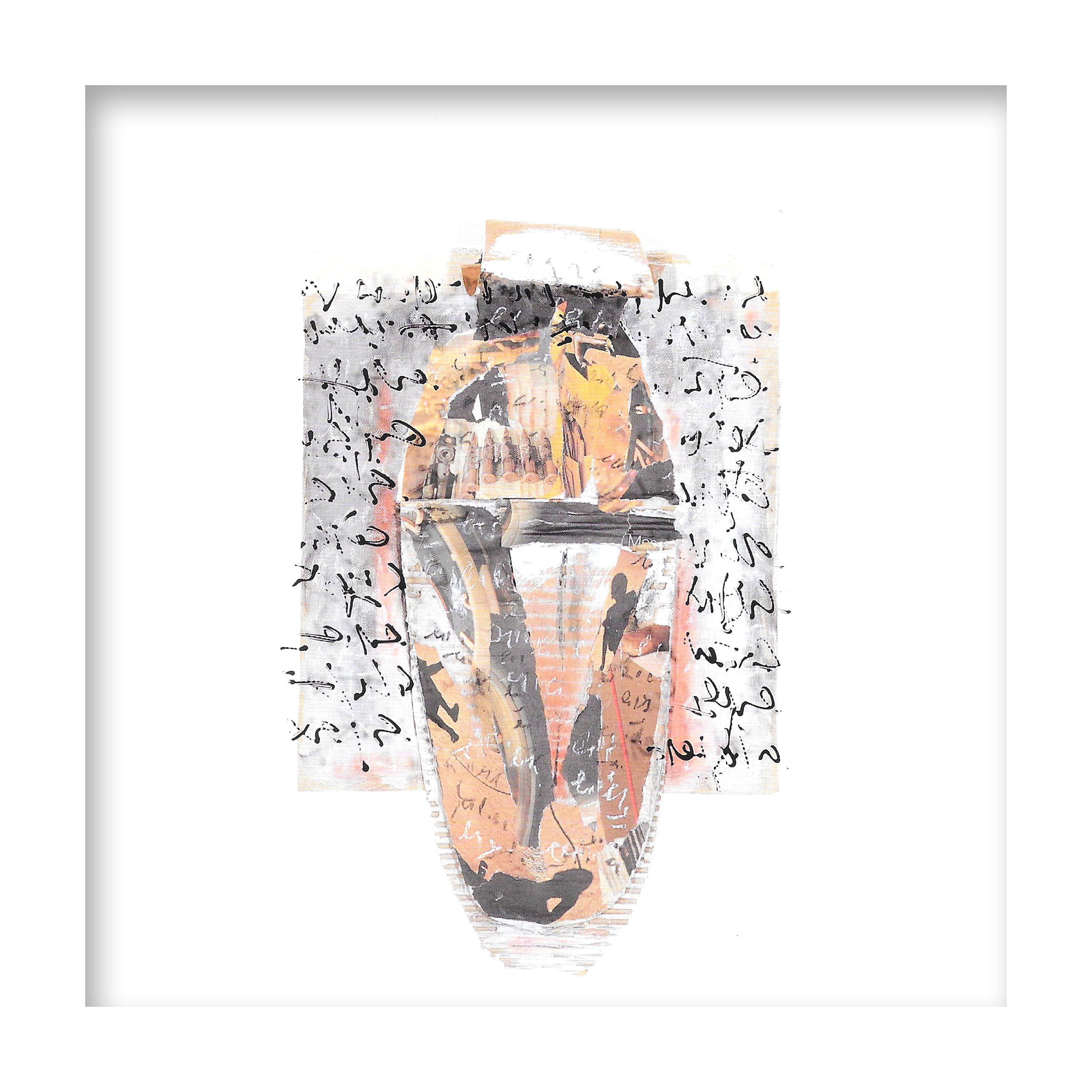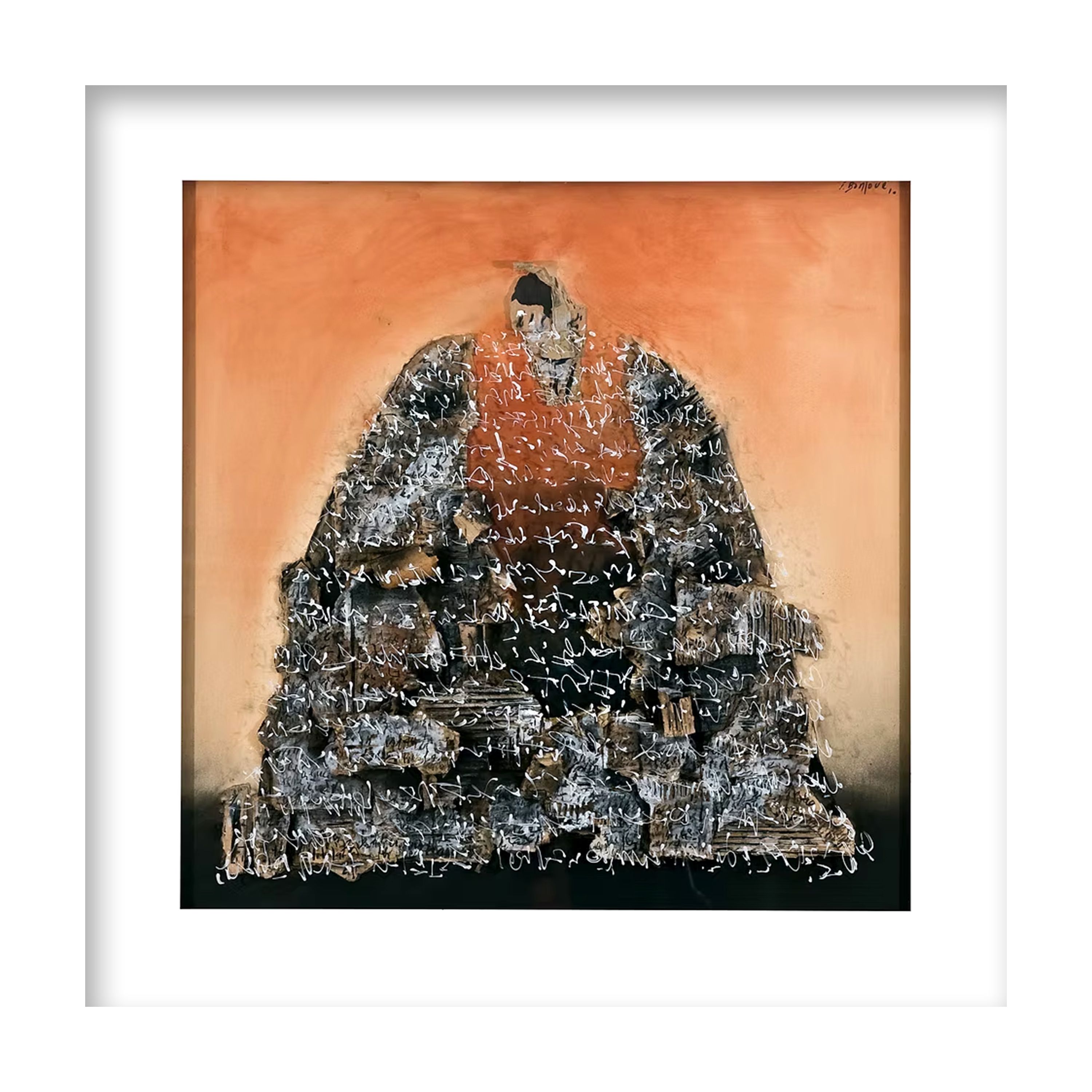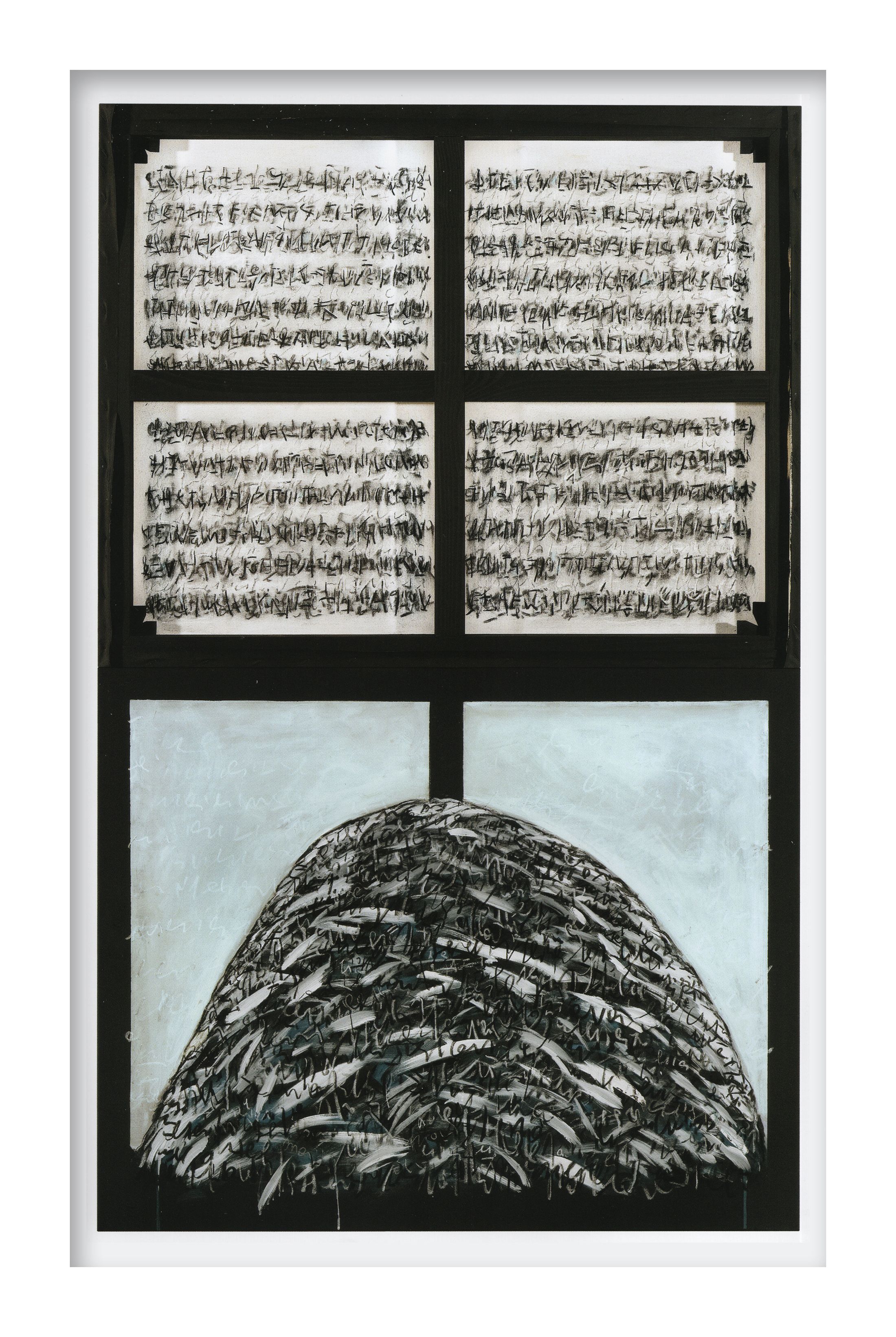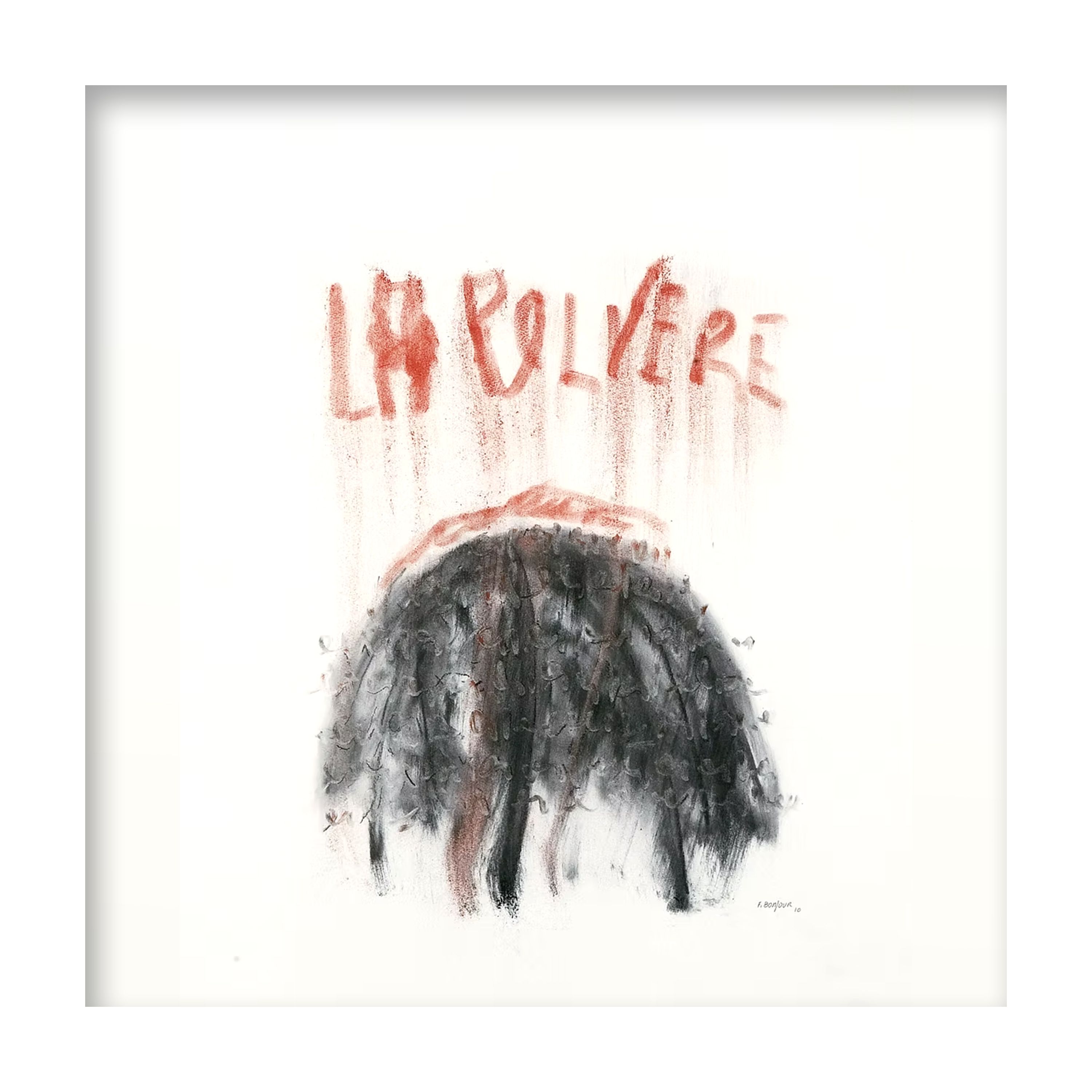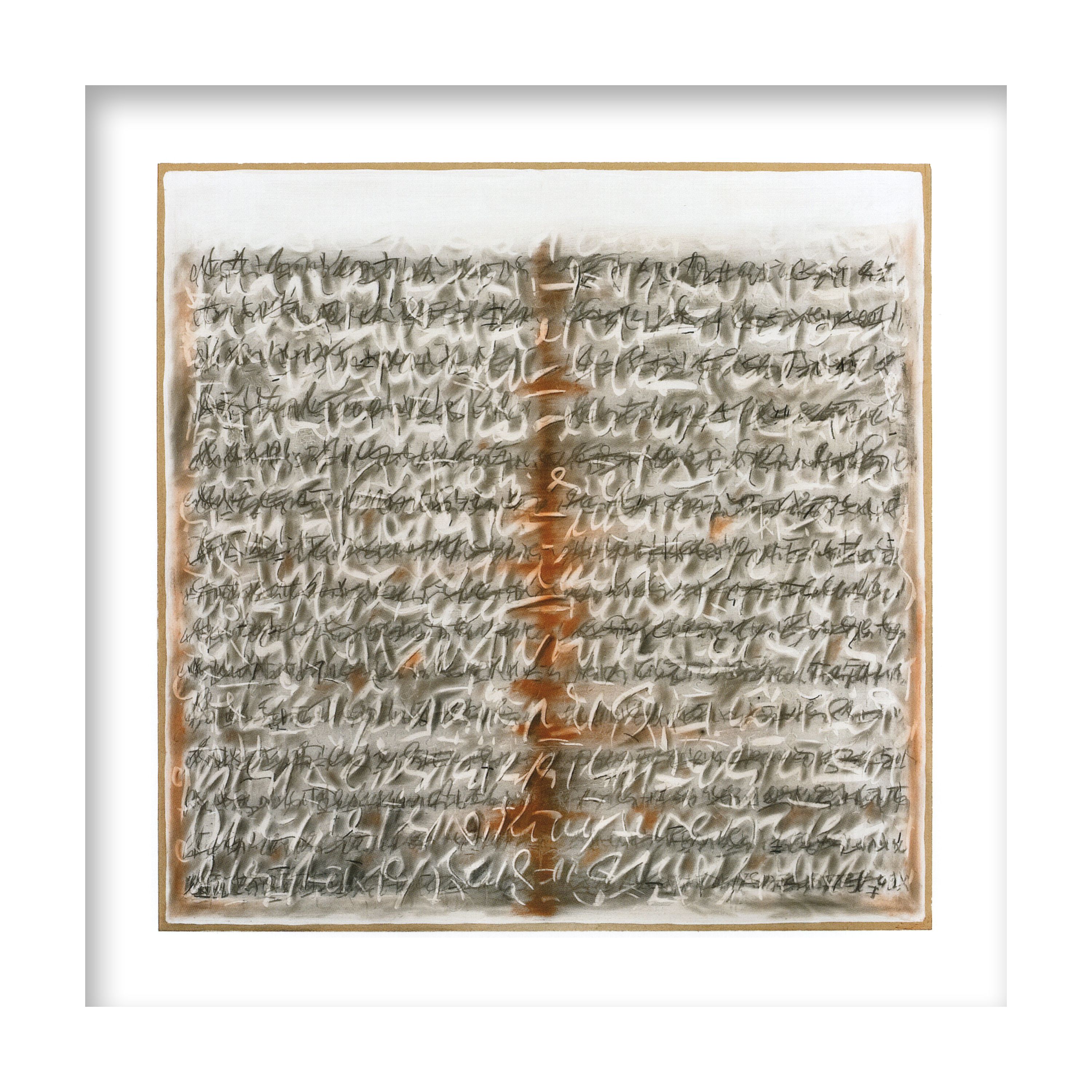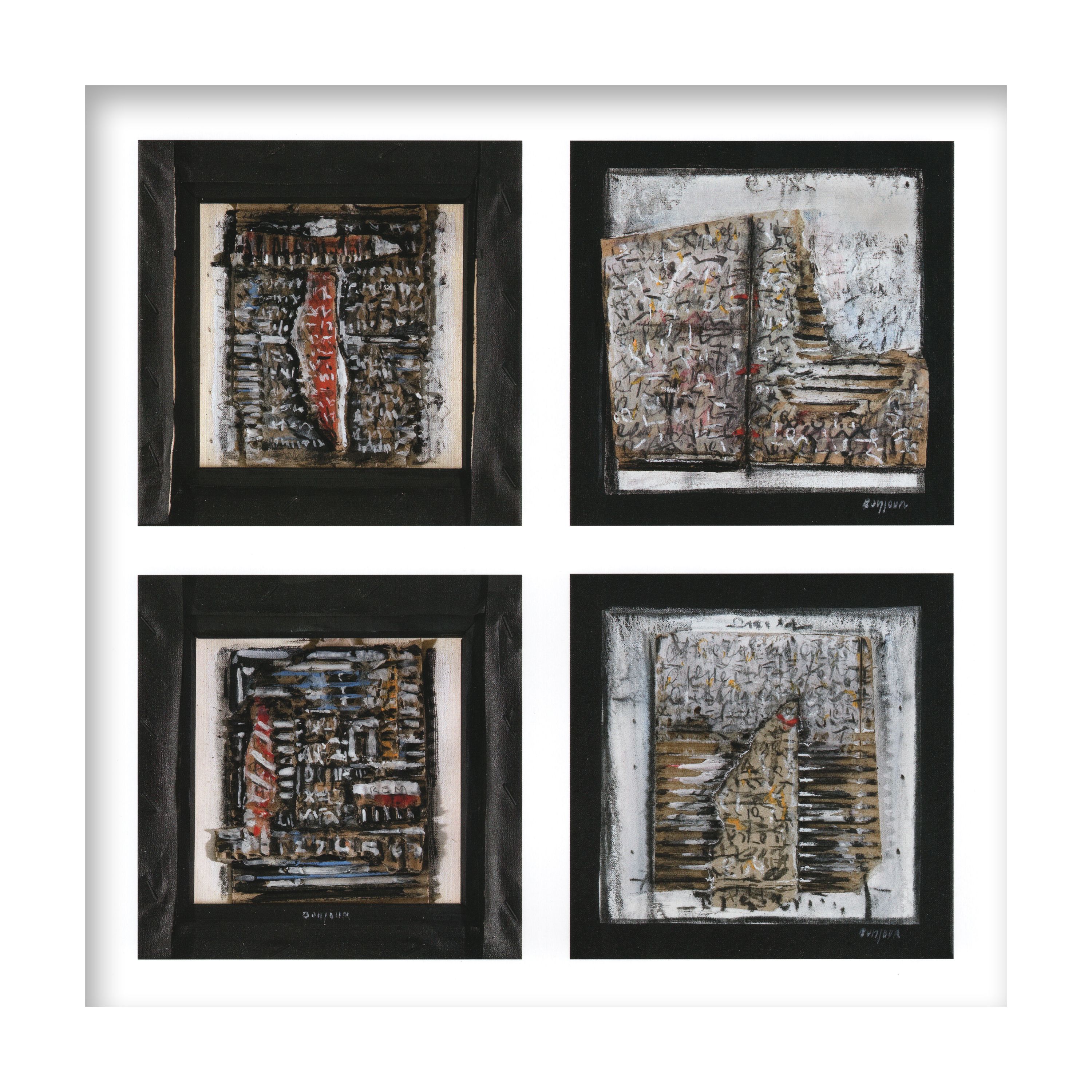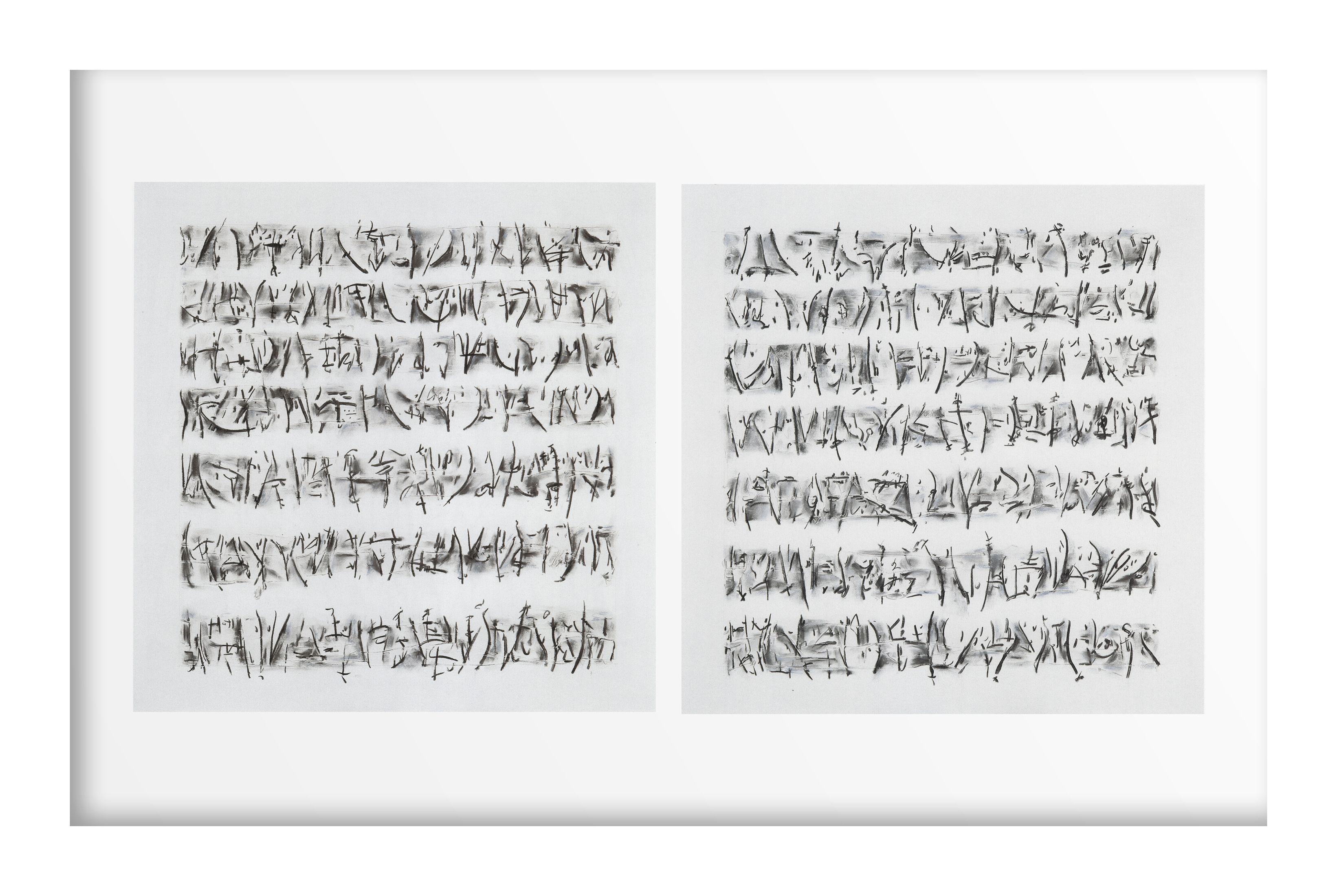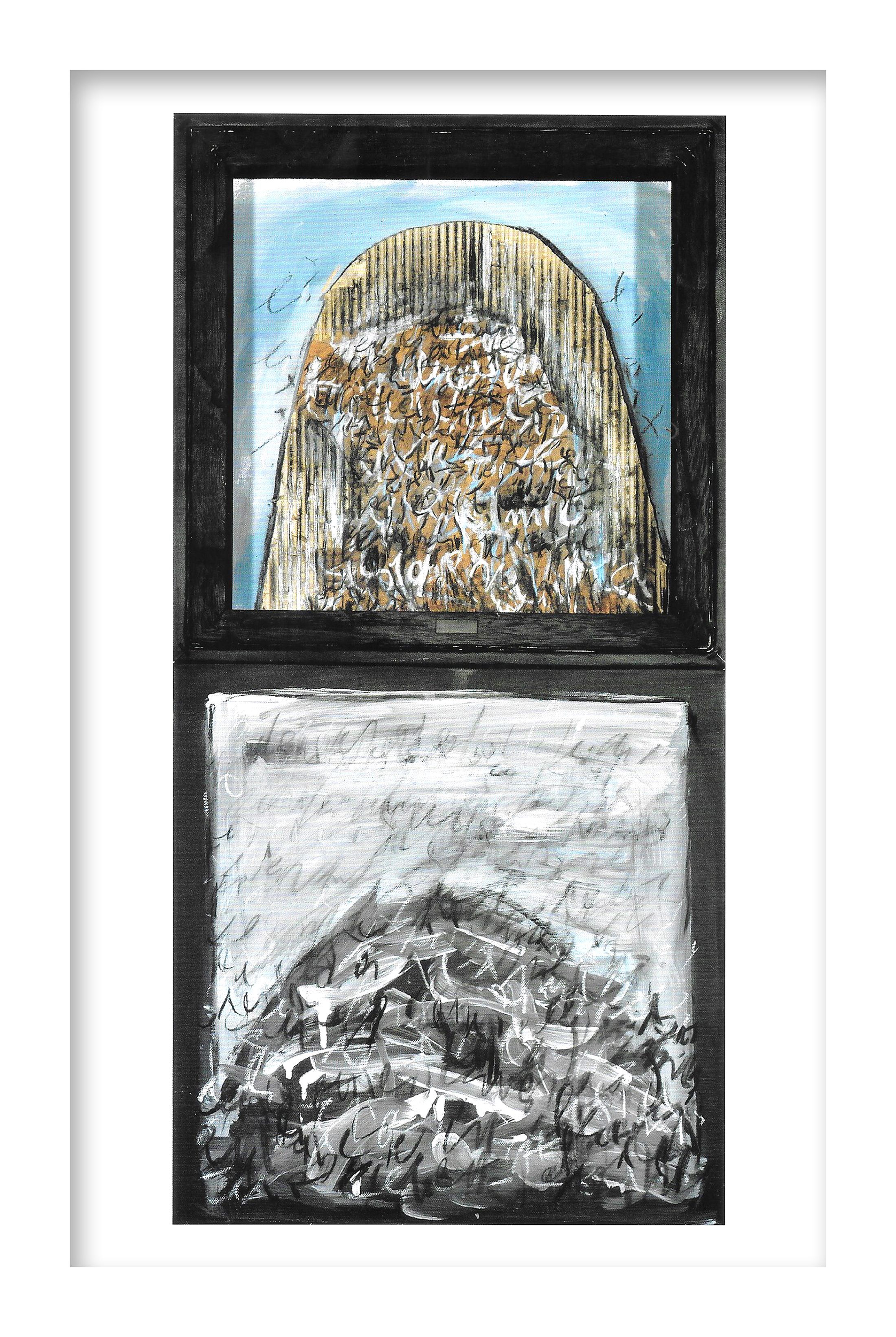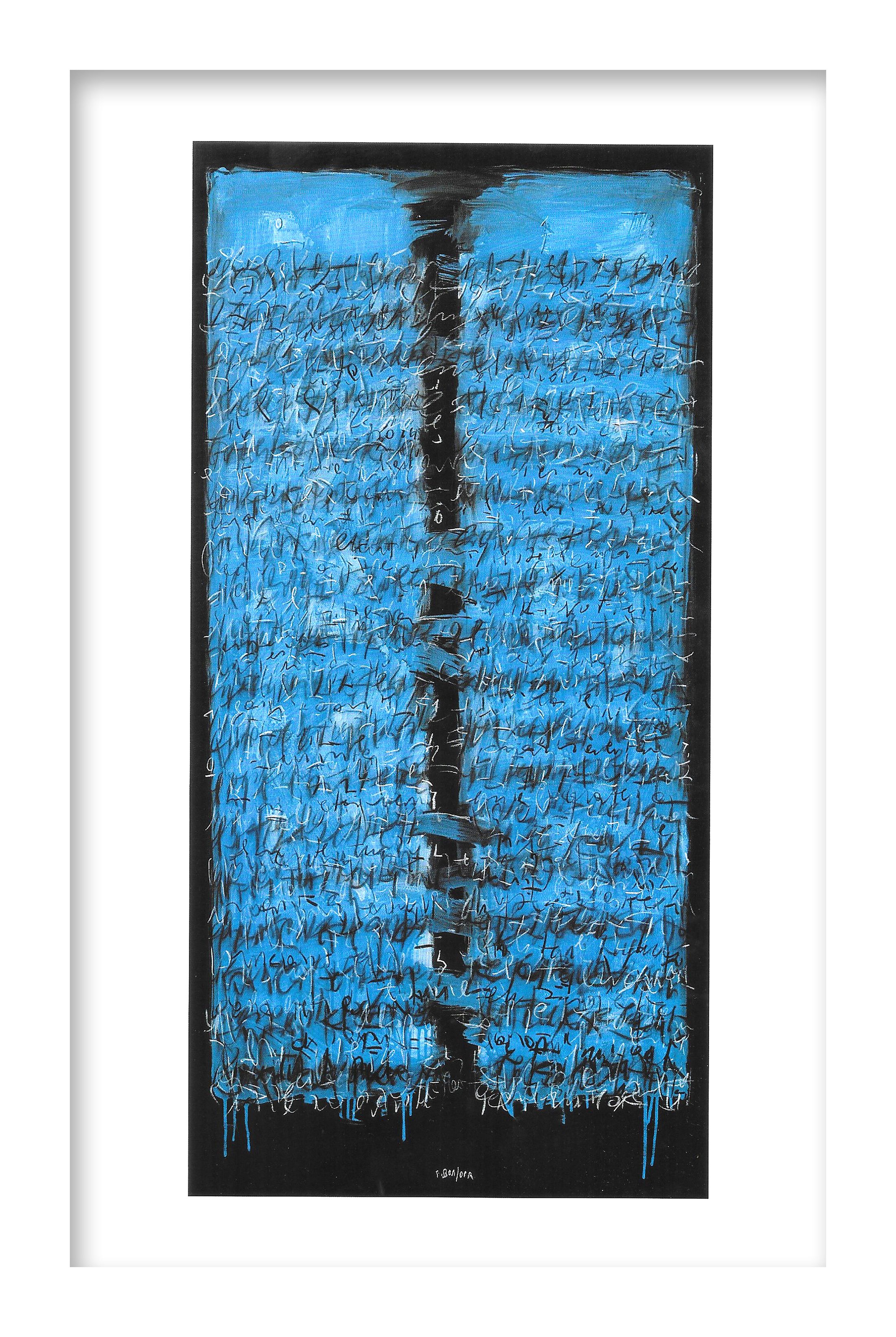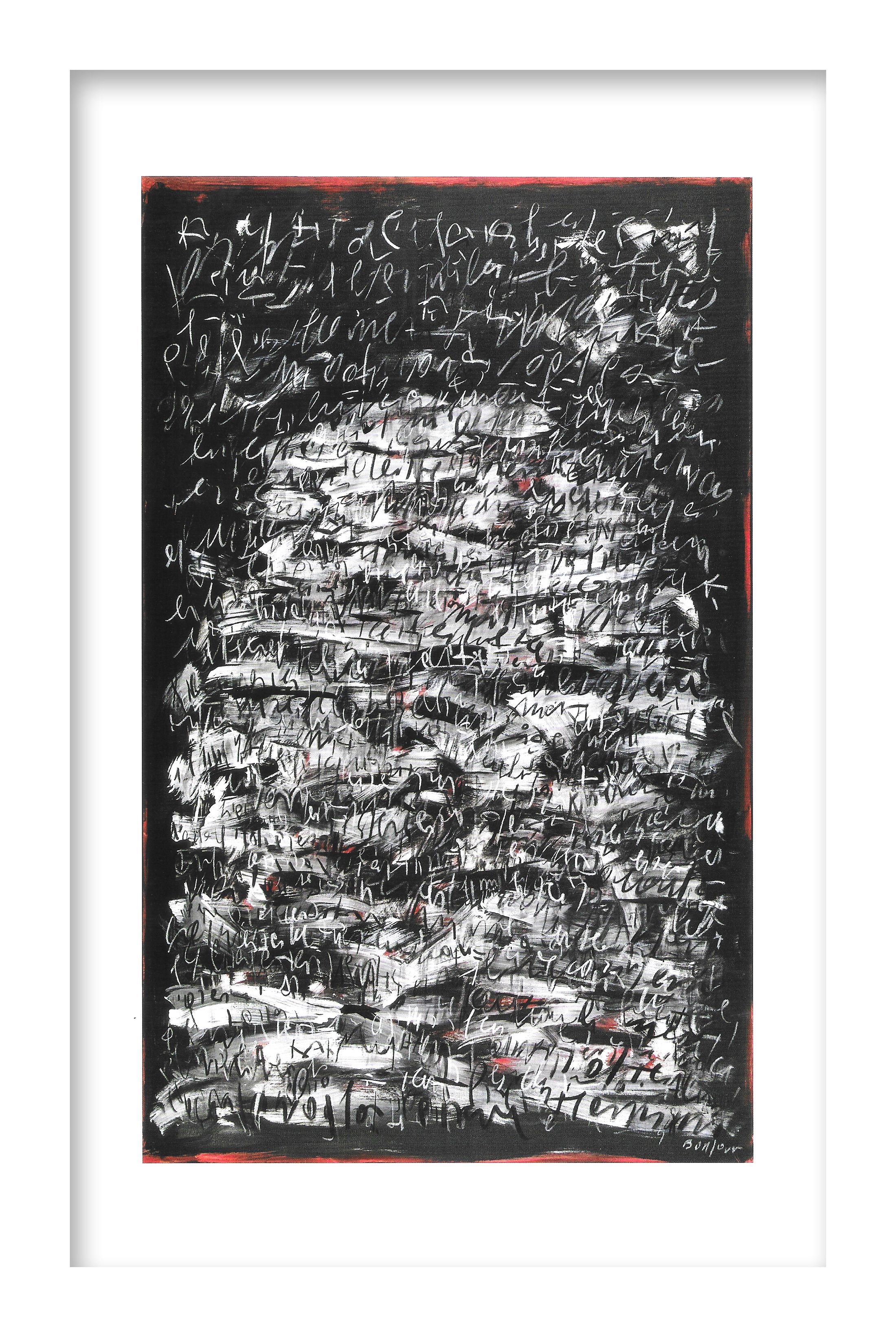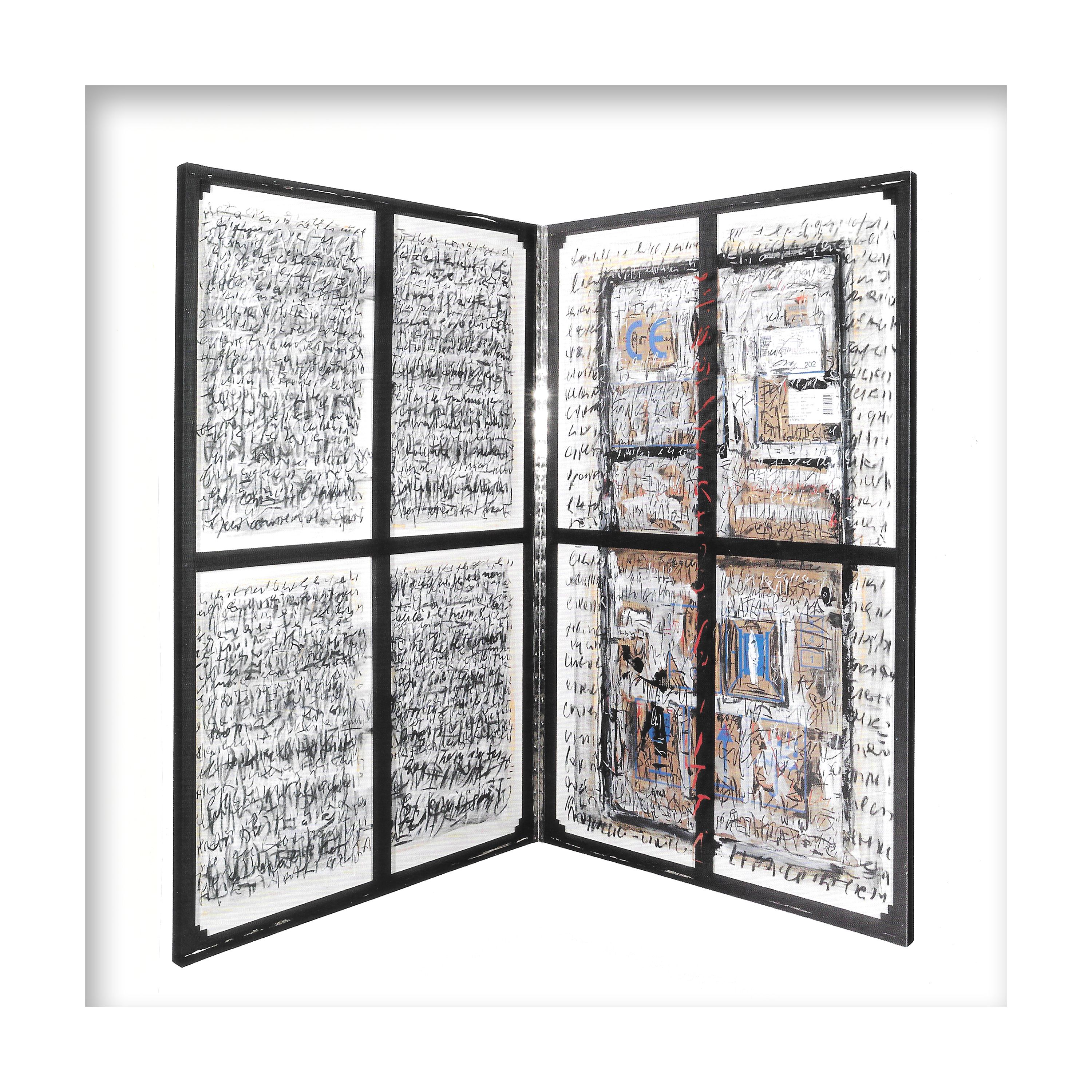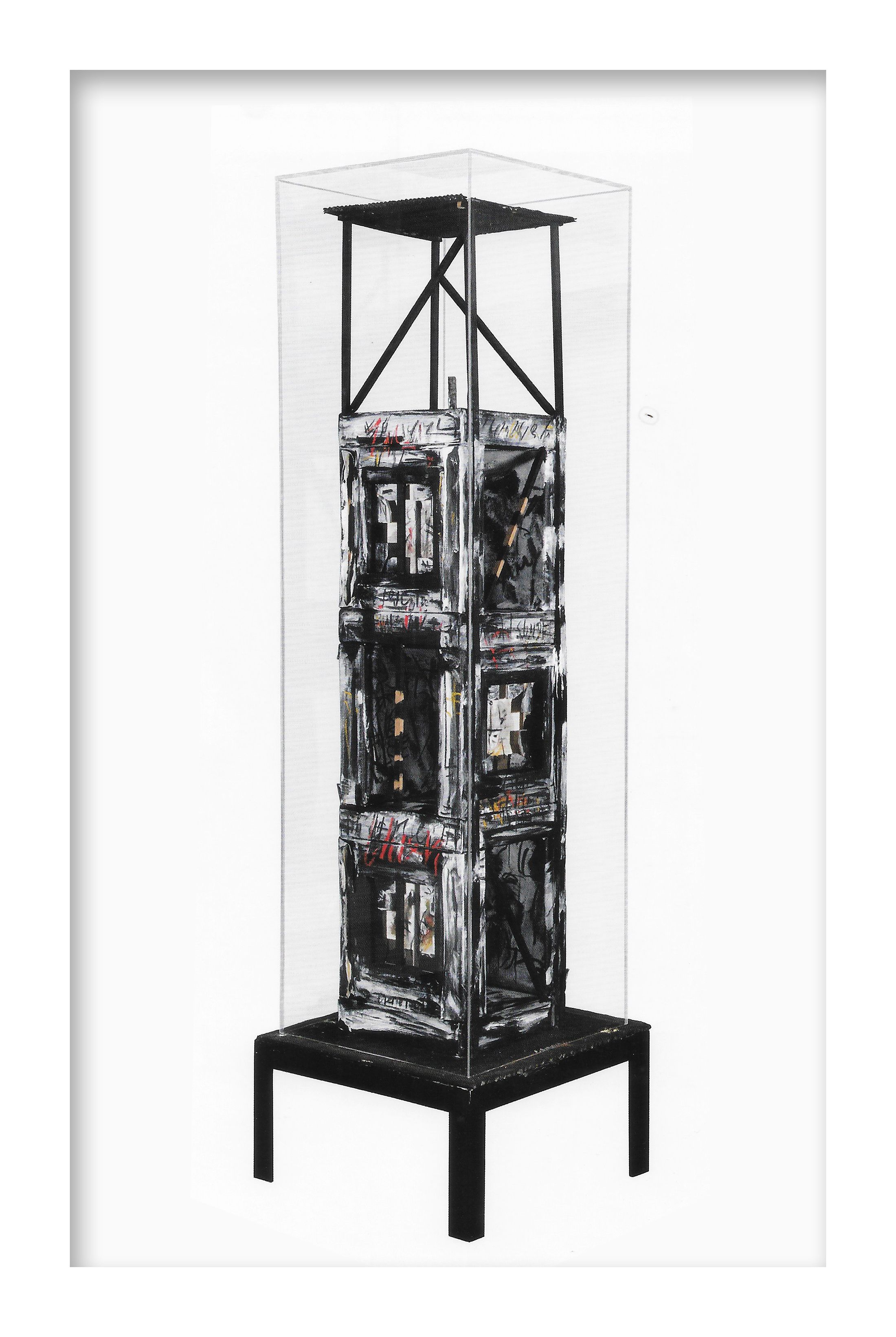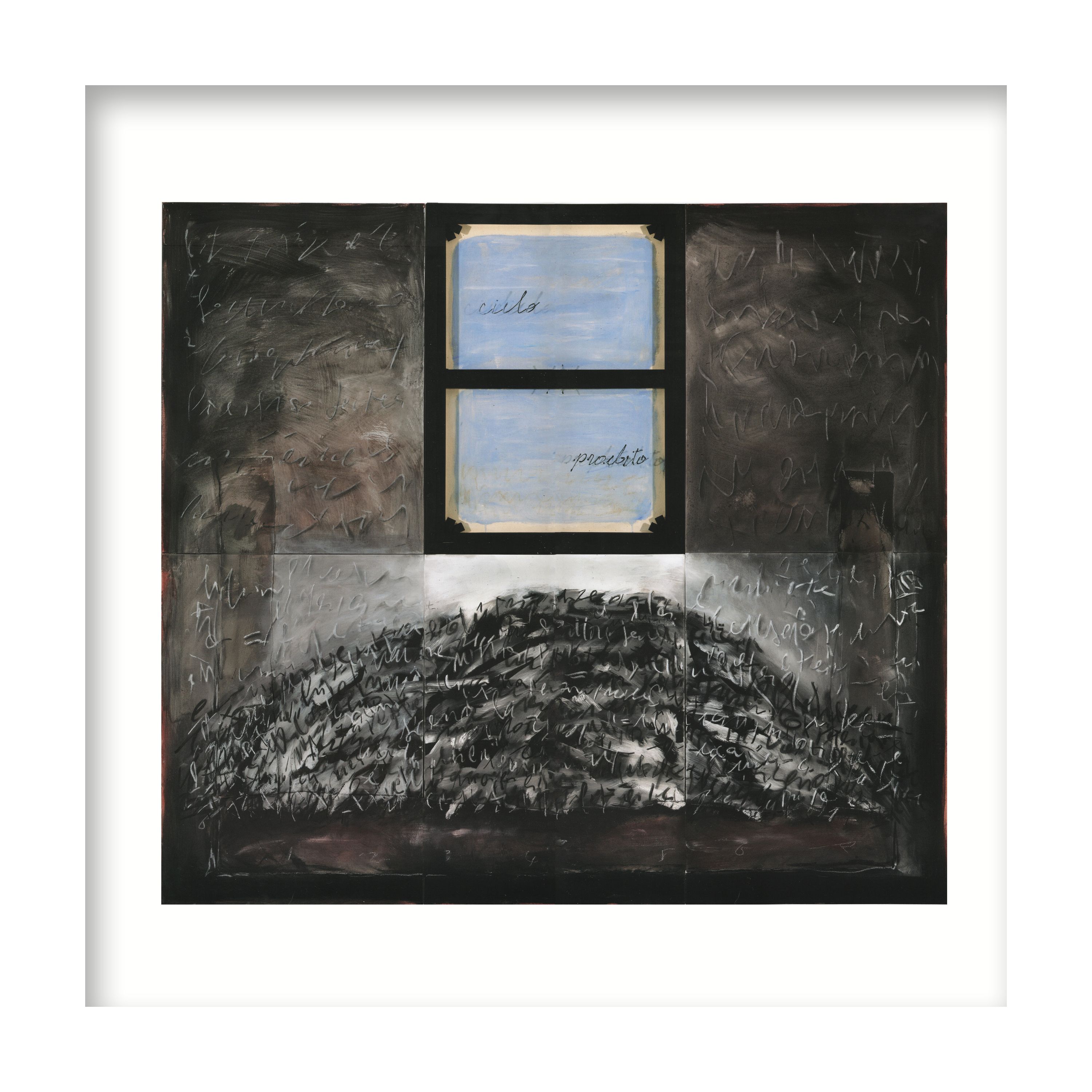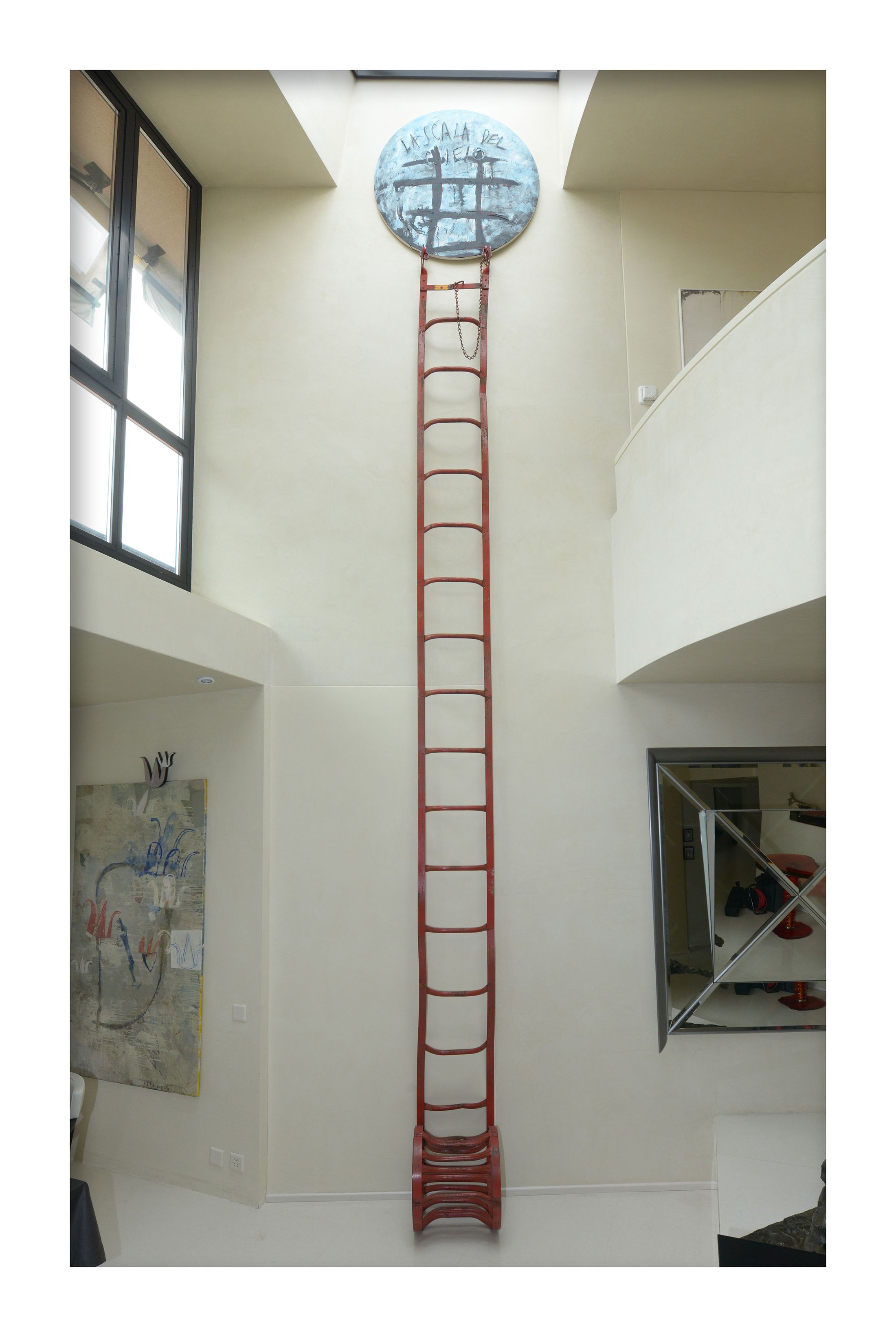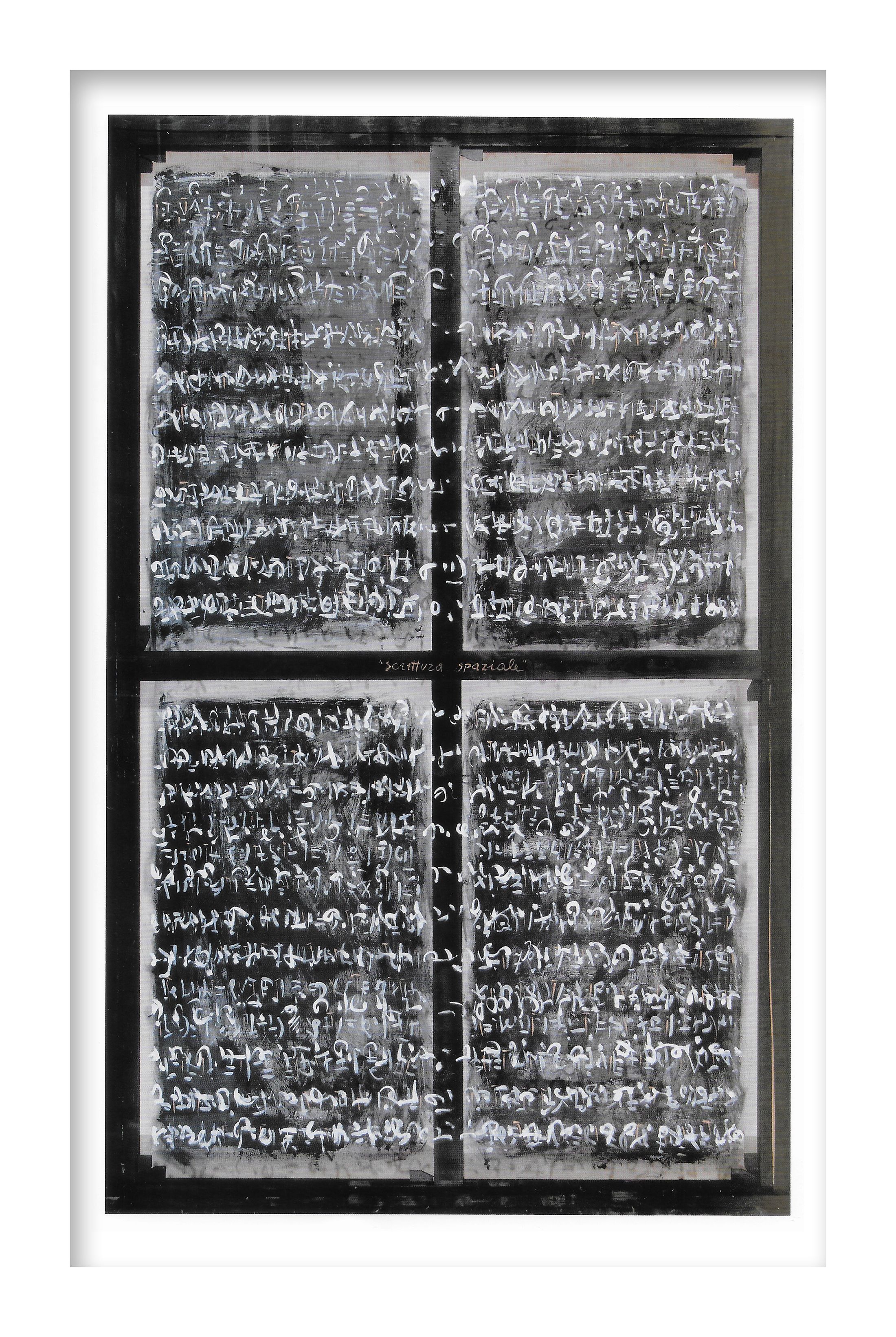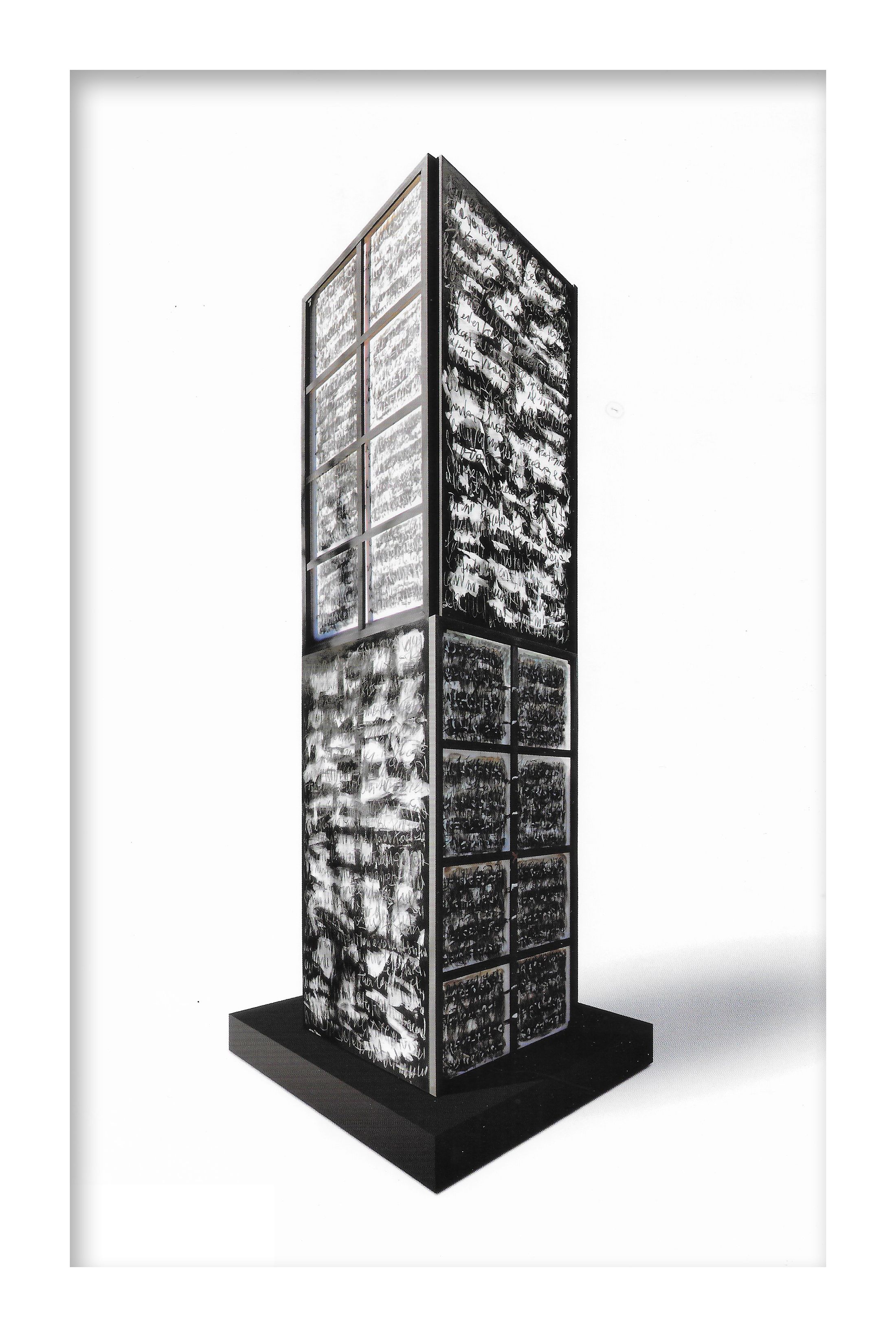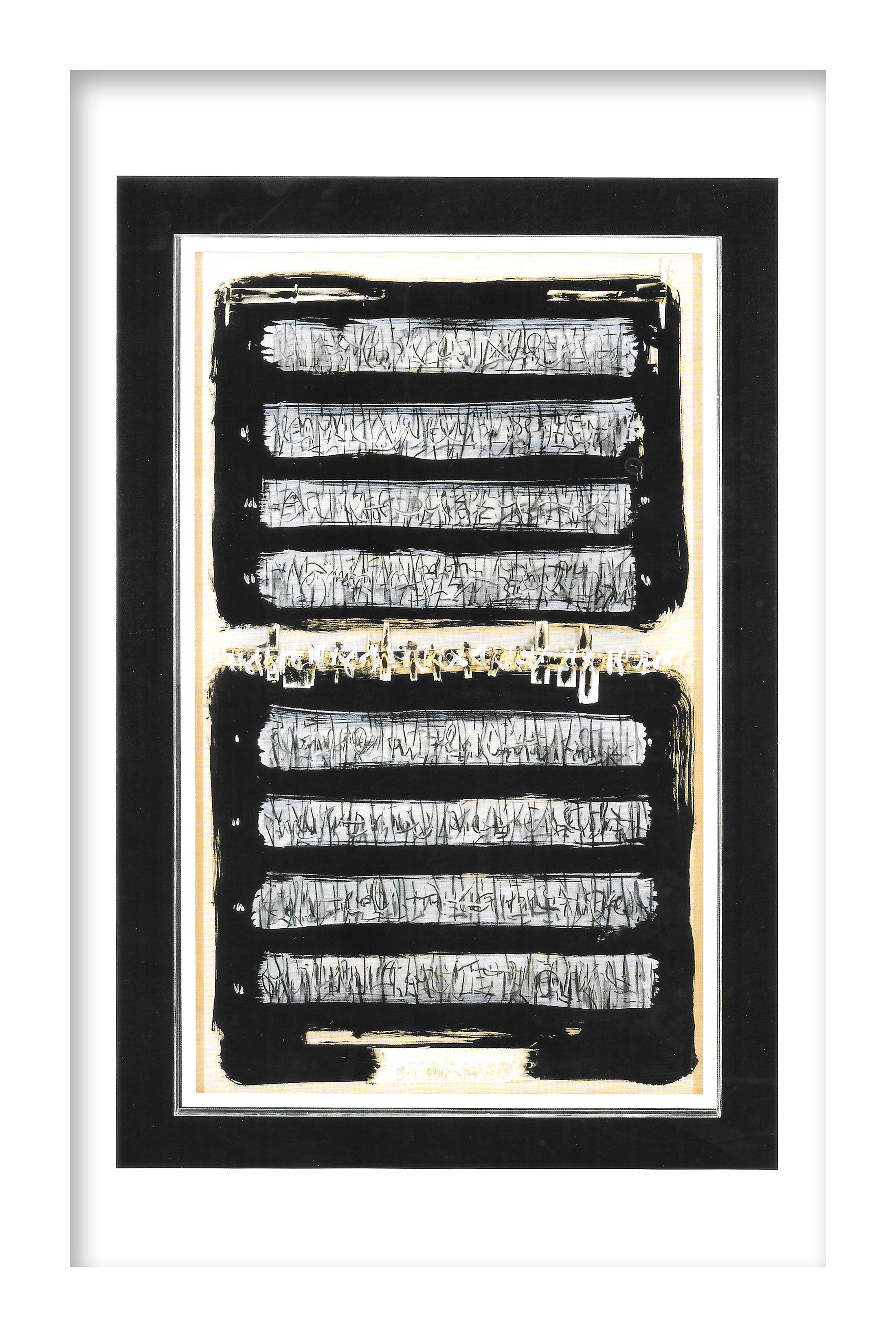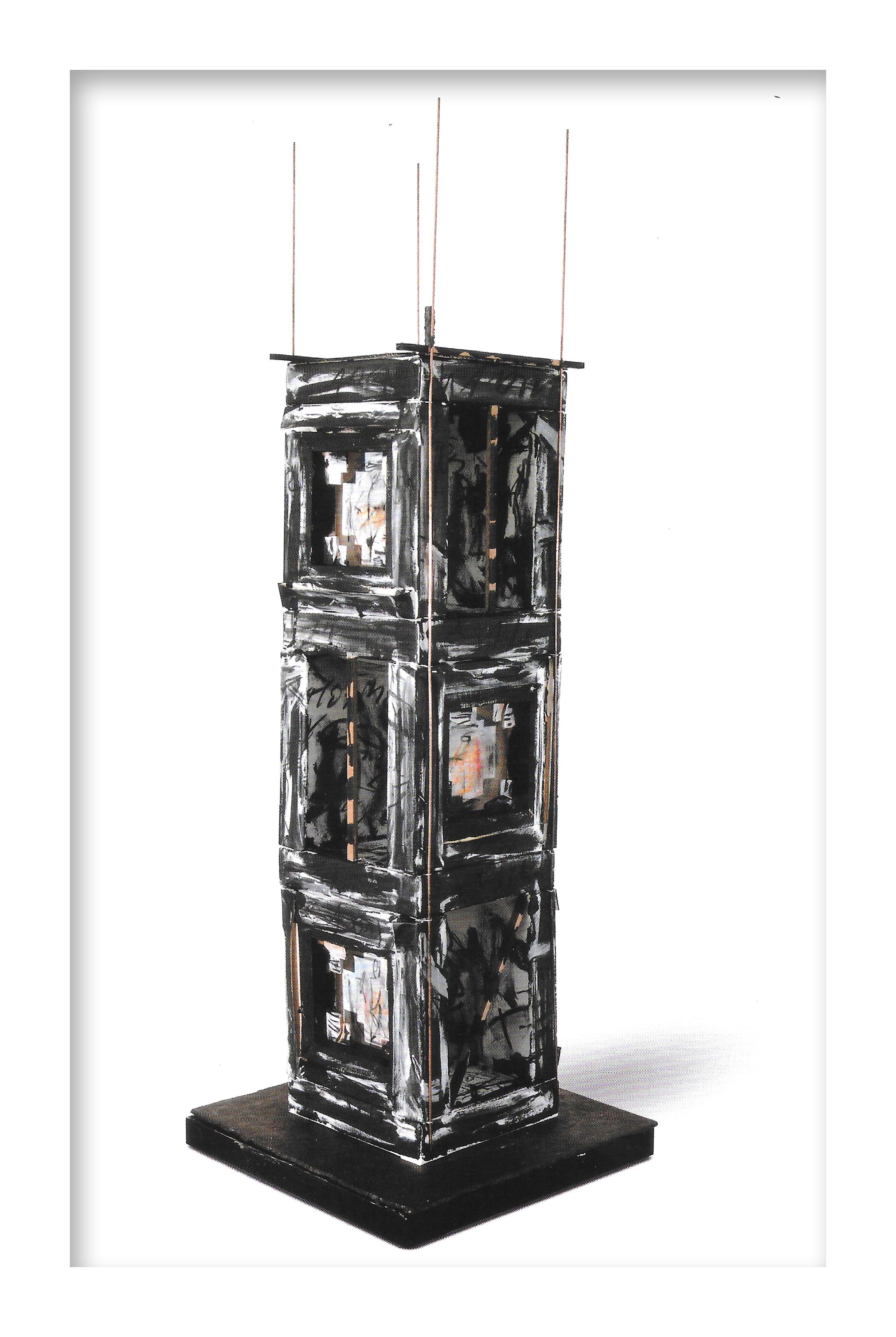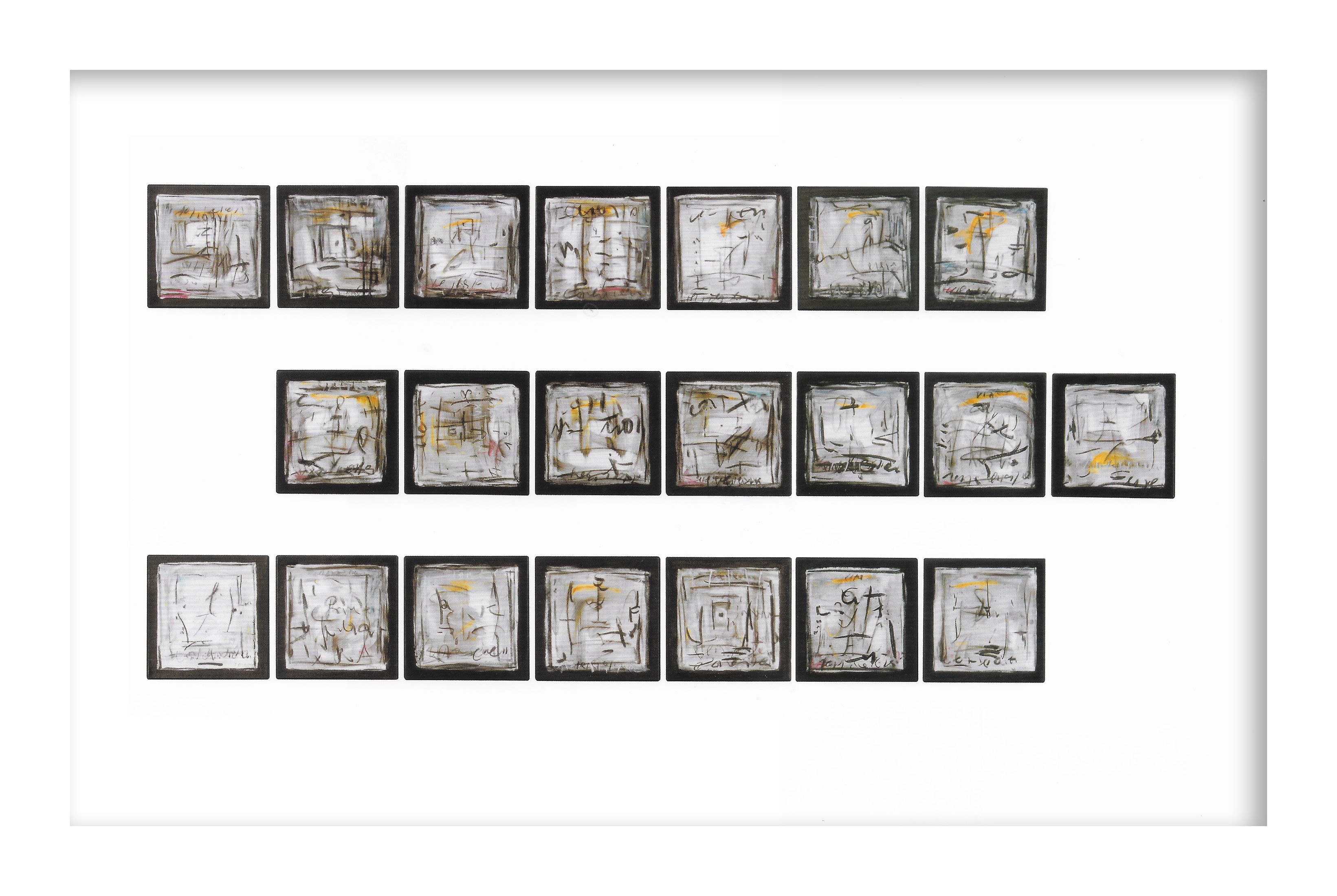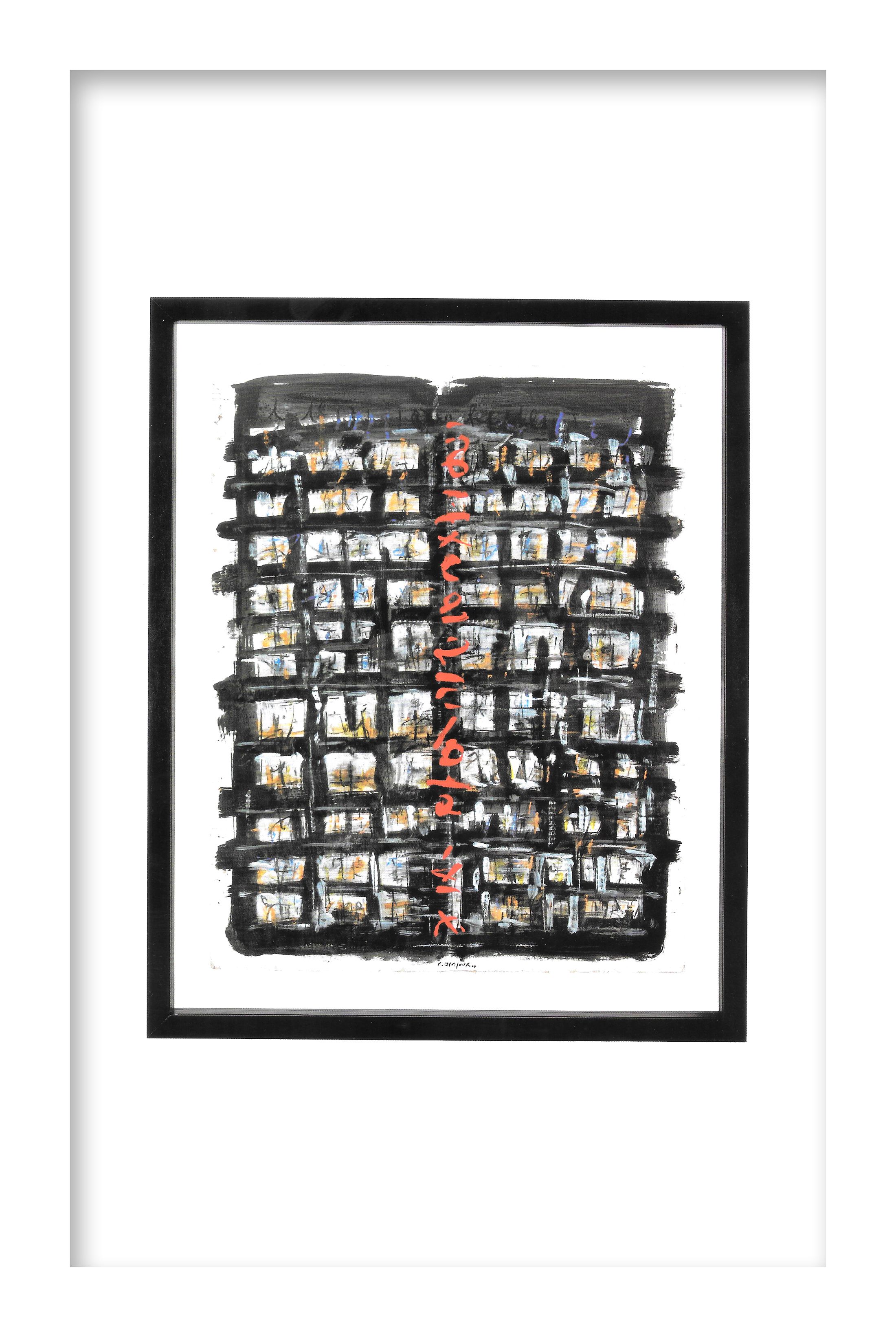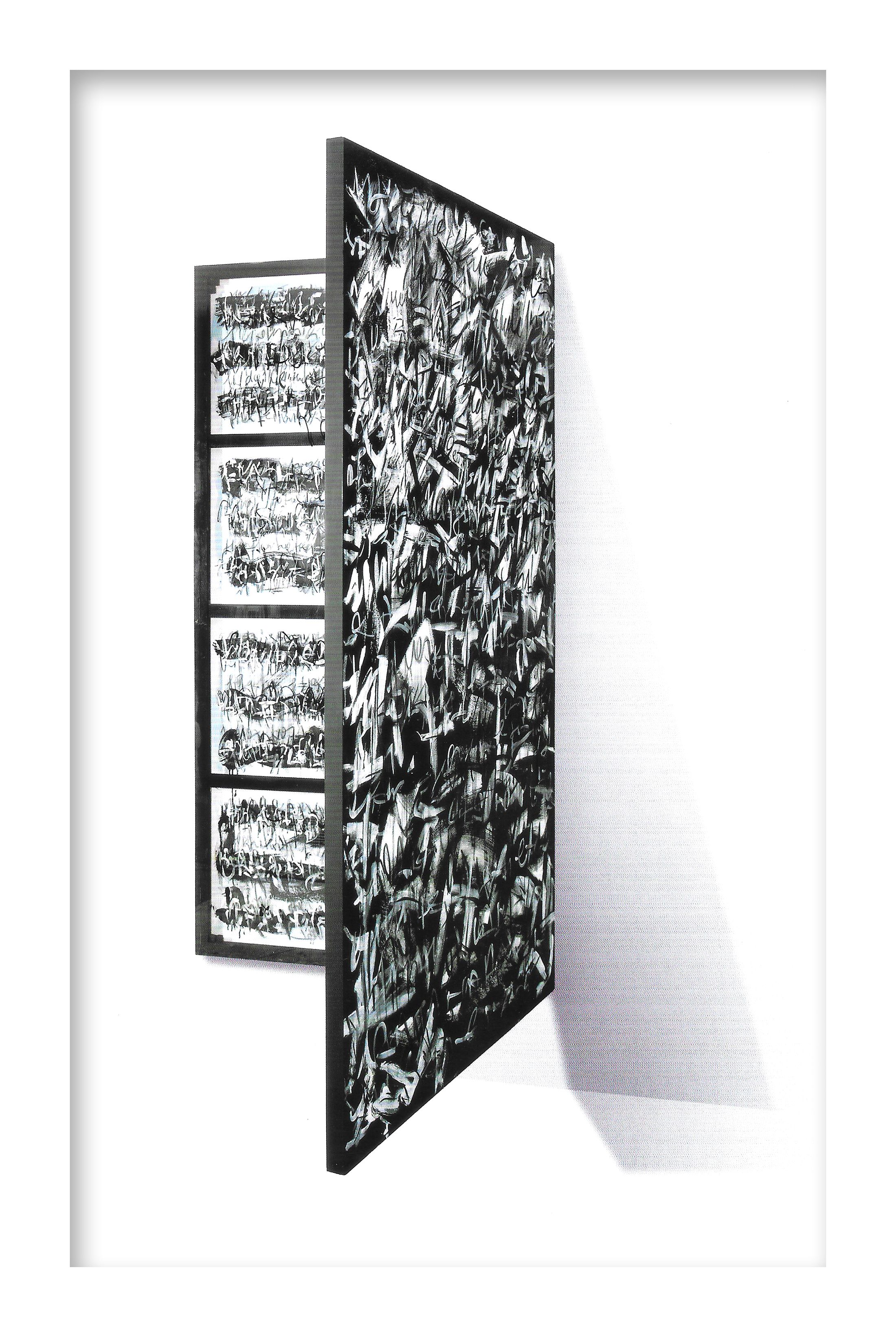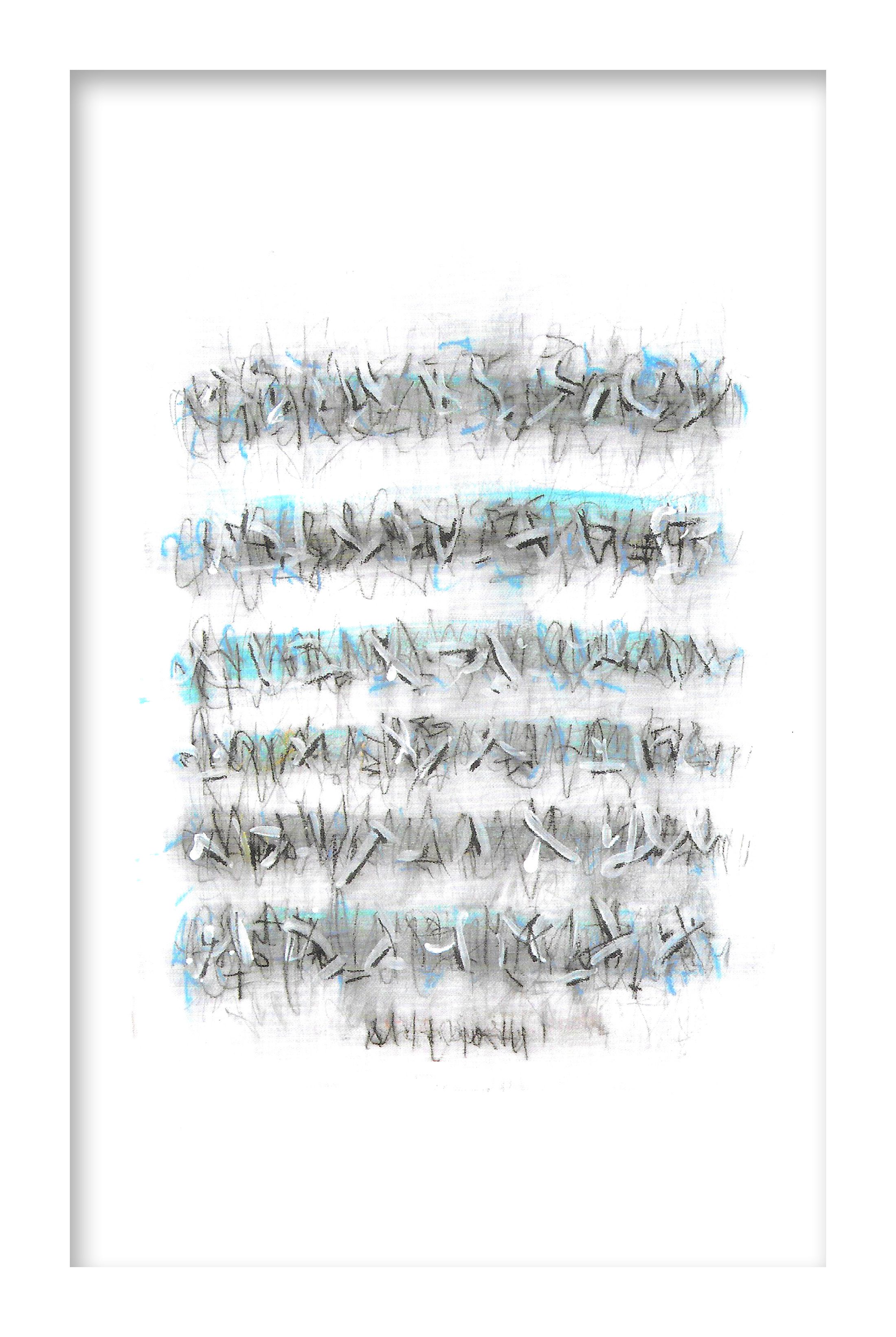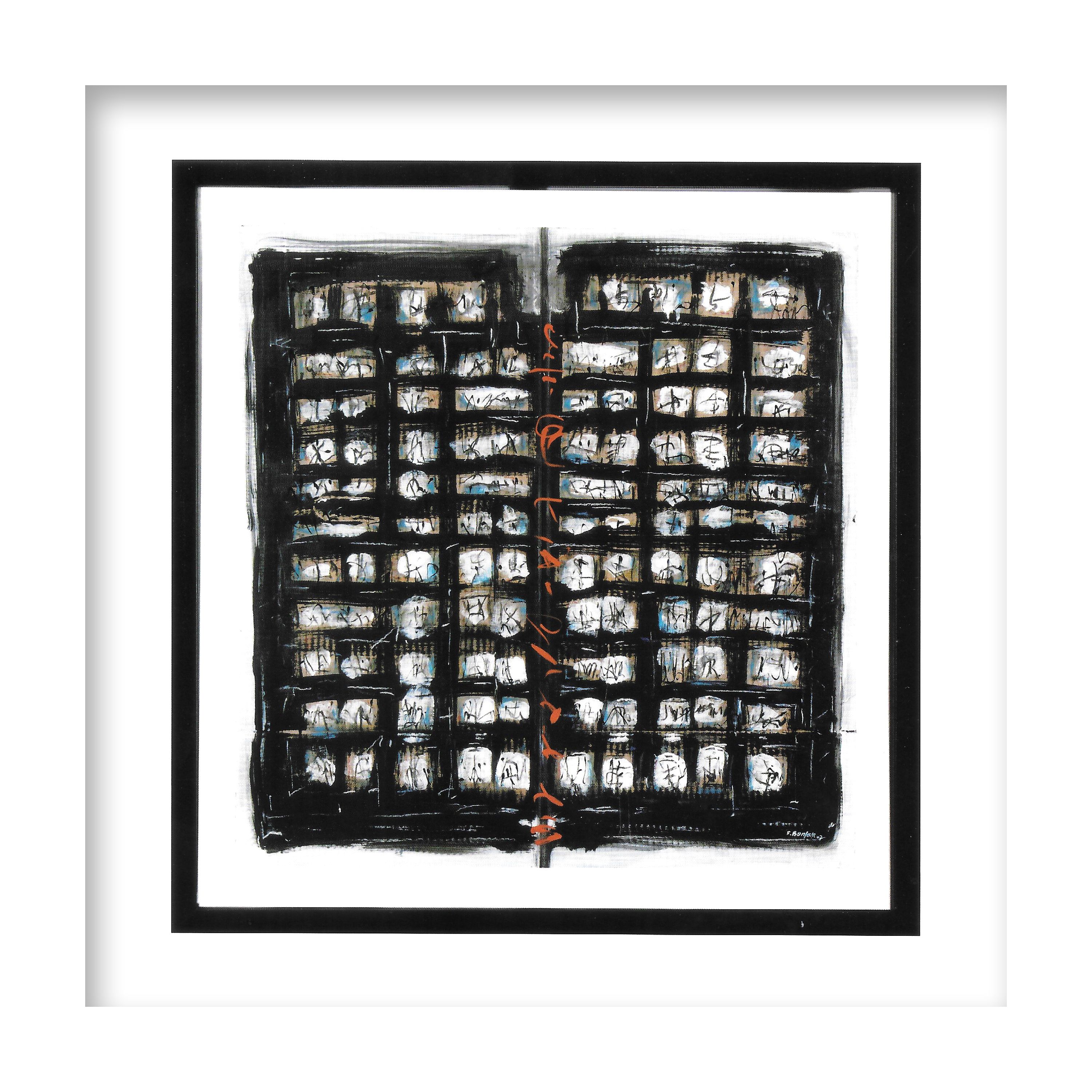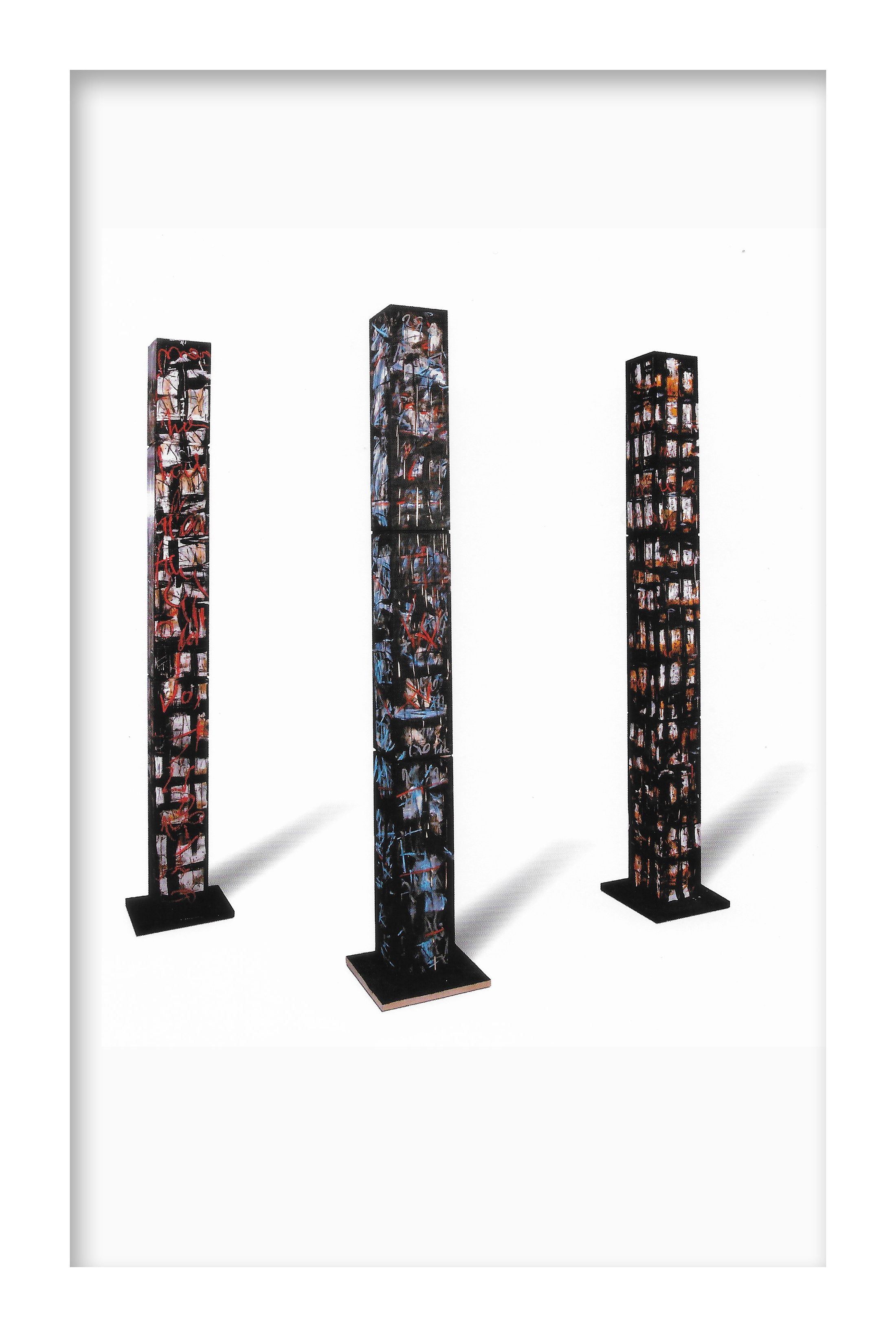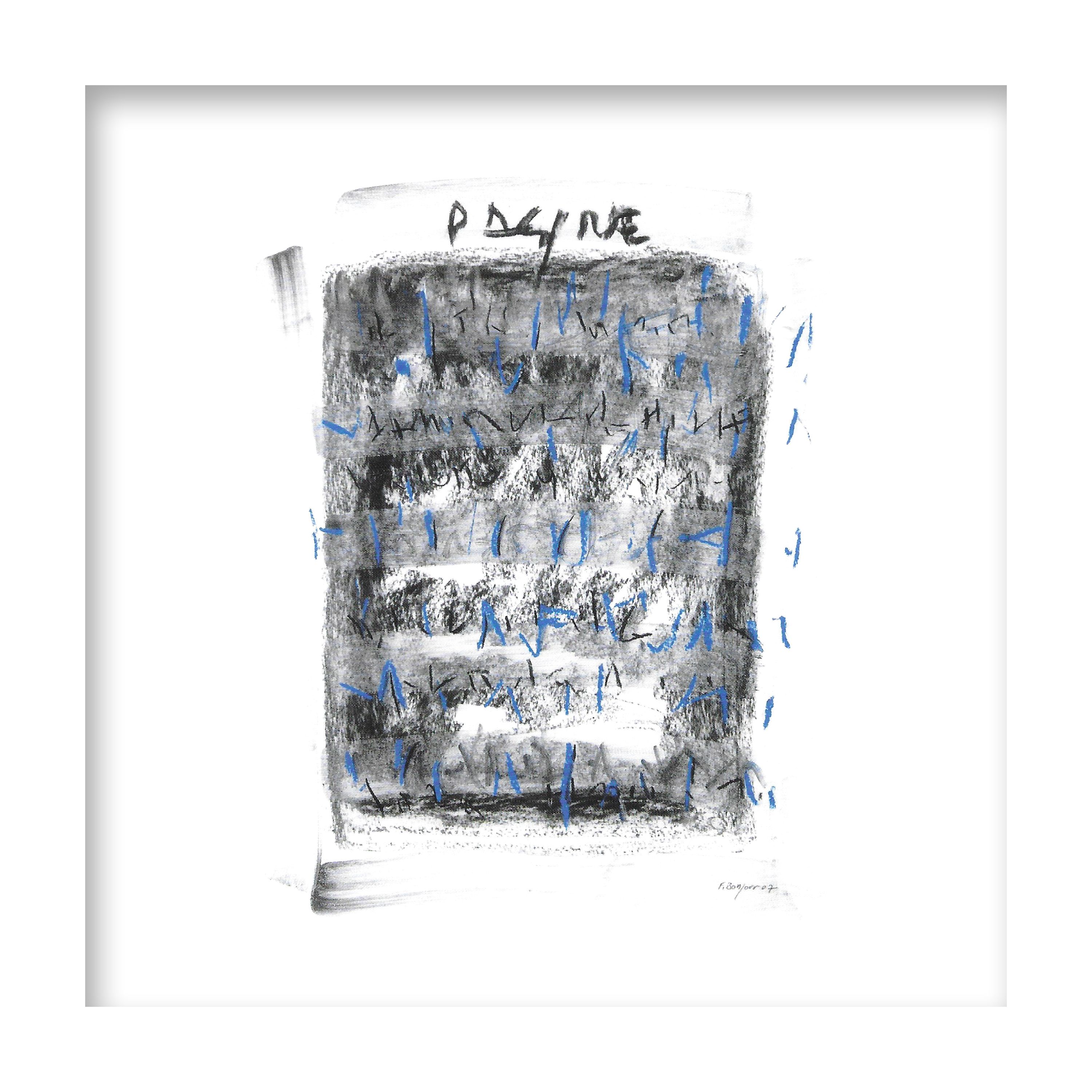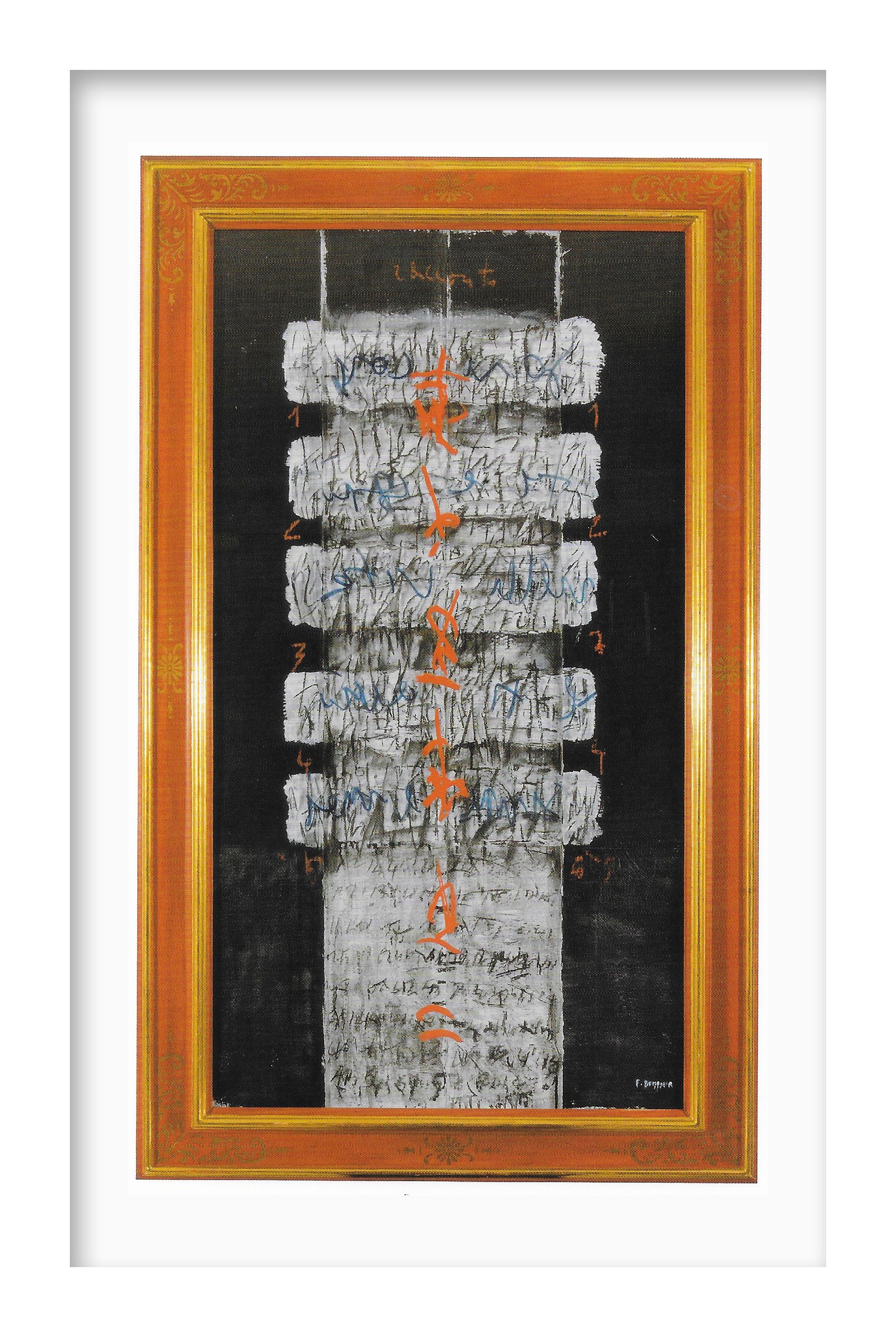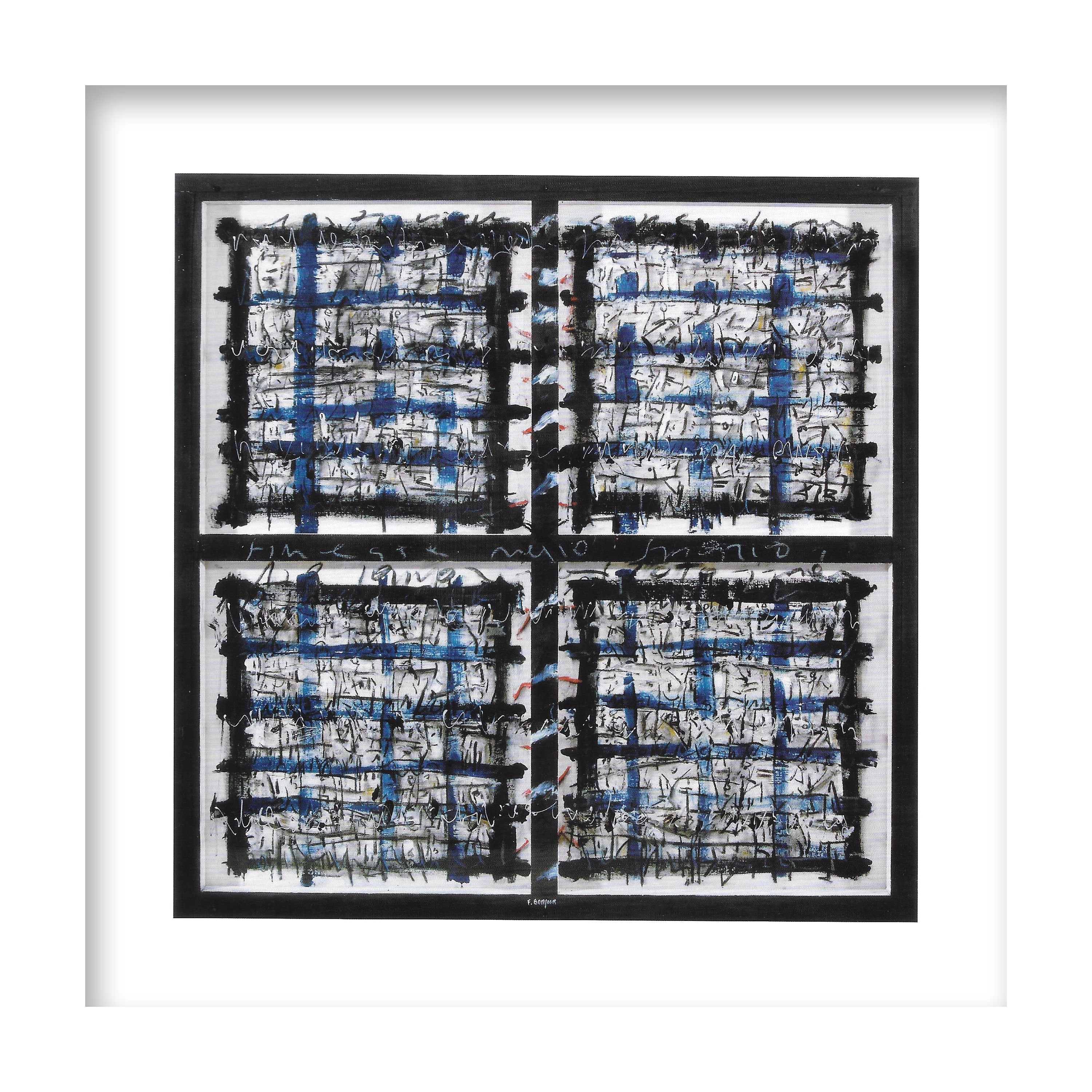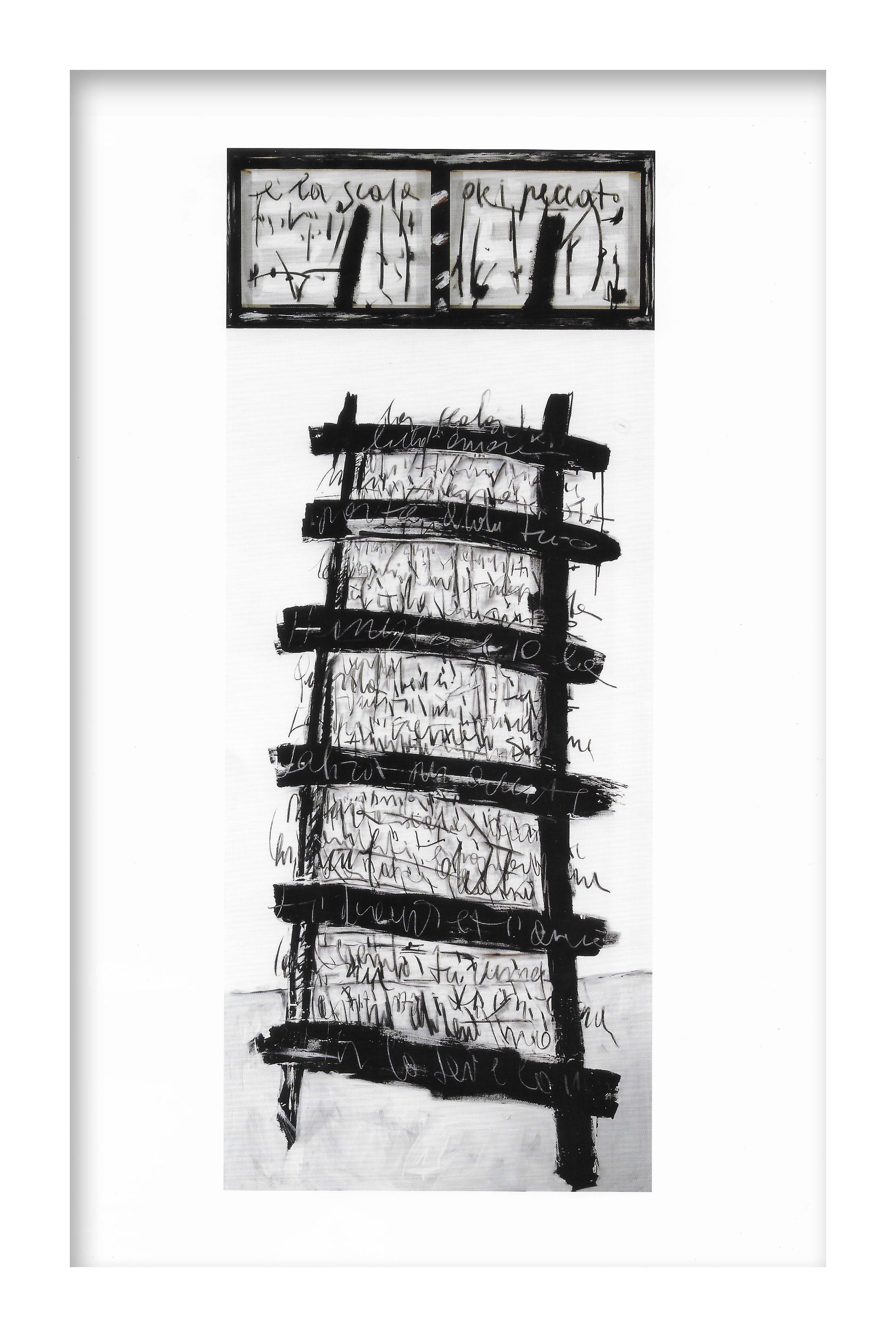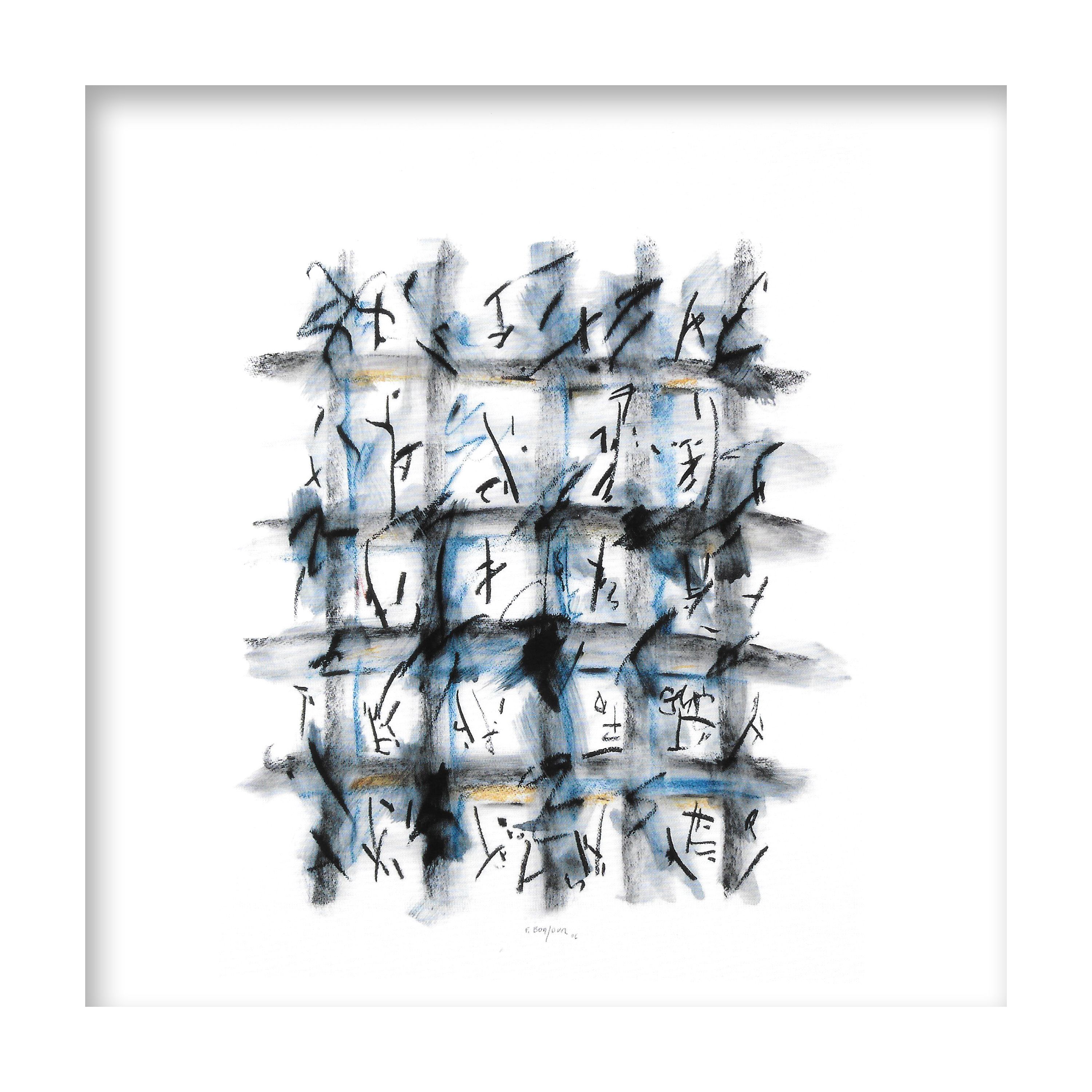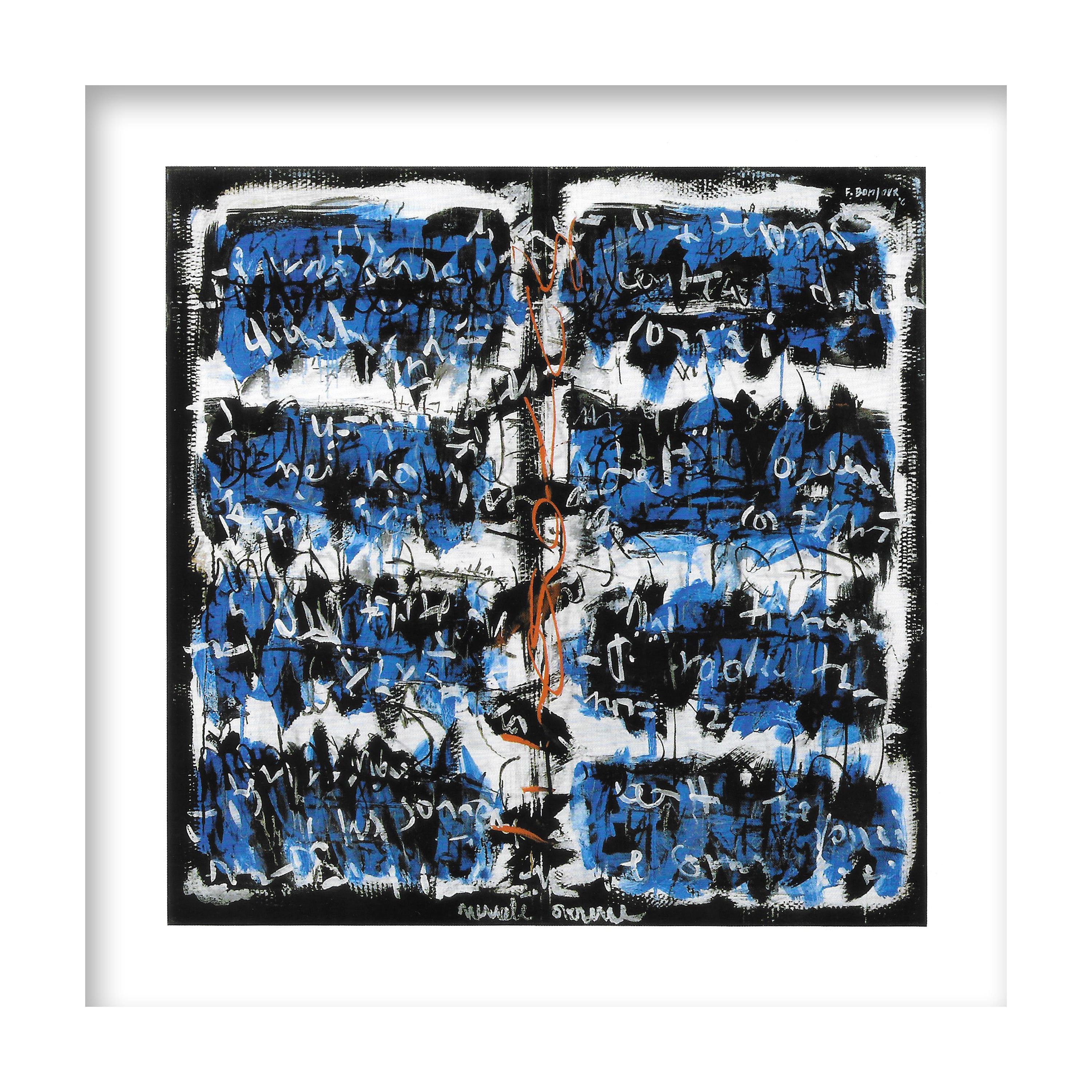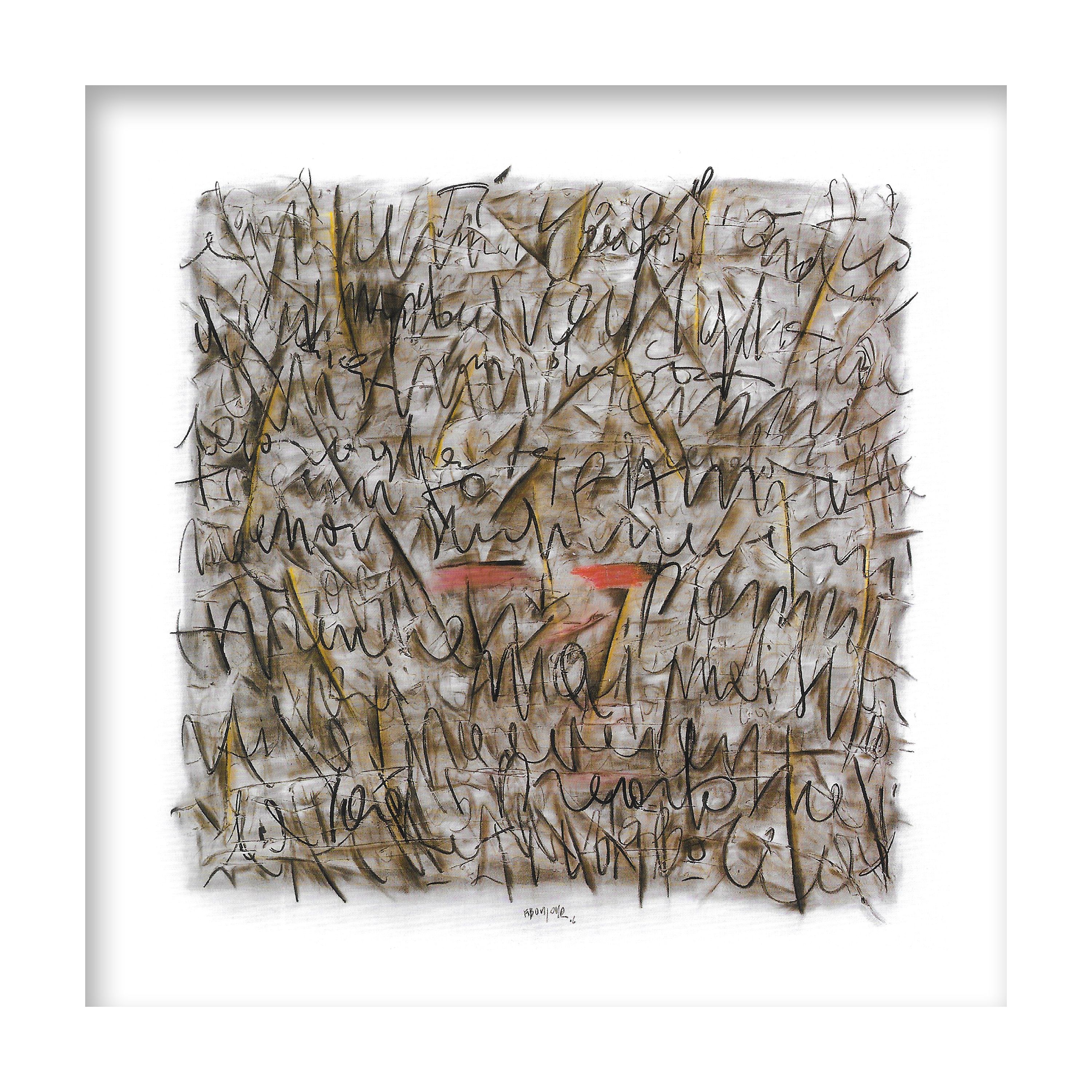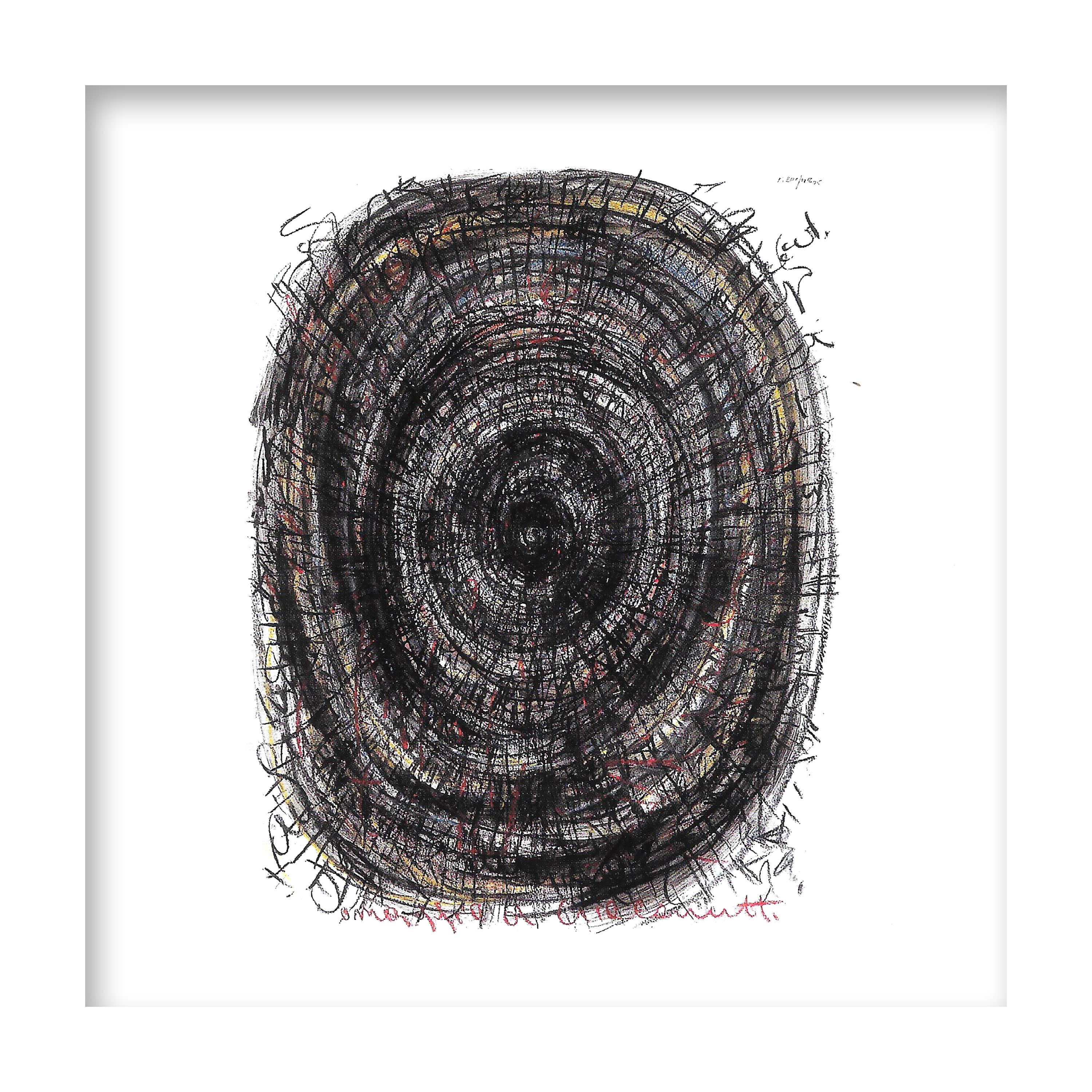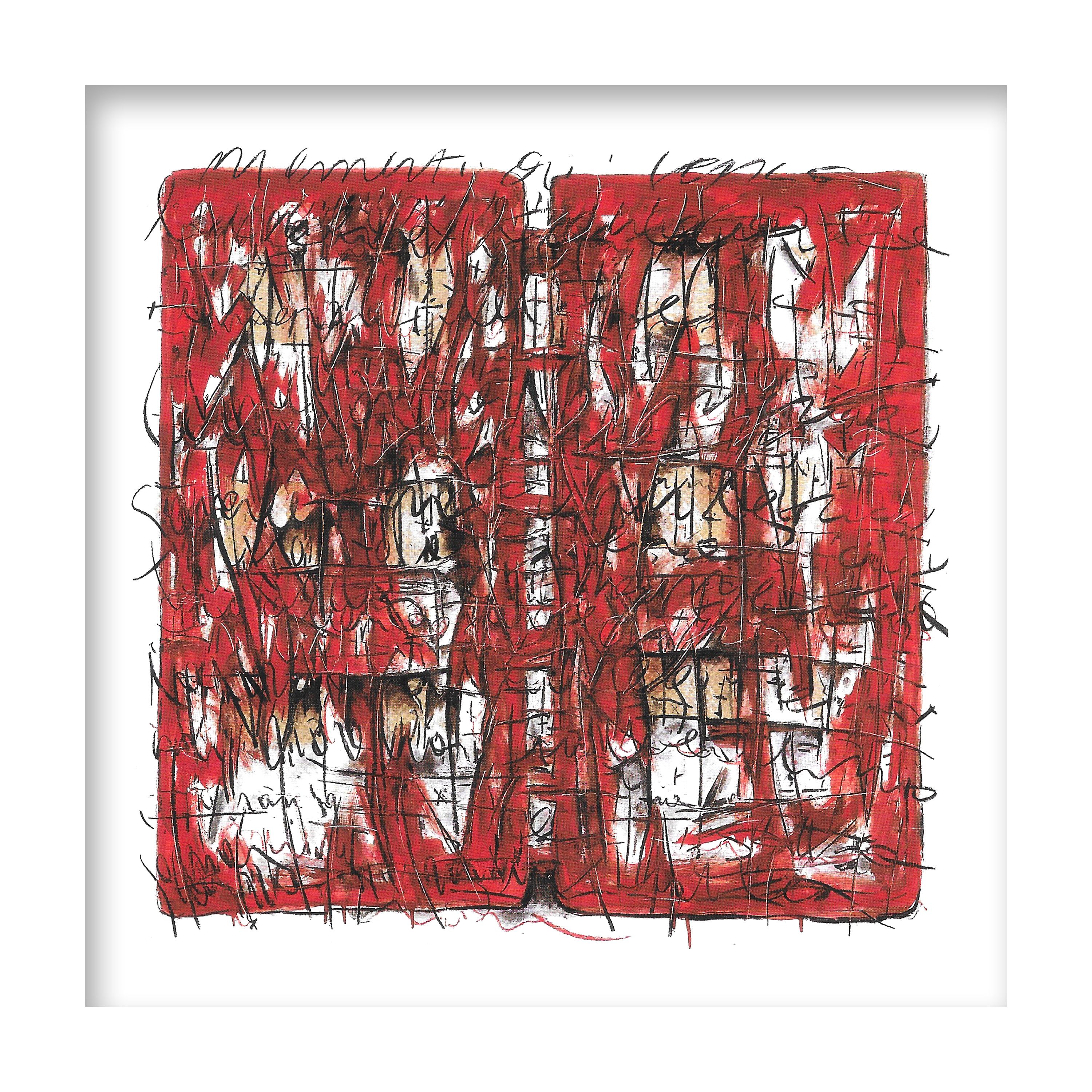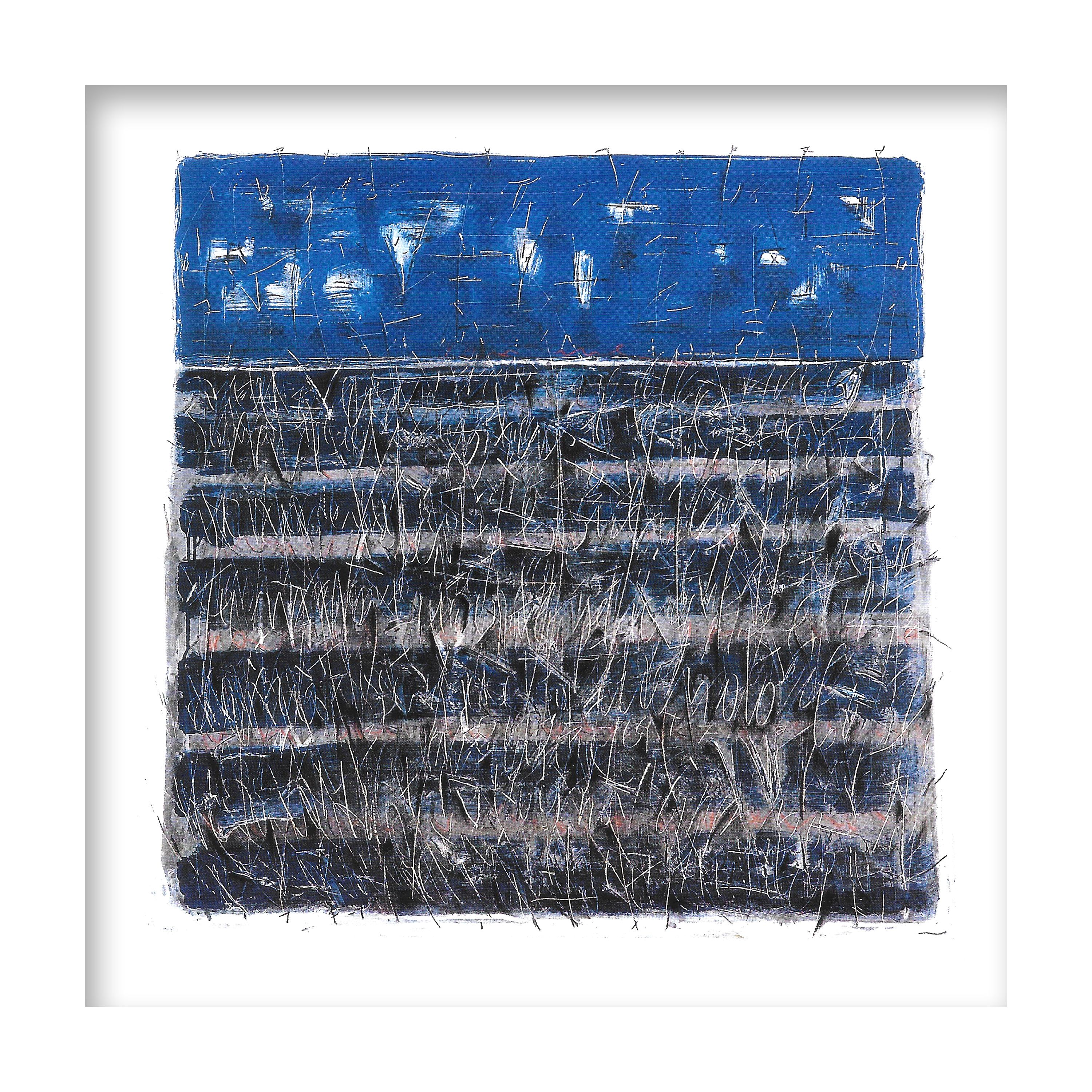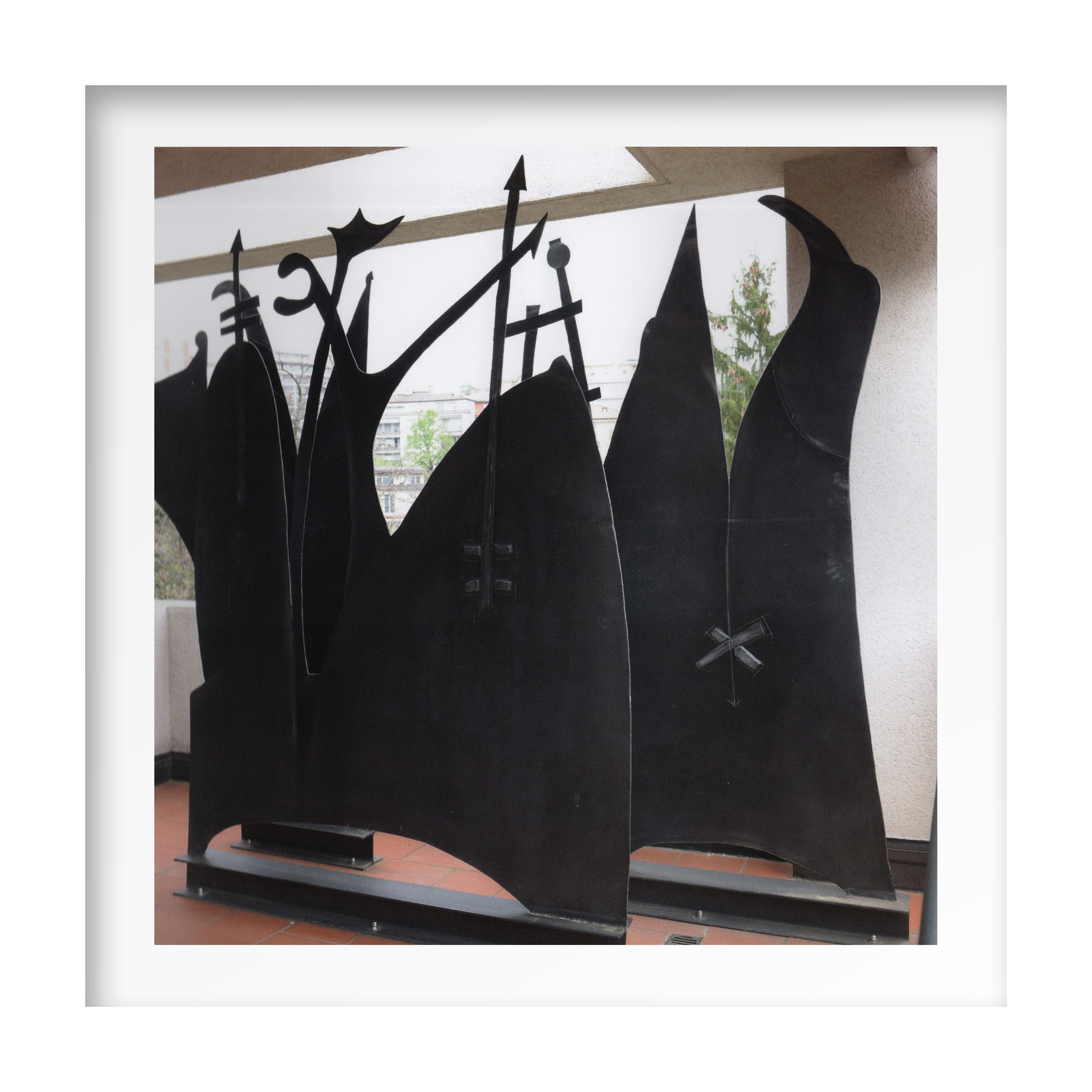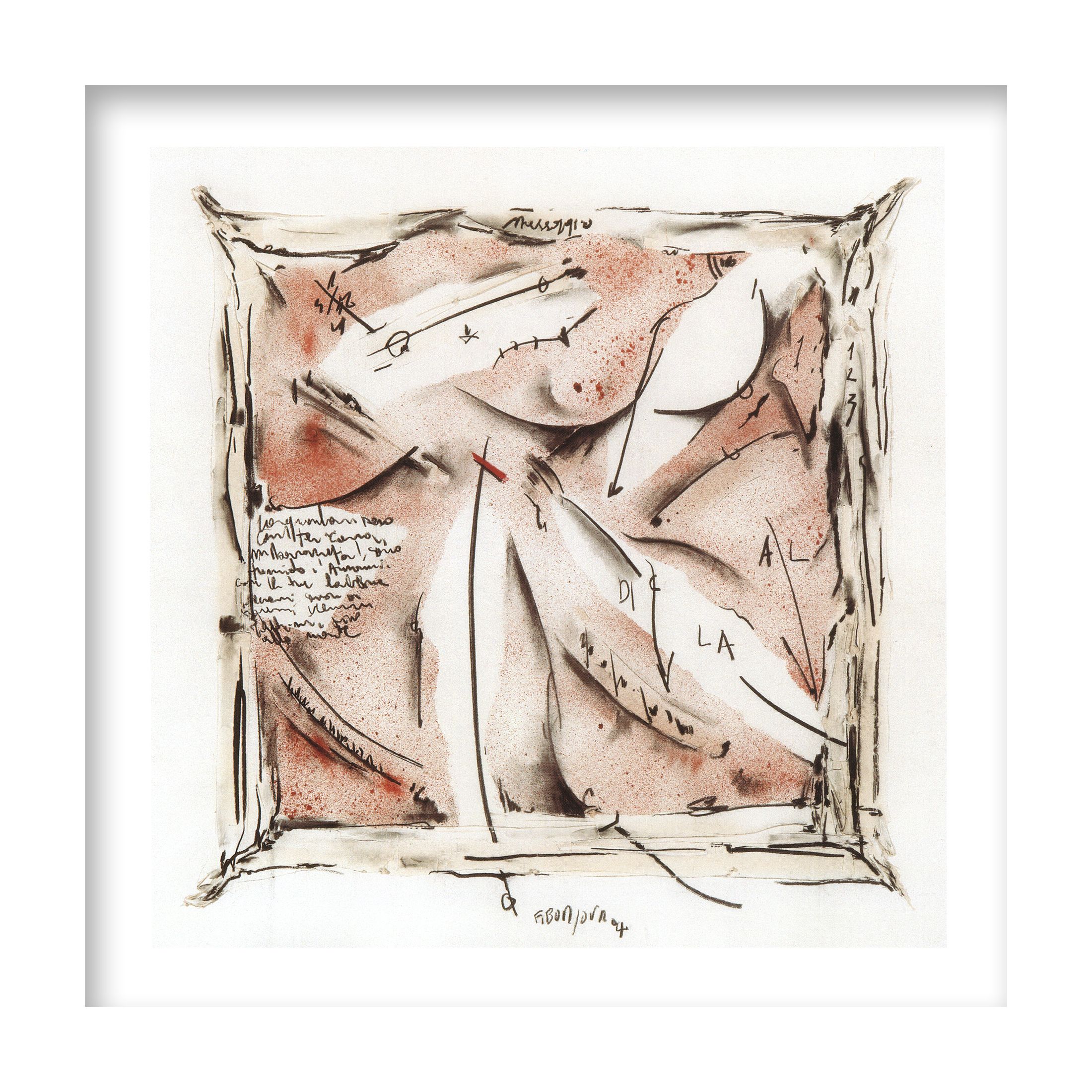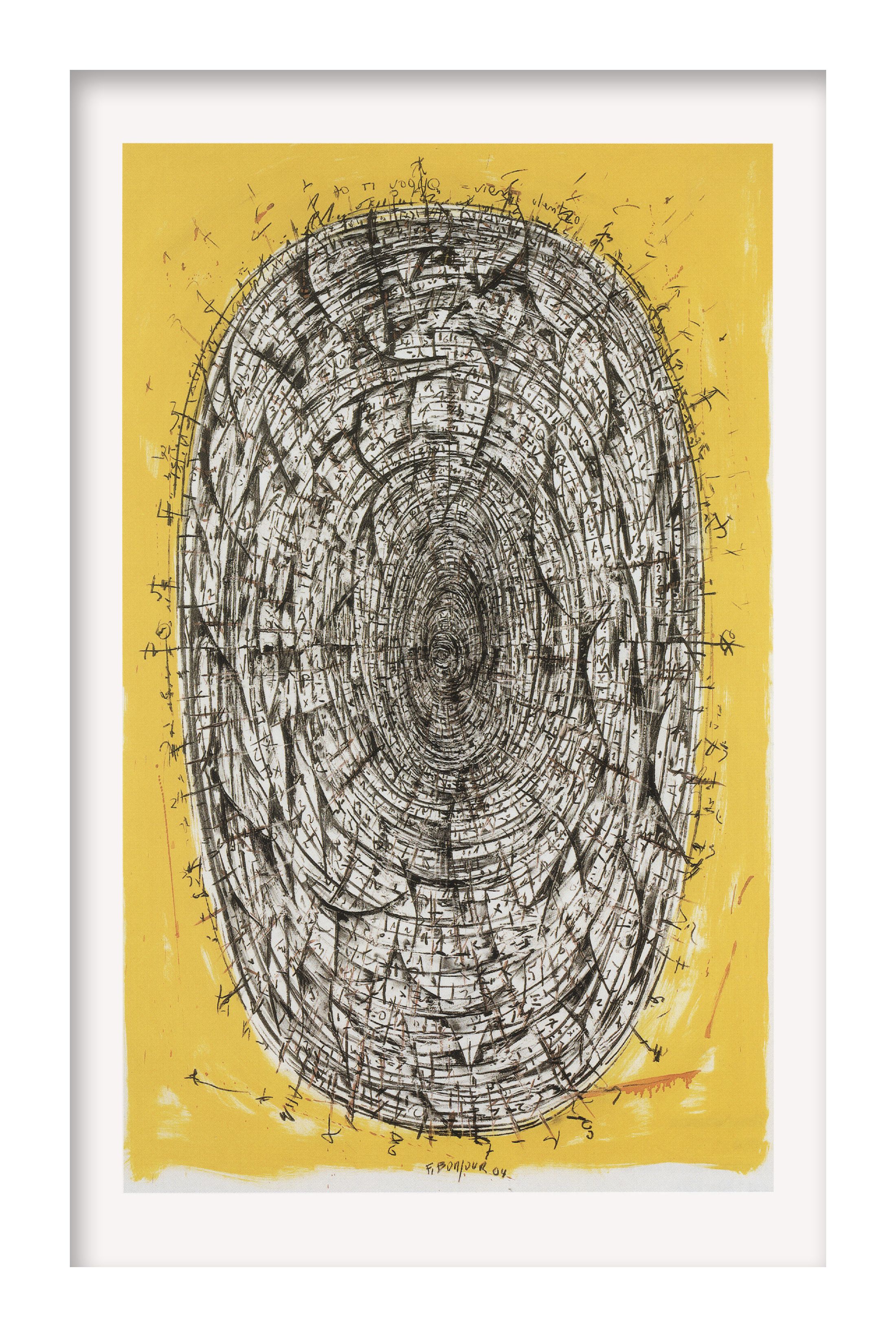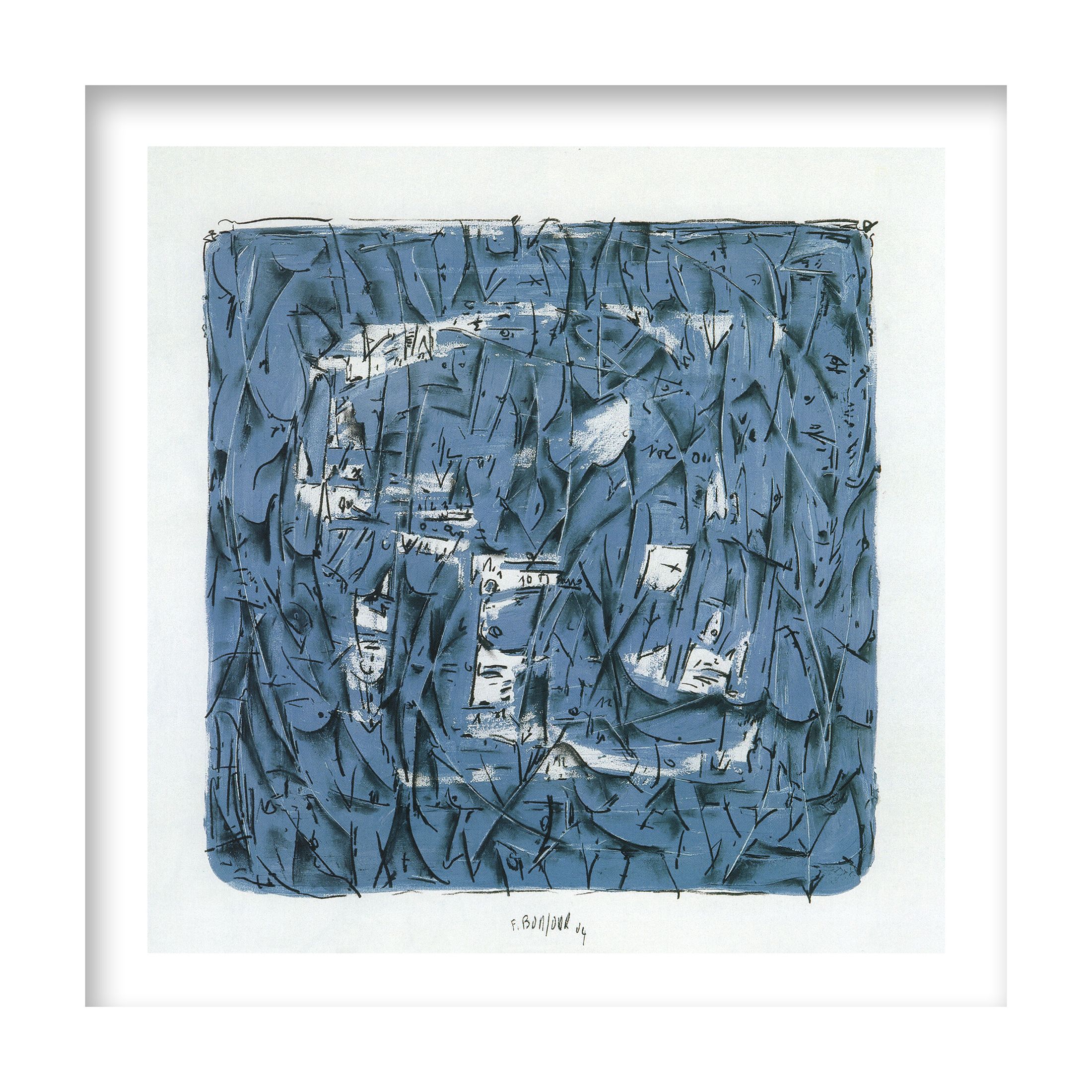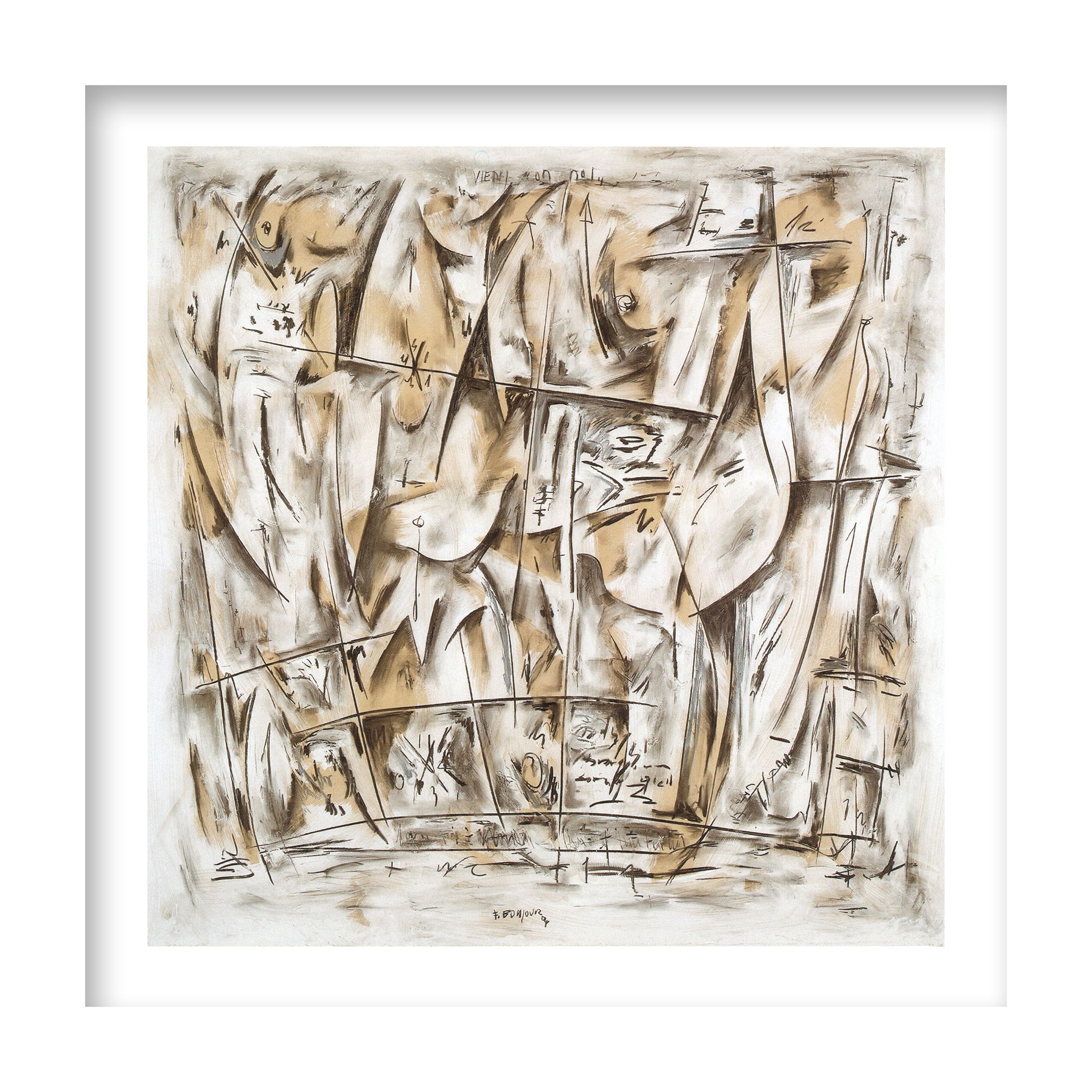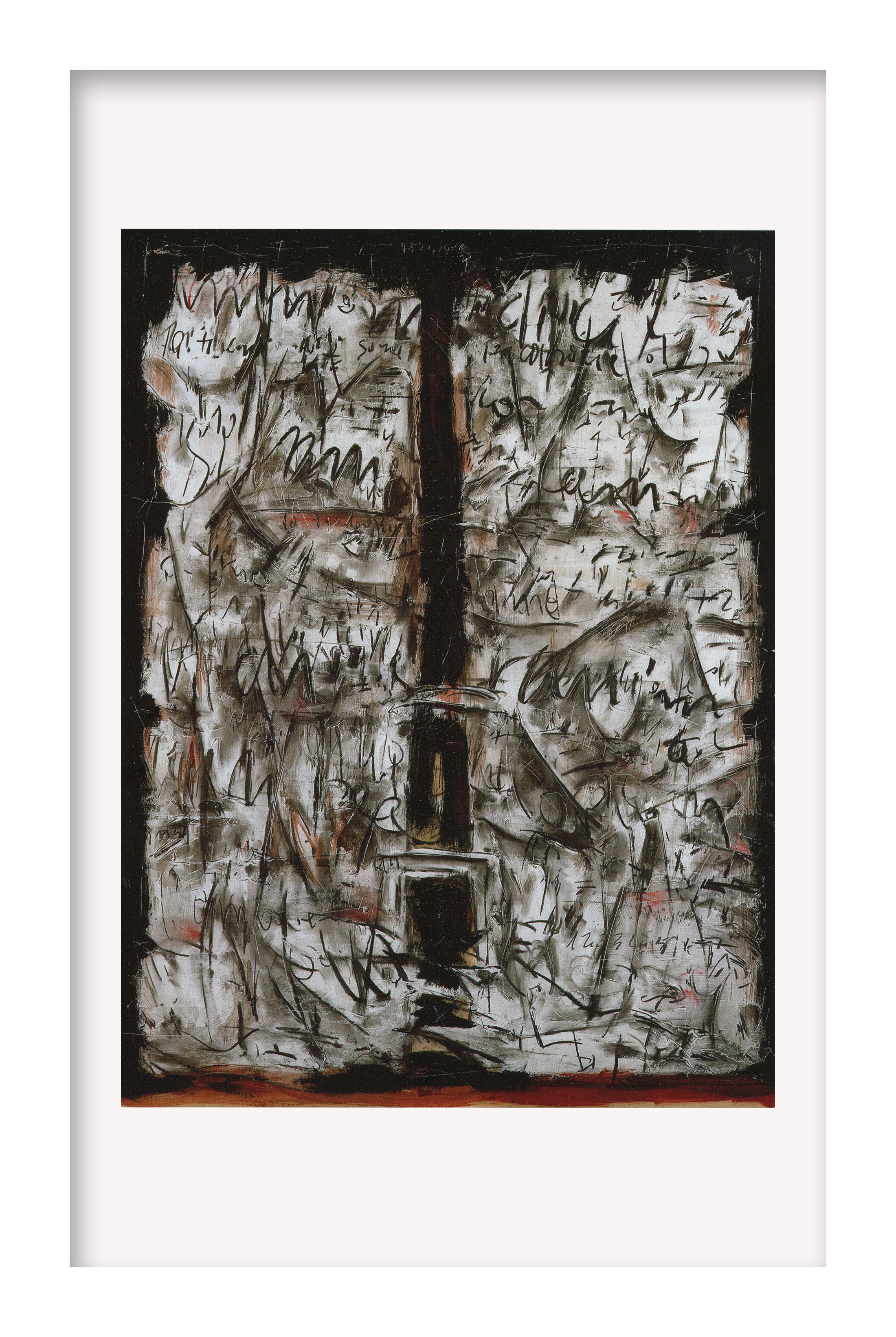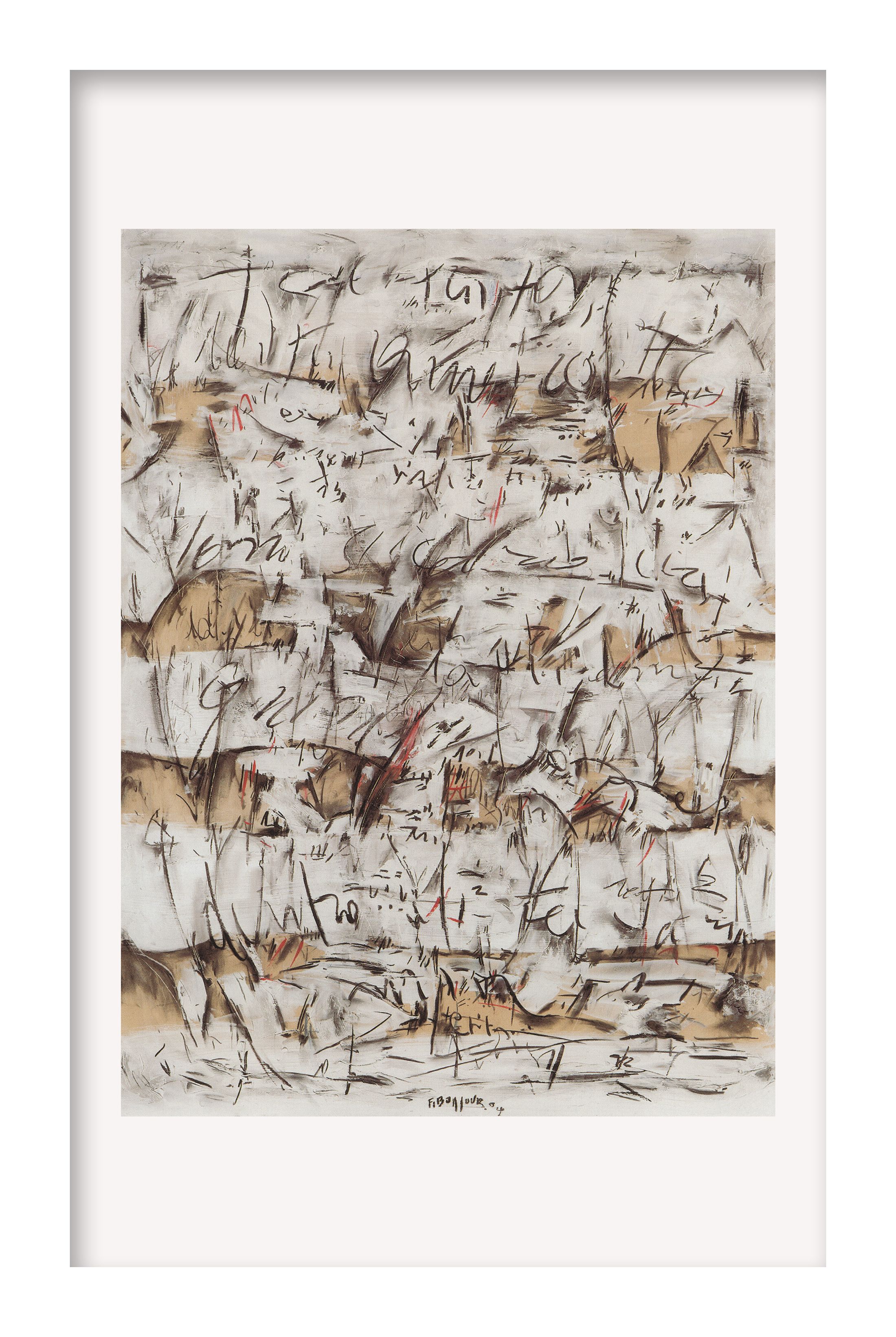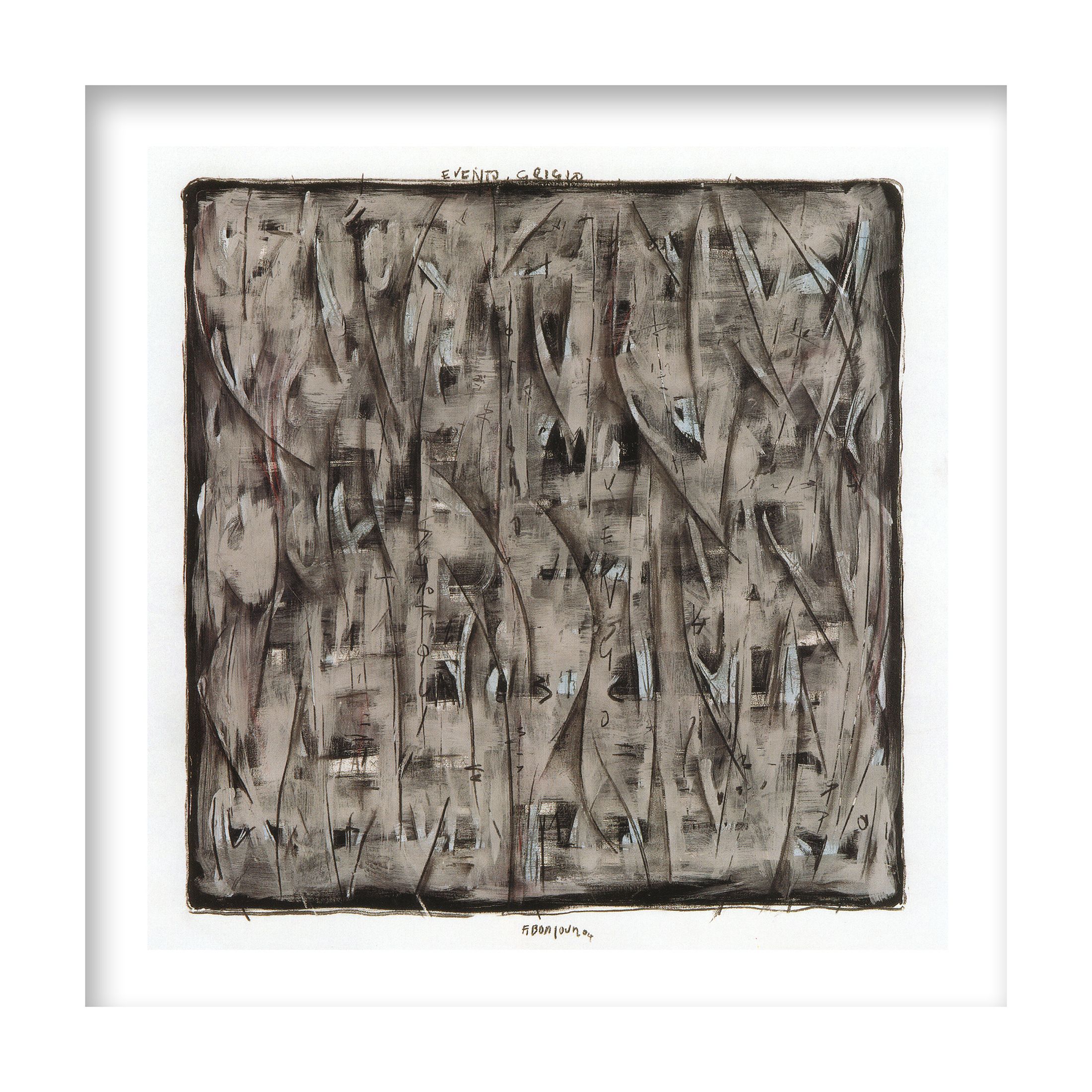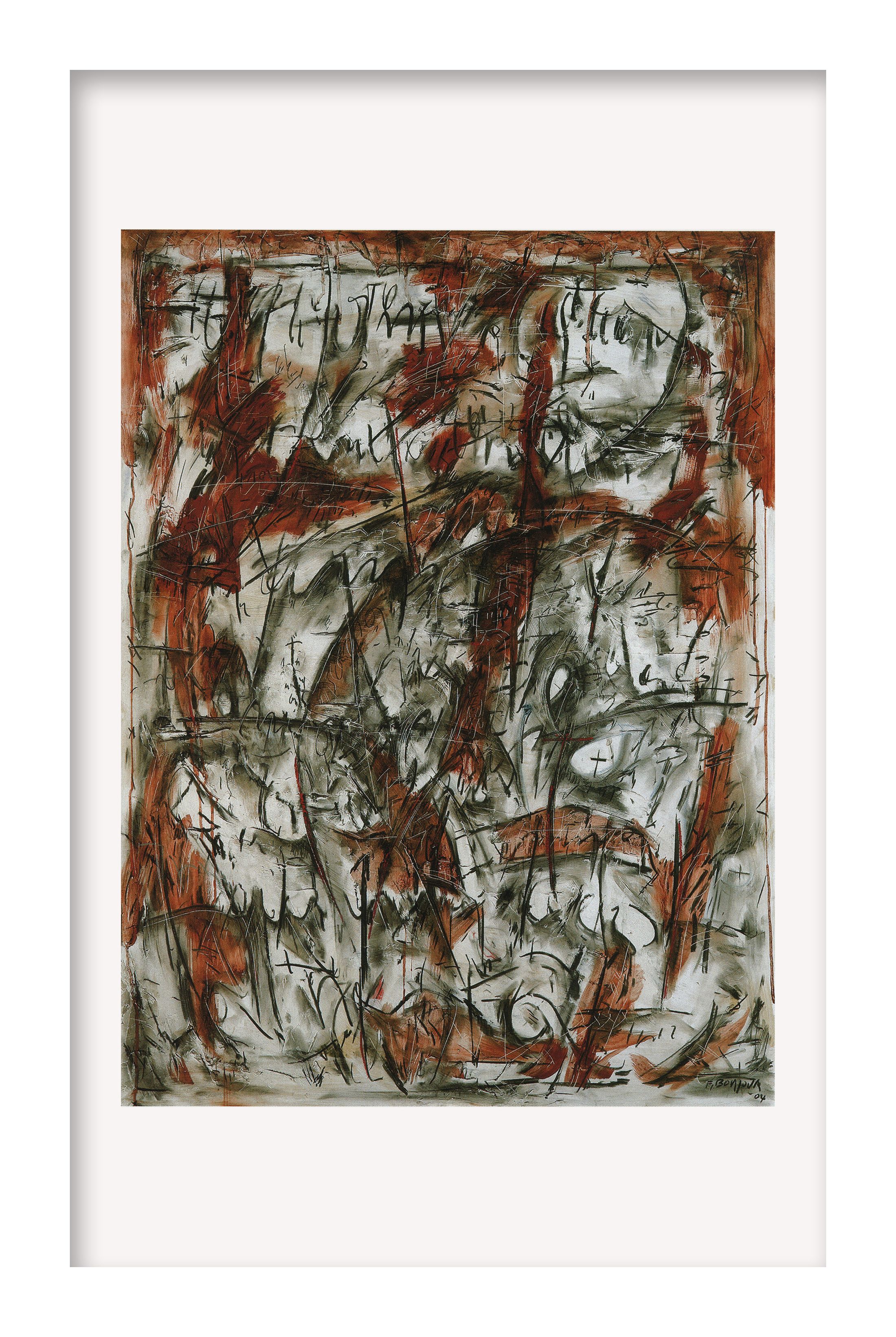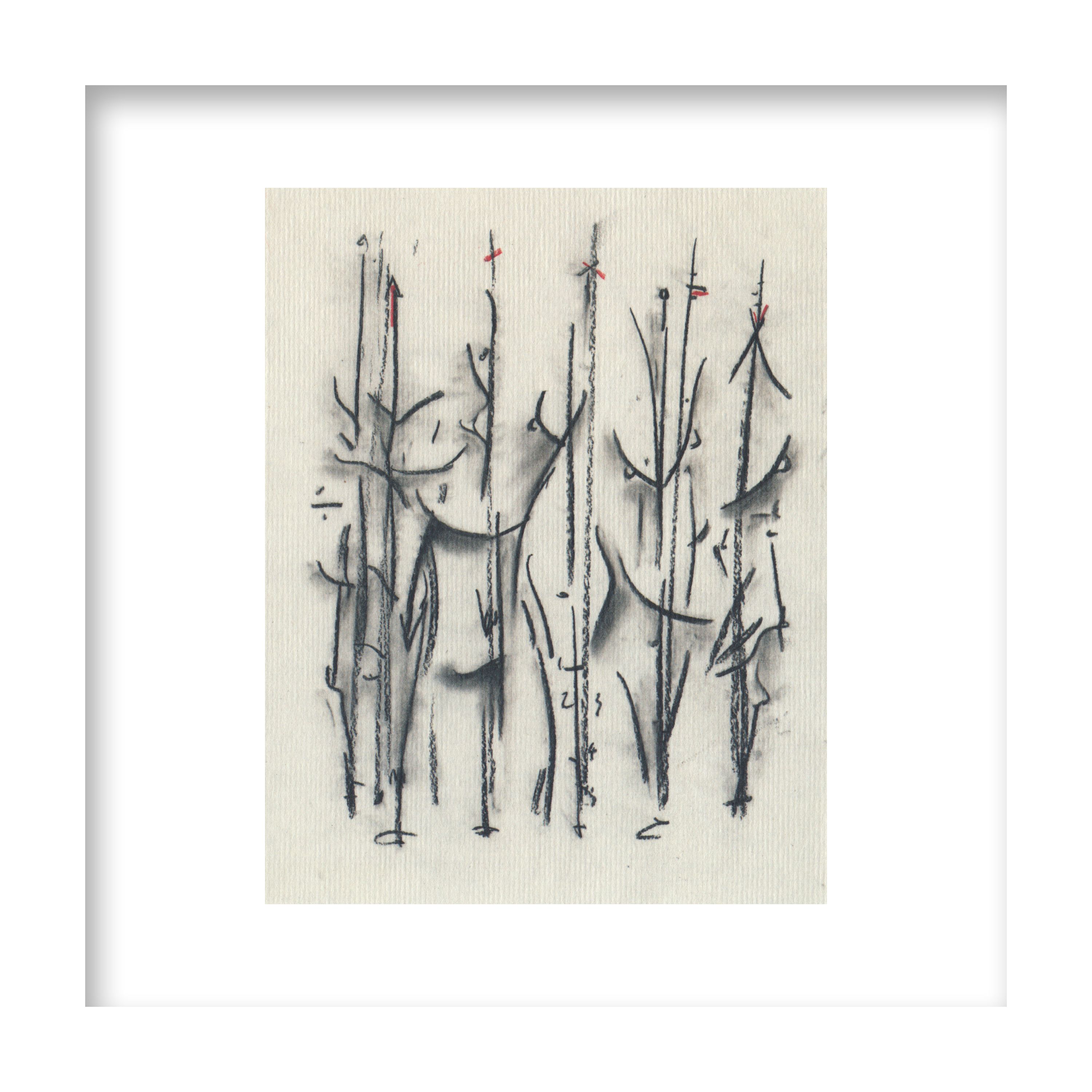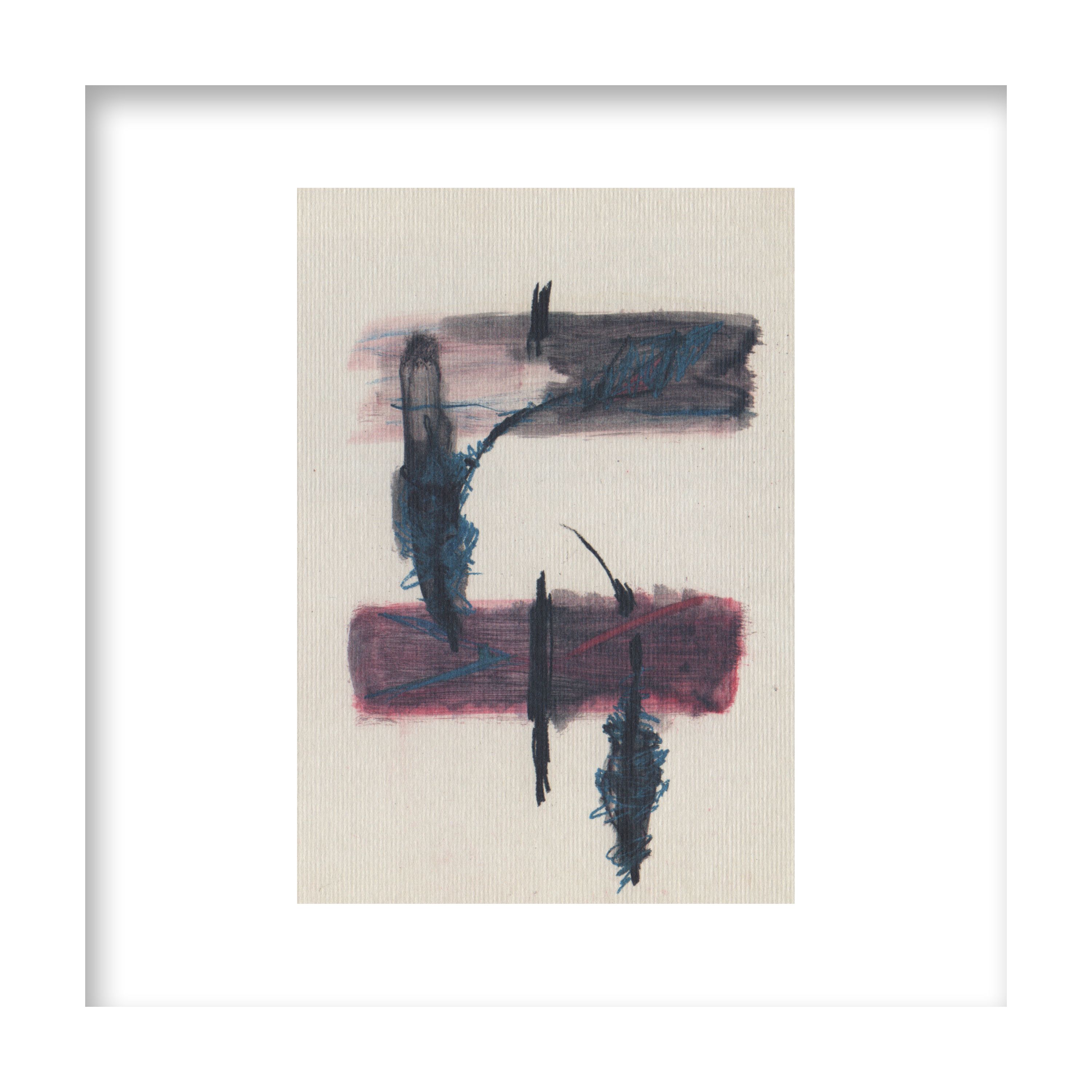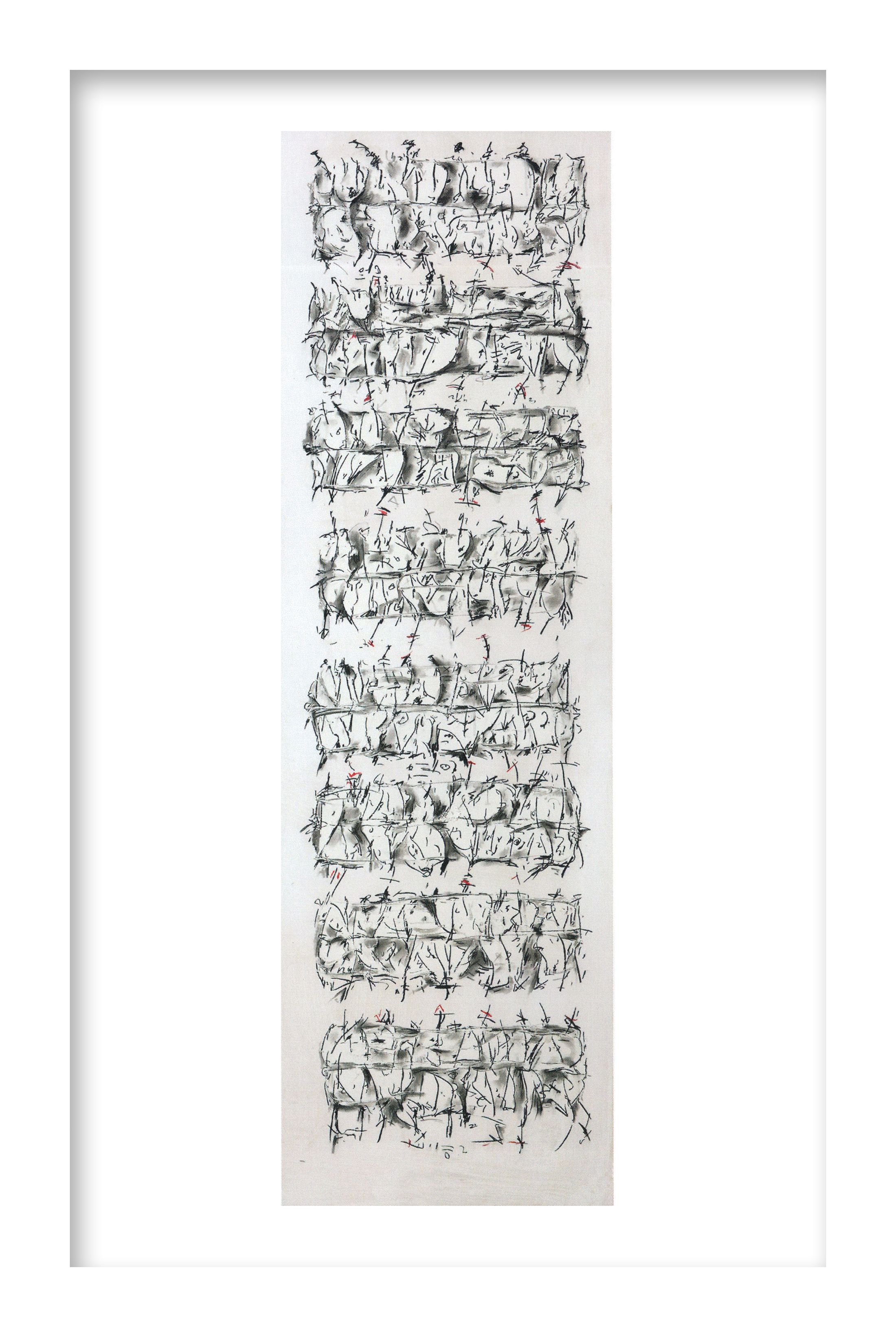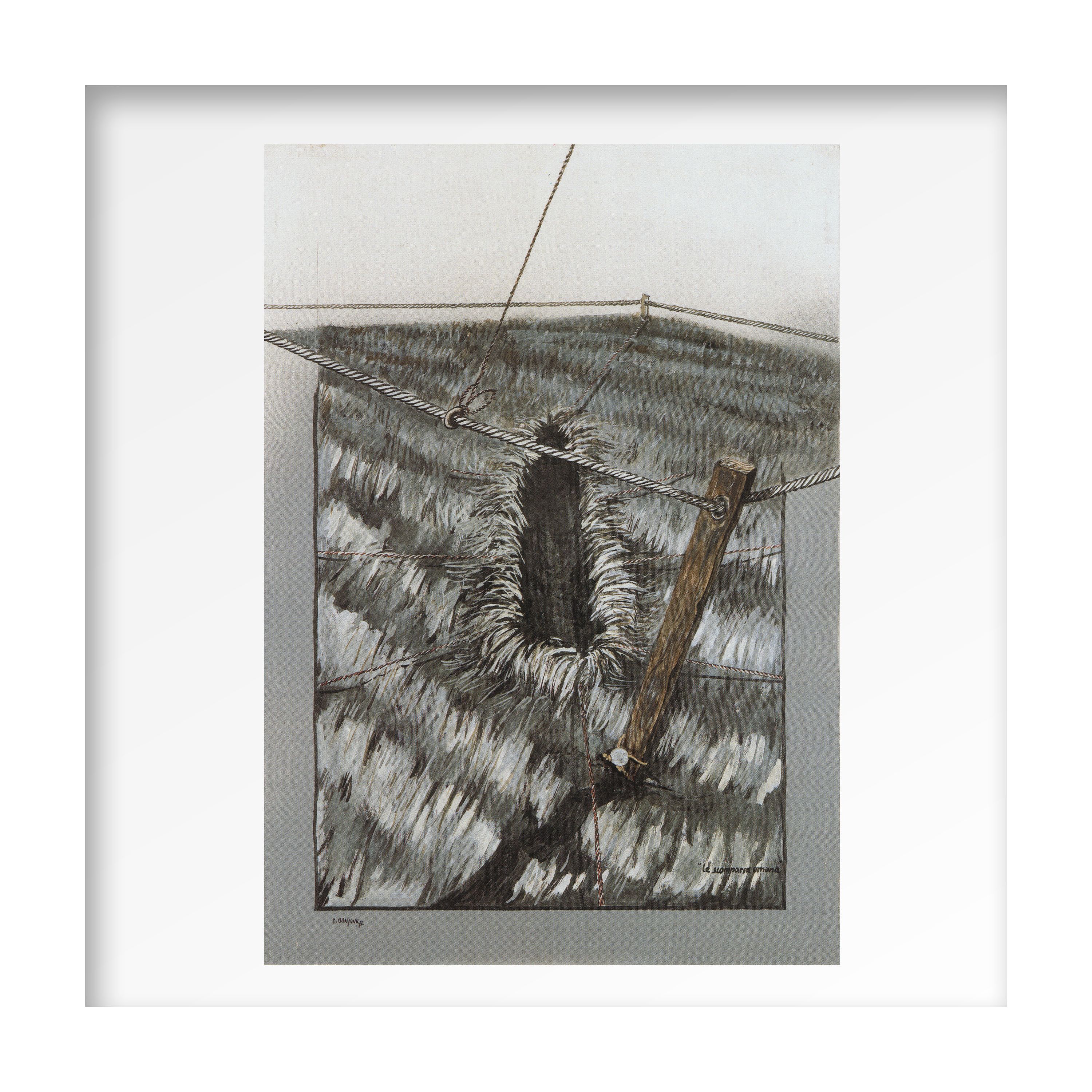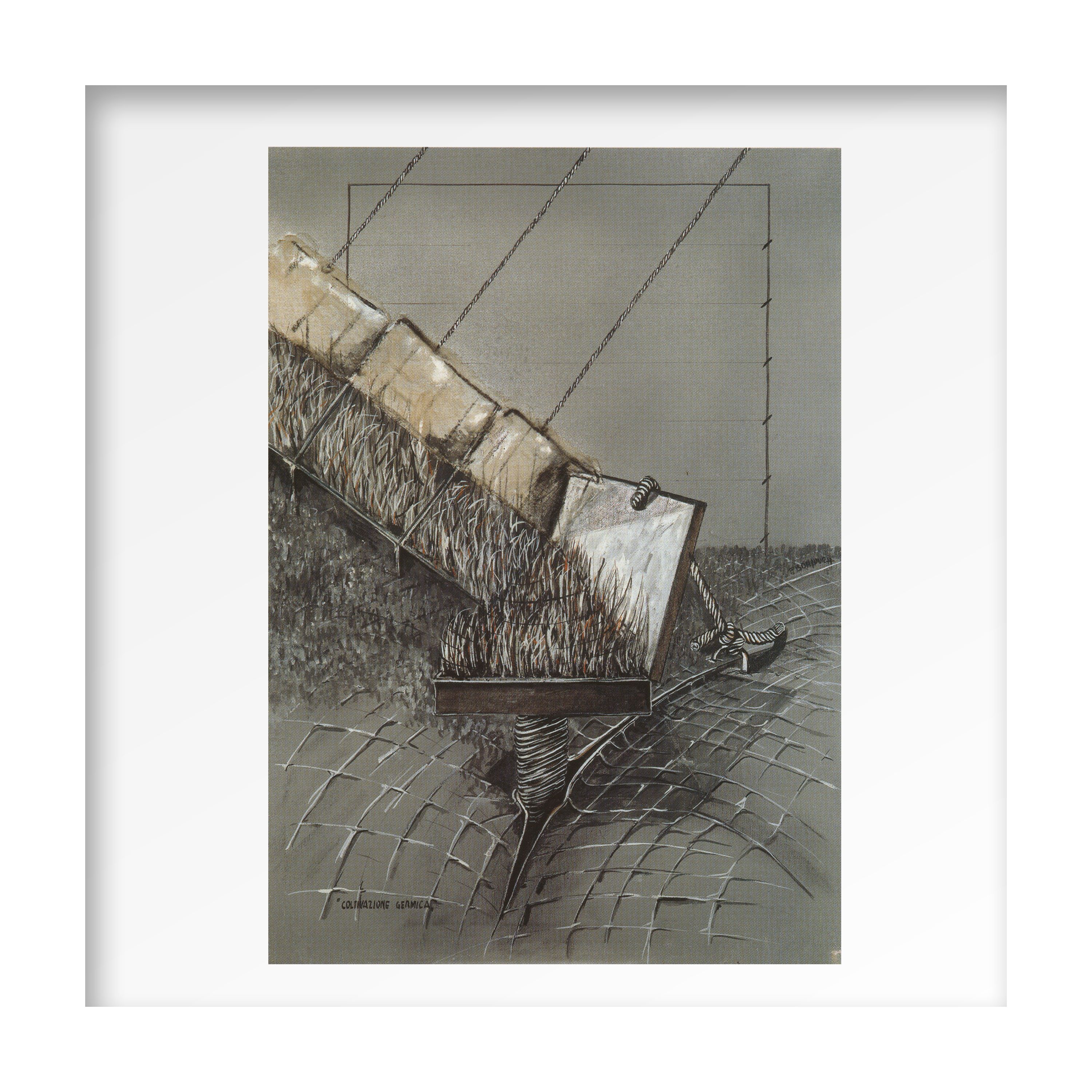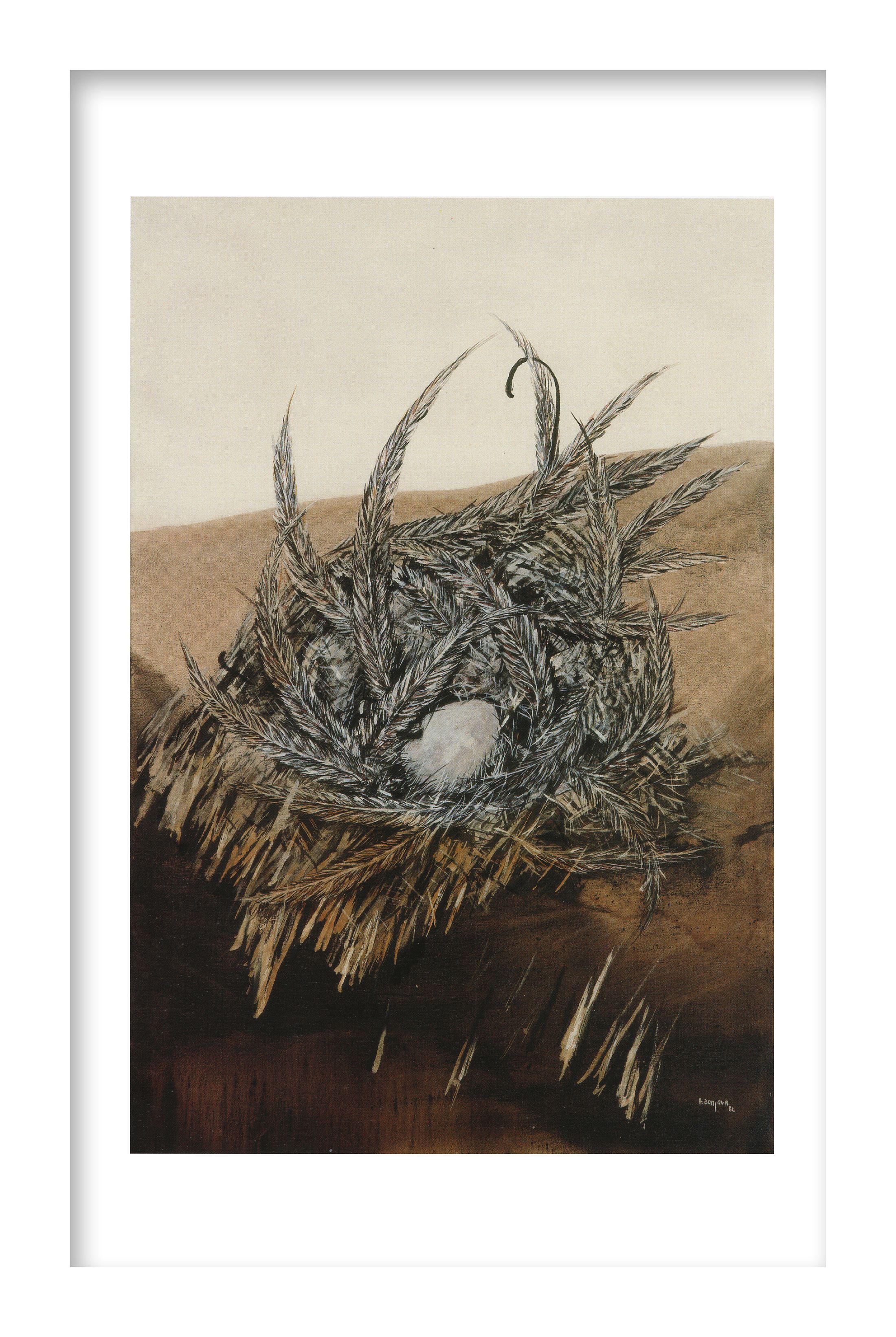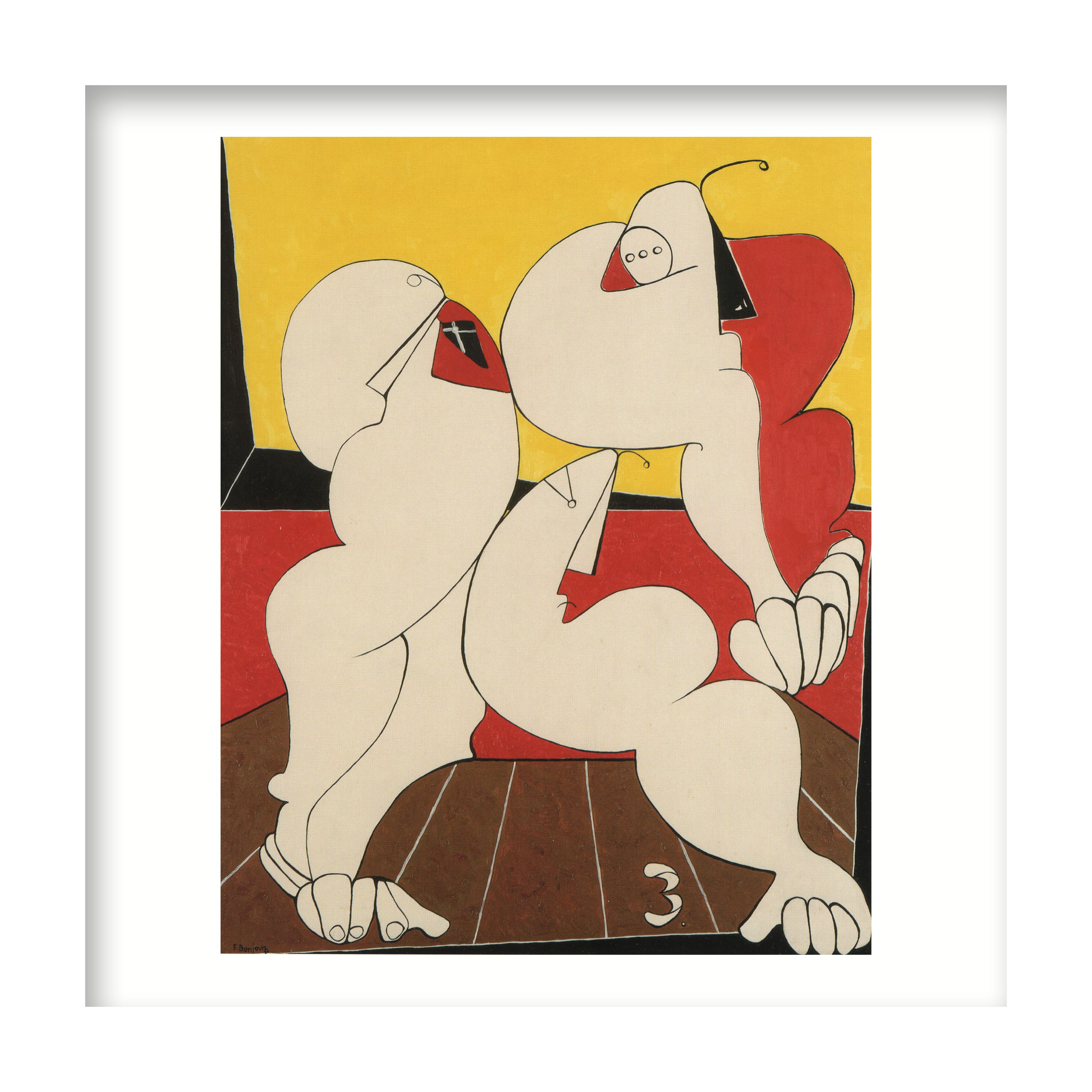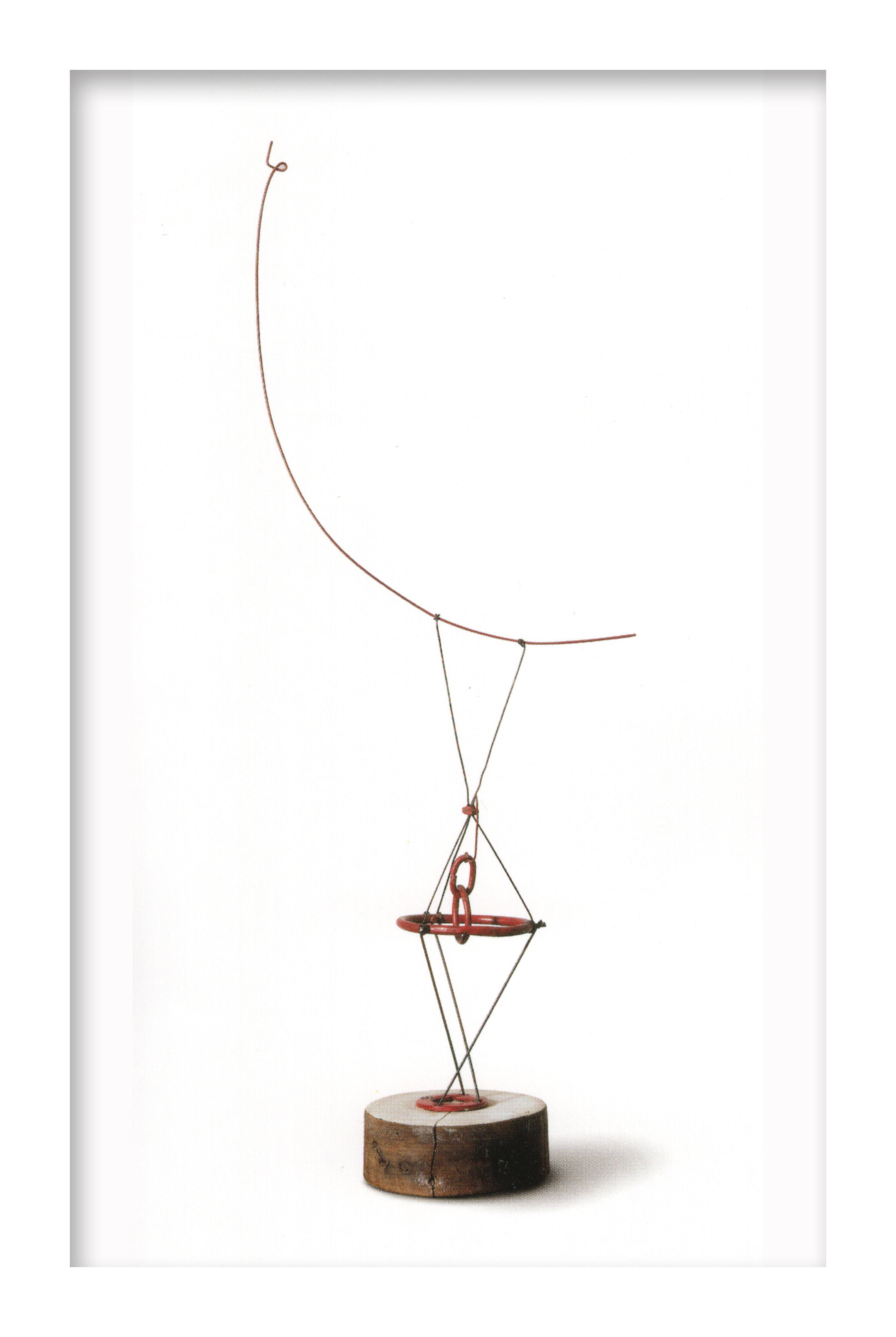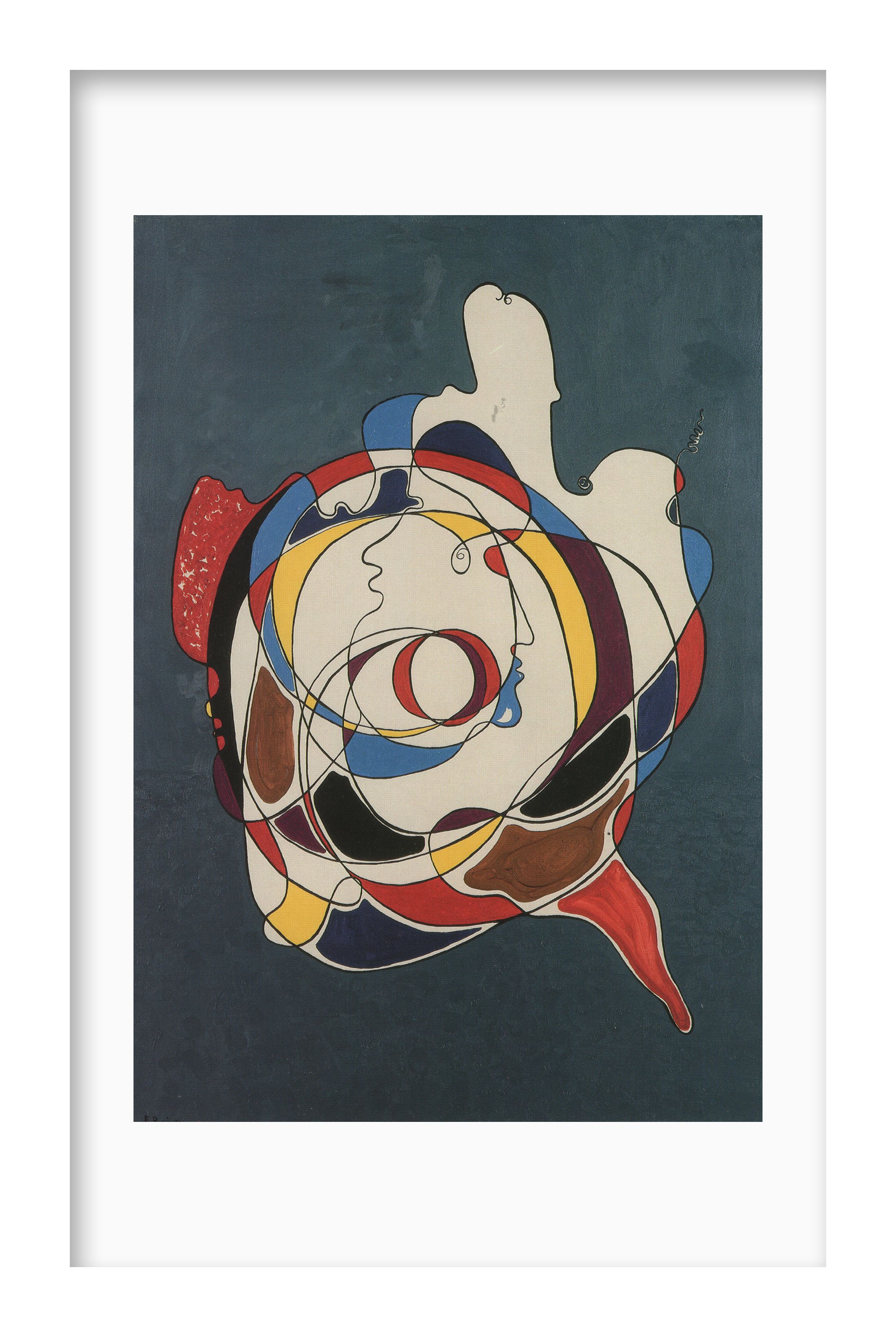Solo Exhibitions.
From 1971 to the present day, François Bonjour's solo exhibitions mark the stages of his research: from the first one in Campione d'Italia to presentations in Switzerland and Italy (Lugano, Locarno, Chiasso, Zurich, St. Gallen, Milan, Turin, Venice), often accompanied by a catalogue and, in 2004, by an anthological exhibition at Cavalier Pellanda in Biasca. Each solo exhibition focuses on series and materials, papers, ropes, signs, films, showing how matter becomes memory and form.
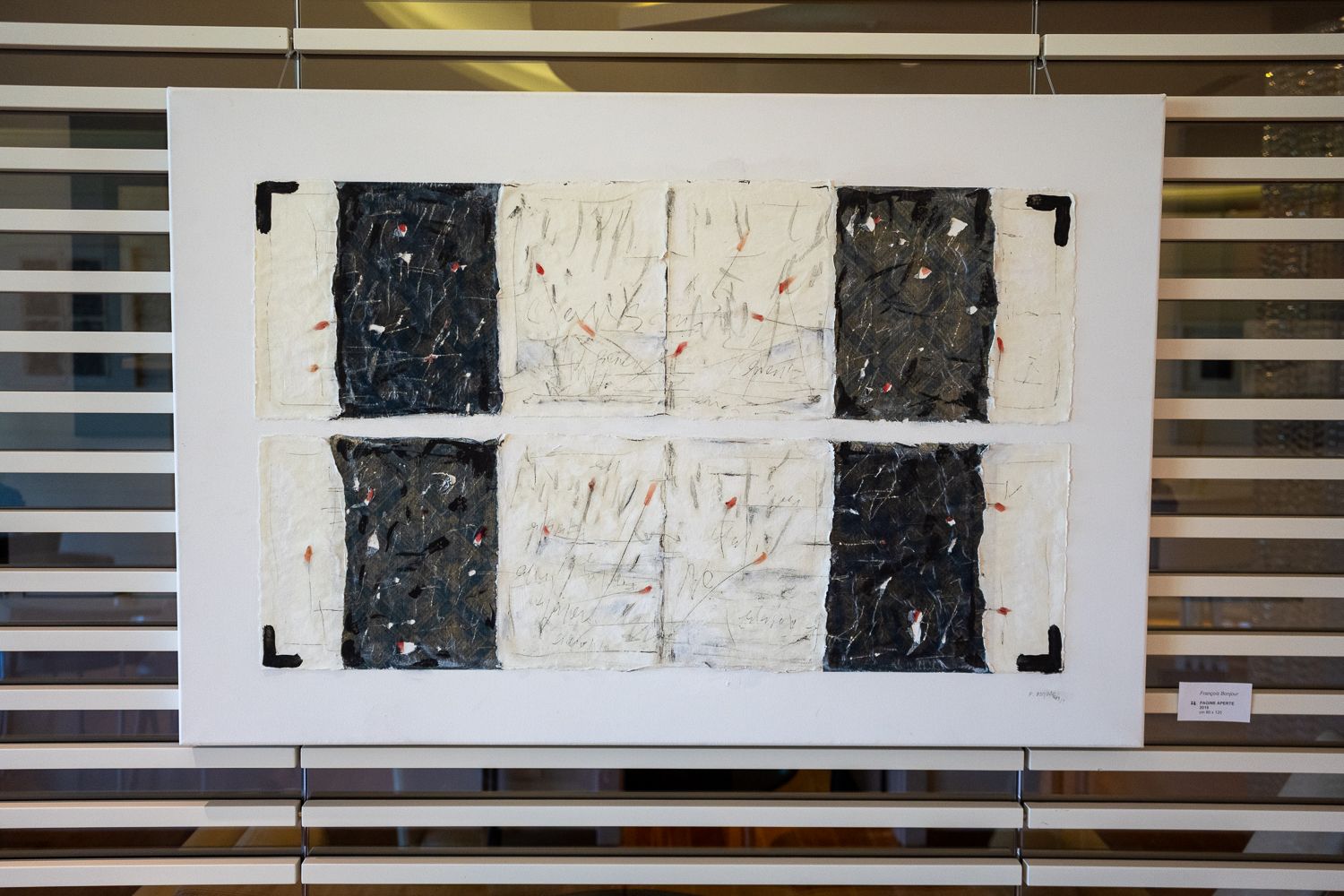
2025
The View Expo
Hotel The View - Lugano
In the exclusive setting of THE VIEW Lugano - a luxury boutique hotel awarded as the best Swiss Design Hotel - an exhibition dedicated to the works of Ticino artist François Bonjour. The exhibition, inaugurated in May 2025, will continue throughout the summer season until October 2025, offering hotel guests and visitors the opportunity to admire a selection of recent works by the artist (several works created especially for the occasion). This initiative confirms THE VIEW Lugano's commitment to promoting art and design: the boutique hotel, already official sponsor of the art fair WopArt in 2018, transforms its spaces into an elegant contemporary art gallery overlooking the splendid panorama of Lake Lugano.
Press Review
2025
Other Places, Other Lives
Serene Gallery - Lugano
Press Review
2024
The Others Art Fair
Torino
Emerging Contemporary Art Fair held in Turin in early November 2024. François Bonjour participated indirectly via the Unique Contemporary gallery in Turin, which exhibited one of his works entitled '48 Clouds' (mixed media on paper, 2023) at its stand. Bonjour's work is in fact included in the catalogue of The Others 2024, signalling his presence in this international collective exhibition. Although not a solo exhibition, the presence of a work by Bonjour in this context indicates his exhibition activity beyond the Swiss borders, in a European context.
Press Review
2024
Segni e Sogni - La Cantina di Muzzano
Muzzano - Ticino
Emerging Contemporary Art Fair held in Turin in early November 2024. François Bonjour participated indirectly via the Unique Contemporary gallery in Turin, which exhibited one of his works entitled '48 Clouds' (mixed media on paper, 2023) at its stand. Bonjour's work is in fact included in the catalogue of The Others 2024, signalling his presence in this international collective exhibition. Although not a solo exhibition, the presence of a work by Bonjour in this context indicates his exhibition activity beyond the Swiss borders, in a European context.
2024
YouNique Fine Craft Art & Design
Lugano
Fifth edition of the exhibition-market, held from 22 to 24 March 2024 at Villa Ciani. François Bonjour was again present as a group exhibitor, together with an international selection of galleries and independent artists. His participation is attested in the official list of featured artists of 2024, which includes 'Francois Bonjour' among the prominent names.
2021
Scritture Dipinte
Biblioteca Comunale
Between reading rooms and bookshelves – from Salita dei Frati to the Cantonal Library in Lugano – François Bonjour's exhibitions often take place in venues where the page takes centre stage. From these intimate settings, the artist returns to Dino's studio and sets off again for museums and galleries, even beyond the border. His practice, which began with oil painting, has gradually opened up to the three-dimensionality of sculpture, following the thread of materials. Paper remains at the centre: not only as a support but as a theme, where chronicles and memories re-emerge – newspapers and books, letters and messages, codes, stamps and seals – recomposed in a visual cadence that restores the intelligence of things. The exhibition in the display windows on the -1 floor of the Cantonal Library of Lugano, curated by Dalmazio Ambrosioni and open until the end of October, makes this method clear: the painted papers are born from saved books and codices, reopened to life; laid-out texts become surfaces to be reread with markings and colour; ancient and contemporary calligraphy meet; yellowed covers and dust are transformed into texture. The same love for the page resonates in the volumes and pages dedicated to the artist: exchanged reflections, critical readings, shared notes. Everything converges at one point: for Bonjour, the world of books is not a simple archive, but the living terrain of his painted writings, where curiosity and a desire for knowledge fuel every formal choice.
2020
L'intelligenza segreta delle cose
Biblioteca dei Frati - Lugano / Catalogo
The exhibition L'intelligenza segreta delle cose (The Secret Intelligence of Things) by François Bonjour, curated by Fabio Soldini and Alessandro Soldini, was held at the Biblioteca Salita dei Frati in Lugano from 13 February to 28 March 2020. The introductory catalogue highlights the artist's long-standing research into artist's books and the reinterpretation of the written page as a means of expression. Bonjour uses paper, antique books, fragments of fabric, string, iron, red wax and other everyday objects, transforming them into works that combine text and image. Books rendered illegible and imprisoned in wax or iron cages, pages overwritten with indecipherable signs: his works become “maps” of an ideal journey in search of a hidden meaning, that secret intelligence of things suggested by the title. The introductory texts evoke literary references – such as Jorge Luis Borges' short story The Book of Sand – to emphasise the infinite and mysterious nature of these works, and quote a poem by Amedeo Anelli that invites us to seek the “design of the world” hidden in things. The artist himself, in the text La Biblioteca dei Segni (The Library of Signs), describes his process as a collection of fragments of life to save traces and memories that the frenzy of the present risks erasing, inviting the public to join him on this journey of discovery.
2018
Must Gallery
Lugano
2017
Torchio di Sonvico
Sonvico
The narrative power of matter
by Alessia Brughera
The exhibition at the Torchio delle Noci in Sonvico traces the salient stages of the long research of François Bonjour, an artist by adoption from Ticino whose work defies any classification. Between references to Surrealism, Arte Povera and visual poetry, an autonomous poetics based on expressive freedom and coherence of language emerges. Bonjour combines painting, writing and sculpture in a continuous dialogue between word and matter, building layered compositions where common objects - paper, wood, glass, ropes - become fragments of memory and meditations on time. Writing, a recurring element, insinuates itself as a sign and as a voice, inviting a personal reading of the work. His recent works, particularly those with red wax, recall the playful and conceptual spirit of his early works, transforming irony into a metaphor for the contemporary condition. With his poetic and visionary language, Bonjour constructs small universes in which matter and words coexist, offering a place in which to collect, reflect and narrate.
It is not easy to label François Bonjour's works: they contain references to Surrealism, Dadaism, Informal art, Arte Povera and visual poetry, but the truth is that they defy any attempt to place them in a specific artistic context, being first and foremost an expression of their author's desire to experiment and his complete freedom of expression. Testifying to the ability of the artist, who has made Ticino his home, to develop a unique style that has always been free from constraints or conventions is an exhibition currently on display in the characteristic spaces of the Torchio delle noci in Sonvico, a small retrospective aimed at presenting the salient stages of Bonjour's decades-long career. The works collected in this exhibition weave a tapestry that reveals the dynamics and developments of an artistic quest whose strength lies in its consistency. This quest, which has been ongoing since the 1970s, is characterised by a continuous deepening of his own language and a resolute advance that has been able to renew itself by drawing vital nourishment from comparison and reflection. Bonjour works through matter to achieve a natural fusion between painting, writing and sculpture, charging his creations with universal significance and involving the viewer in a narrative dense with meaning, the understanding of which allows one to enter a world that is sublimated but at the same time strongly anchored to reality. In his works, words meet images, objects meet surfaces, generating spaces to be explored with the eyes and the mind, territories populated by a tangle of colours, materials and traces that become fragments of existence and meditations on time. The artist organises them skilfully, marking their rhythm, calibrating their parts and weighing their proportions so that every detail has a specific role in the unfolding of the story. The result is small stages in which the human story is narrated not by a single object but by the layering of several elements, always carefully chosen, which establish relationships of tension and correspondence with each other. A refined and witty narrator, Bonjour thus encourages us to look beyond appearances, to enter the recesses of material and chromatic agglomerations, to go beyond the jumble of imprints to reach a reality that encompasses truth and vision. There is no preciousness in Bonjour's work: the tools with which he brings his language to life belong to everyday life, they are relics of the everyday that are invested with new values. Paper, cardboard, wood, Plexiglas, glass and string are combined, aggregated, amalgamated with colour and often juxtaposed with writing, which has been an integral part of the artist's work for many years now. Writing that silently enriches the composition in the form of flowing calligraphy, newspaper clippings and book pages, outlining a fluid and elegant microcosm of signs in which the word, whether it be a lived-in vocabulary or a purely aesthetic trait, presents itself as an exhortation to freely interpret the painting. Among the most recent results, the exhibition features a number of works created in 2017 that have the flavour of a return to the origins. These are works that conceptually recall the creations of the 1970s, animated as they are by the same playful spirit and the same desire to subtly prod our thinking through allusions that become playful metaphors for our era. Of particular interest are the works featuring red wax, an element very dear to Bonjour, which, with its vivid presence, is capable of blending with other materials, stimulating the combinatorial fervour of the composition. With his evocative and mysterious, genuine and ironic language, Bonjour creates poetic universes of signs and substances, memories and feelings. His works become both content and container, as if to say that there is still a safe place, a suitable place, to gather, reflect and, above all, tell stories.
2015
Galleria Totem - Il Canale
Venezia
In her essay Le città parlanti (Talking Cities), Chiara Gatti interprets François Bonjour's work as a poetic atlas of imaginary cities, in which architecture, memory and language merge into a visual narrative steeped in literary and mythological references. The dense and visionary text evokes a parallel with Italo Calvino's Invisible Cities: places suspended between dream and ruin, between matter and word, populated by voices, signs and fragments of existence. Bonjour's “cities” are not landscapes to be inhabited, but narrative organisms constructed from the materials of memory — papers, books, fragments of wood, pigments, powders and writings — which the artist assembles like an archaeologist of vision. Each work becomes a story: walls become pages, windows become words, roofs and thresholds are transformed into spaces of dialogue between the visible and the invisible. In his canvases, painting mixes with writing and colour with calligraphy, giving life to a language in which the city is at once body and thought, architecture and emotion. Gatti emphasises how Bonjour's compositions seem to breathe the same tension as ancient maps: fragile and poetic tracings that encapsulate the destiny of modern man, suspended between construction and decay. His cities, “silent and speaking”, preserve the stories of time in their walls and the music of the wind and lost voices in their silence. In this ideal Venice, evoked by the rhythm of his canvases, Bonjour constructs a geography of memory: a map of the soul where the remains of words and matter become architectures of thought, testimonies of a world that continues, despite everything, to want to speak.
2015
Galleria Unique
Torino
In his essay Risposte nella polvere (Answers in the Dust), Luca Beatrice explores François Bonjour's universe through the lens of memory and writing, recognising the Swiss artist as a collector of signs and words that resist the digital silence of contemporary life. In an era dominated by incessant flows of data and ephemeral messages, Bonjour draws attention back to objects, materials and manual skills as places of memory recovery and poetic resistance. His works stem from an obsession with books and a fascination with the written word, elements that intertwine in a layered visual language, where collages, letters, numbers and clippings compose narratives of thought and fragments of life. Beatrice describes her works as “pills of humanity” saved from the shipwreck of contemporary communication: fragments of time, history and imagination that, through the artist's gesture, become messages of salvation. Bonjour moves between painting and sculpture, turning the book into a three-dimensional object, suspended between word and form, to be observed rather than read. In her illustrations and collages, the artist constructs universes of quotations and memories, in which the image dialogues with the letter and the material becomes a poetic medium. Beatrice recognises in Bonjour an ideal heir to Nouveau Réalisme and the poetics of Arte Povera, capable of reworking the languages of the past in a contemporary key. His works are “answers in the dust”: fragile but luminous traces, testimonies of a humanity that still seeks meaning in the chaos of hyper-connection, and finds its own form of truth in the slowness of gesture and the density of matter.
2014
Gli Eroici Furori
Milano / Catalogo
In her text La biblioteca della natura universale (The Library of Universal Nature), Chiara Gatti describes François Bonjour's work as a poetic journey into the memory of books and the substance of time. The artist appears as a contemporary archaeologist who digs through the ruins of paper knowledge — bindings, registers, yellowed papers — to restore life and dignity to what the digital age has relegated to oblivion. In his works, books and fragments are transformed into visual landscapes, places suspended between past and present, where dust becomes colour and the page opens like a window onto memory. Bonjour constructs an imaginary library populated by signs, words, papers and wood that become artefacts, symbols of knowledge that is not lost but transfigured. Gatti describes his works as “chambers of time” in which the artist's gesture — as precise as that of an entomologist — preserves, catalogues and at the same time reinvents. In this vision, the book is no longer an object to be read but to be inhabited: a garden where words intertwine with leaves and paper breathes like a living organism. Between quotations from Hesse and Pennac, the text recognises Bonjour as a collector of emotions and a guardian of memories, capable of transforming the past into a sensory experience. His works do not archive, but sow: they are pages of sand, wood and ink that germinate meaning, opening passages between word and matter, between memory and presence. In this “library of universal nature”, each of Bonjour's works celebrates the survival of silent beauty and the freedom of thought that continues to write, even when everything seems already written.
2011
Le finestre incantate - Spazio Ambiente
Locarno / Catalogo
In his essay Le finestre incantate (Enchanted Windows), Dalmazio Ambrosioni describes François Bonjour's painting as an art capable of raising profound and unsettling questions, of restoring an aura of mystery and wonder to everyday objects. The works in the 2008–2011 cycle — pictographs and accumulations of signs, Plexiglas, paper, pigments and light — are interpreted as windows opening onto a world suspended between reality and imagination, memory and vision. Bonjour reworks simple materials and common objects to construct a symbolic language where architecture and writing, research and surprise merge. Ambrosioni emphasises how the artist renews the very meaning of modern painting, making the process of experimentation his poetic signature: each painting is a laboratory of forms and memories, a place where art questions its own destiny and essence. His images evoke the legacy of the “giants” of art, from Romanesque cathedrals to the masters of the 20th century, transforming memory into living form. Bonjour paints like a visionary who constructs maps of knowledge and light: transparent surfaces that allow time and space to filter through, where painting becomes luminous writing and light itself takes on narrative value. Ambrosioni interprets this poetics as “wandering writing”, in which matter becomes sign and light becomes thought. Bonjour's enchanted windows not only show what is visible, but also offer a glimpse of the invisible: a gateway to elsewhere, where art still retains its function of revelation, memory and dream. An art that does not describe, but questions — and which, precisely for this reason, enchants.
2010
Galleria Ostrakon
Milano / Catalogo
In her essay Il quartiere delle montagne (The Mountain Neighbourhood), Chiara Gatti describes François Bonjour's poetic universe as a landscape of the soul, in which mountains become a metaphor for memory and human experience. Like a modern romantic traveller, the artist climbs the slopes of time in search of traces, fragments and ruins that reveal the fragility of contemporary civilisation. Gatti opens with an evocative “preface” that links Bonjour's artistic journey to that of the great European storytellers and painters – from Stendhal to Friedrich, from Bruegel to Segantini – to emphasise how his works are nourished by the same tension towards the sublime and the mysterious. Bonjour's mountains are not places to climb, but inner landscapes, shattered cities and rebirths, guardians of lost memories and silences laden with presences. Through papers, pastels, collages and fragments of humble materials, the artist constructs a repertoire of “poetic ruins” that evoke the echo of a vanished world. Each work is an archaeology of vision: an attempt to save the beauty scattered in the rubble of everyday life. Bonjour digs, collects and preserves — like a patient archaeologist of the contemporary world — shards of memory and small finds that become relics of a shared imagination. Gatti captures in his painting the ability to transform destruction into rebirth, loss into narrative, matter into emotion. His “mountains” are pocket-sized fairy tales, dioramas of our time, in which fragility and resistance coexist. Bonjour's art thus appears as an act of salvation: a slow, poetic reconstruction of the crumbling cities of human memory.
2010
Galleria Mazzi
Tegna / Catalogo
In his essay Un parlare che da secoli dura (A discourse that has lasted for centuries), Claudio Guarda traces the most recent evolution of François Bonjour's work, identifying in his painting an internal rhythm that becomes language, memory and visual song. His research appears to be permeated by a musical aura, where sign, form and colour intertwine like voices in a musical score. Bonjour transforms gesture into writing, line into sound, the pictorial surface into a page traversed by a continuous flow of unspoken but perceived words. The author recognises a poetic and formal maturation in the production of the 2000s: the sign, freed from mere representation, becomes autonomous “writing of thought”, in which the rhythm of colour and the breath of gesture become the substance of painting itself. Works such as Messaggio con fessura (2009) reveal a language that tends towards visual poetry: textures of signs, fragments of memory, vibrations of time and space that speak of the deepest human experience. Guarda observes how Bonjour's painting, while moving within the territories of abstraction, never severs its link with sensible reality and the memory of things. Subsequent cycles — such as that of Finestre (Windows) — literally open passages between interior and exterior, between visible and invisible, transforming the surface of the painting into a perceptual and spiritual threshold. In his free and rhythmic language, Bonjour seems to construct an uninterrupted dialogue between painting and life, between gesture and word, between the present time and the memory of the world. A language that, as Guarda writes, “has lasted for centuries”: a pictorial voice that continues to question existence through the silence of colour and the music of the sign.
2009
Totem - Il Canale Mazzi
Venezia / Catalogo
2009
Galleria Bertoni
Zurigo / Catalogo
2008
Chiesa San Rocco
Ponte Capriasca / Catalogo
In his essay La modernità della contraddizione (The Modernity of Contradiction), Gianluigi Belleri interprets François Bonjour's work as a journey into man and his deepest tensions, a journey that transforms painting into a mirror of the contradictions of modernity. The author opens the text with a historical parallel between the Renaissance utopia of the “ideal city” — a symbol of harmony between interior and exterior — and Bonjour's contemporary research, which subverts that classical order to restore the complexity and fragmentation of our time. Bonjour's works are born as pages in which gesture becomes word, sign becomes writing, and the pictorial surface becomes a field of relationships. In their rhythmic and musical construction, the signs intersect like alphabets of meaning, generating a visual narrative that is both intimate and universal. The artist explores the relationship between space and body, between matter and spirit, between inside and outside, pushing painting to become a sensory experience and meditation. Belleri highlights how, in his latest works, Bonjour's “windows” open onto collective spaces, transforming the painting into a metaphor for communication and passage. His surfaces become permeable membranes between reality and imagination, between vision and memory, between tension and calm. In his layered and rigorous language, Bonjour represents contemporary man torn between the desire for perfection and the awareness of his limitations. His work thus arrives at the “modernity of contradiction”: a painting that embraces doubts and hopes, harmony and dissonance, becoming an authentic reflection of the anxieties and yearnings that sustain the life of modern man.
2008
Banca del Sempione
Chiasso / Catalogo
In his essay Le “paginae pictae” di François Bonjour, Dalmazio Ambrosioni analyses the artist's painting as a progressive and coherent journey, a continuum of matter, space and thought in constant dialogue between reality and imagination. Bonjour's work, writes Ambrosioni, moves in two parallel and complementary directions: that of space — understood as a boundless horizon that escapes the eye to project itself into the inner dimension — and that of time, perceived as a flow that unites past and present, memory and perception. Bonjour's painting is dynamic and musical, constructed like a score of signs, rhythms and correspondences. The images do not represent, but “happen”: they become places of transit between the visible and the imagined, between the substance of matter and the lightness of thought. Ambrosioni defines this tension as a “classical vertigo”, in which the rigour of the formal structure merges with the energy of the gesture and the need to question the very meaning of painting. The materials — wood, glass, Plexiglas, paper, pigments — are tools of a quest that spans the centuries, capable of uniting the legacy of myth and humanistic tradition with contemporary experimentation. Light and colour, the absolute protagonists, act as spiritual and constructive forces: blue, in particular, becomes a symbol of an upward tension, an idea of infinity that is neither sky nor sea, but luminous thought. The painted surfaces are transformed into “written pages”, where the graphic sign takes on linguistic value and painting becomes a form of writing, visual memory and poetic code. Ambrosioni places Bonjour in the tradition of “painting-writing”, heir to the ancient medieval “paginae pictae” and Renaissance sinopias, but open to the influences of modern and American art — from Rothko to Twombly, from Motherwell to Ryman. In this synthesis of gesture and language, Bonjour's painting does not represent an object, but a thought written in matter: an act that is both poetic and cognitive, where sign, colour and light recount the human condition as a tension towards the infinite, memory and dreams.
2007
Macelleria D'Arte
St. Gallo / Catalogo
In his essay Messages from Infinity, Walter Schönenberger interprets François Bonjour's painting as a language that combines writing and matter, gesture and memory, in a continuous oscillation between rigour and mystery. The works in the cycle analysed are divided into two families: on the one hand, light papers and “cursive messages” — quick, instinctive marks, close to automatic writing — and on the other, works on canvas, board and cardboard, which are denser and more structured, where the mark becomes construction and architecture. Bonjour composes his surfaces like pages of an infinite book, in which words, strokes and incisions become windows of light, openings onto the mystery of time. The artist constructs “grilles” and scaffolding of signs, crossed by lines and overlaps that recall ancient alphabets, engravings and lost codes. Music and rhythm intertwine in these textures, evoking a continuous flow between past and present, matter and spirit. Schönenberger emphasises the poetic and symbolic dimension of colour: white and ochre as sand and memory, the black of writing as an echo of thought, the red of flames as vital energy. Everything in Bonjour's works appears as a “rediscovered book” whose key to understanding has been lost, a mysterious text that the artist recomposes through the act of painting. His works are thus “messages from infinity”: traces of an archaic and universal language, painting as a writing of knowledge and silence, capable of bringing out fragments of life and spiritual resonances from time. Bonjour transforms painting into an unknown but familiar language — a visual music that speaks to the deepest memory of man.
2005
Compagnia del disegno
Milano / Catalogo
2004
Cavallier Pellanda - Antologica
Biasca / Catalogo
Claudio Guarda's critical essay, L'attimo fuggente tra pittura e scrittura: capitolo di un percorso (The fleeting moment between painting and writing: chapter of a journey), accompanies François Bonjour's work as a retrospective and at the same time current reading of his artistic research, seen as a long dialogue between painting, sign and word. The author identifies a phase of renewed expressive intensity in the artist's most recent production, in which previous experiences converge — from his figurative beginnings to his experimentation with multiple materials, up to the abstract-lyrical syntheses of his more mature years. Guarda analyses Bonjour's journey as a continuous tension between form and freedom, instinct and structure, matter and sign. His pictorial language, born of a gestural impulse and poetic urgency, gradually transforms into a complex system of relationships between lines, colour, rhythm and space, capable of blending the mobility of painting with the temporal scanning of writing. The result is a form of painting that reflects and absorbs the memory of the gesture, becoming “visual writing” and painted time. The text also emphasises how Bonjour's research moves between abstraction and figuration, between lyricism and formal rigour, finding the poles of a dynamic balance in the lightness of the mark and the density of the material. In his last season, the artist seems to have reached a full awareness of his own language: an essential, free painting, where rhythm becomes the absolute protagonist and form is transcended in a poetic gesture that unites music, word and image.
2004
Galleria "Fondazione Patelli"
Locarno / Catalogo
2004
Galleria "La colomba"
Lugano / Catalogo
2002
Banca Intermobiliare di Investimenti e Gestioni
Lugano / Catalogo

